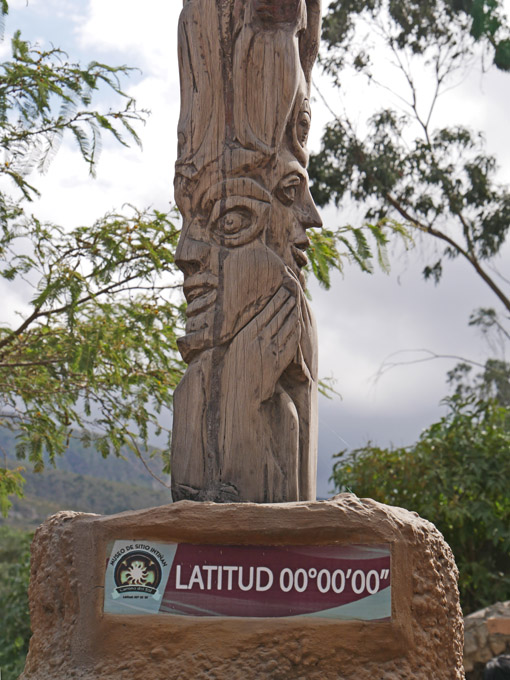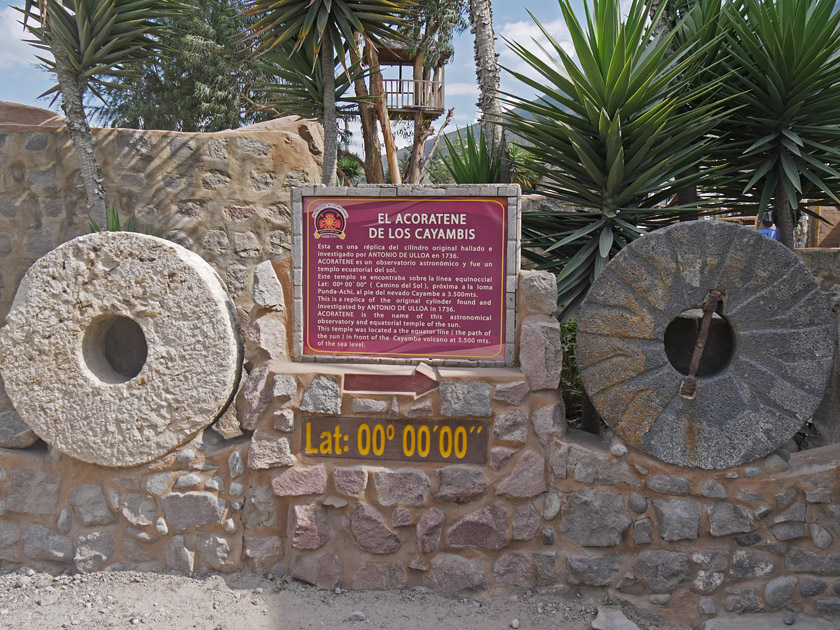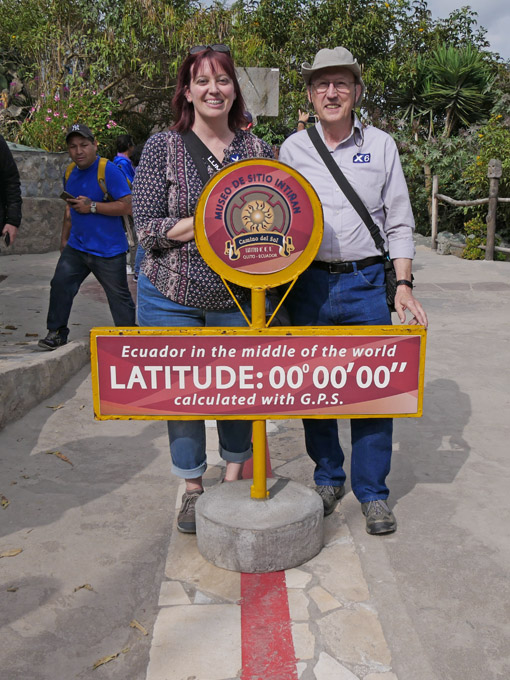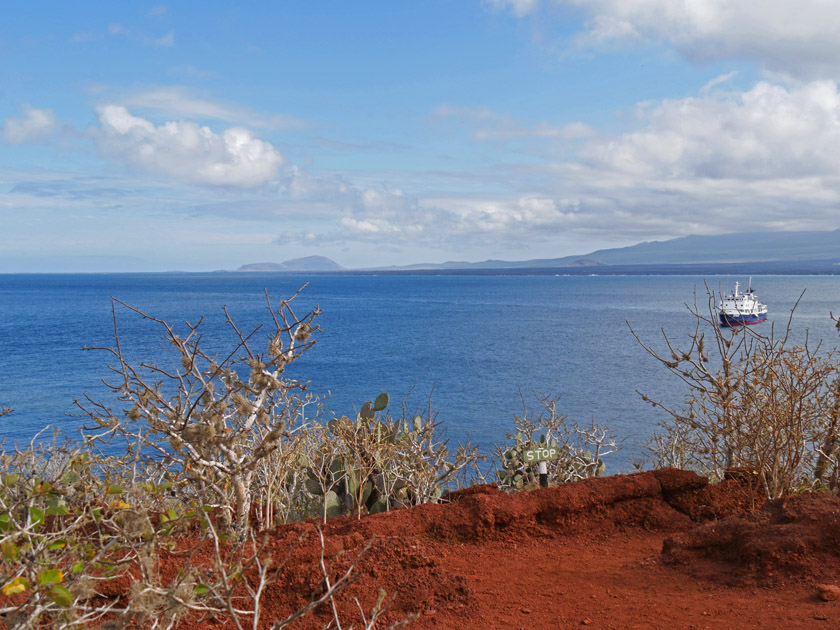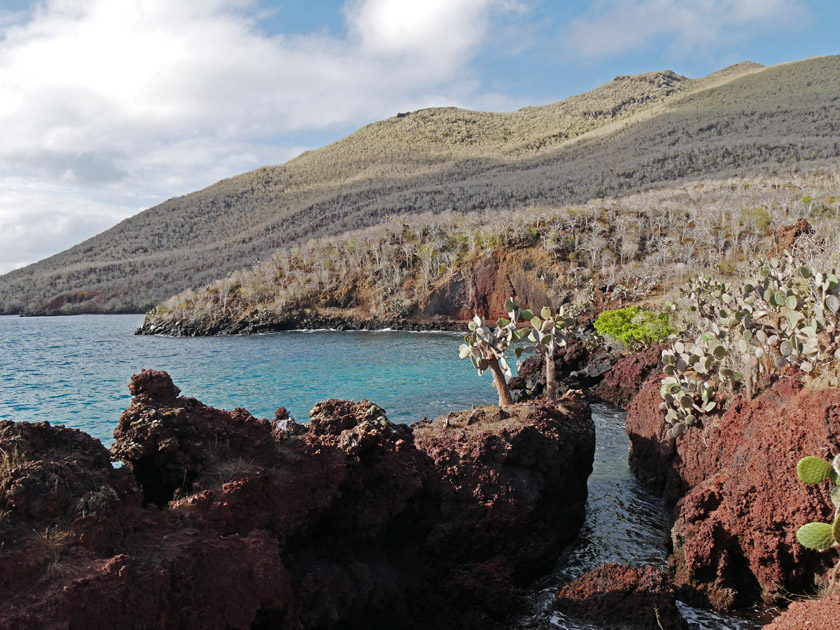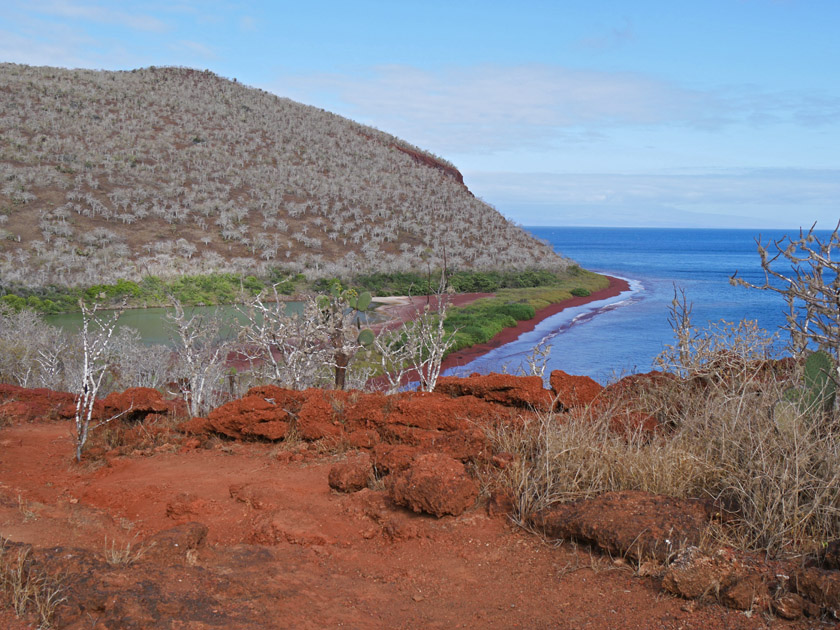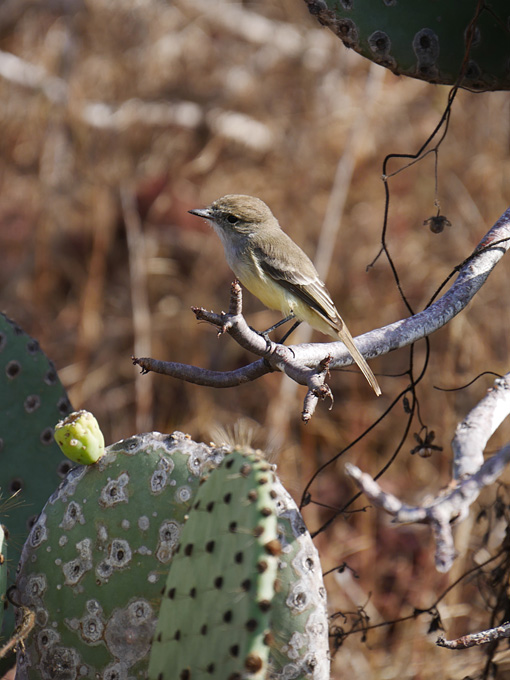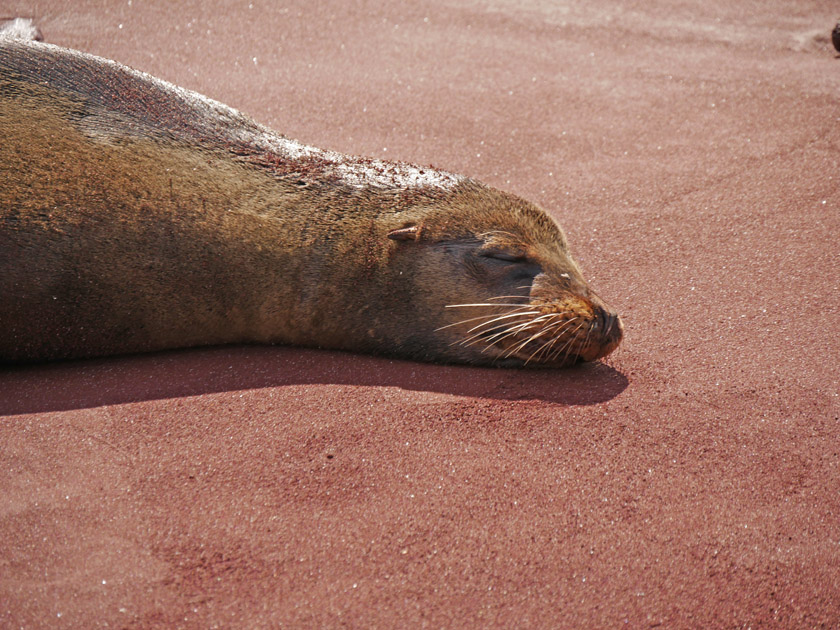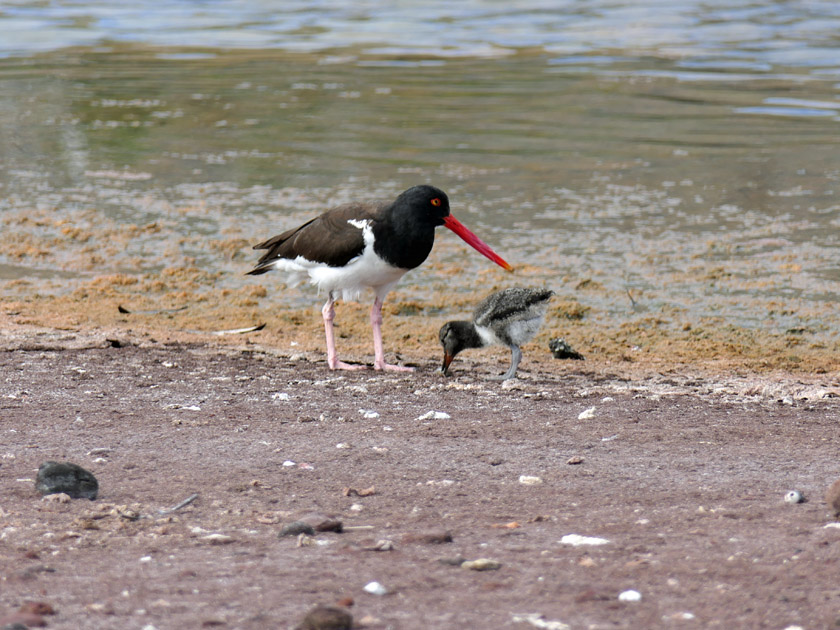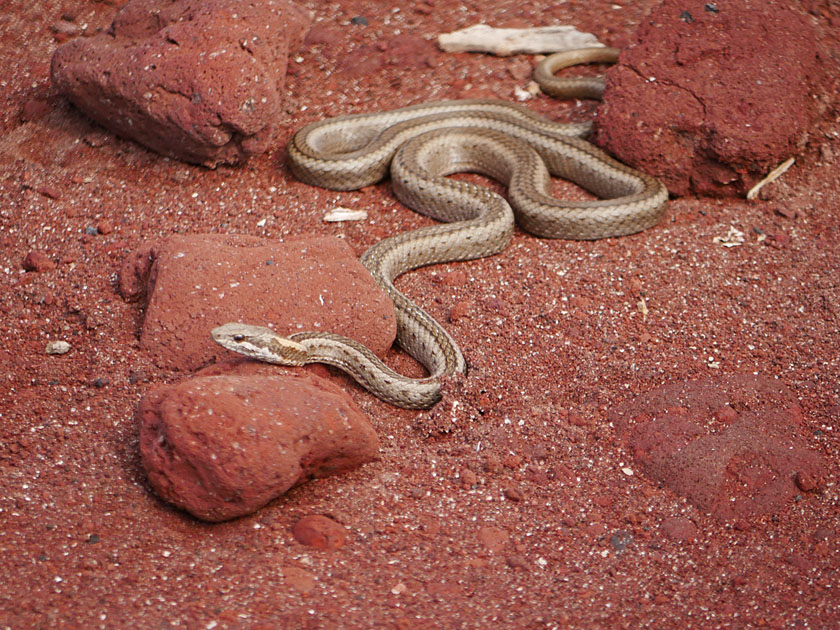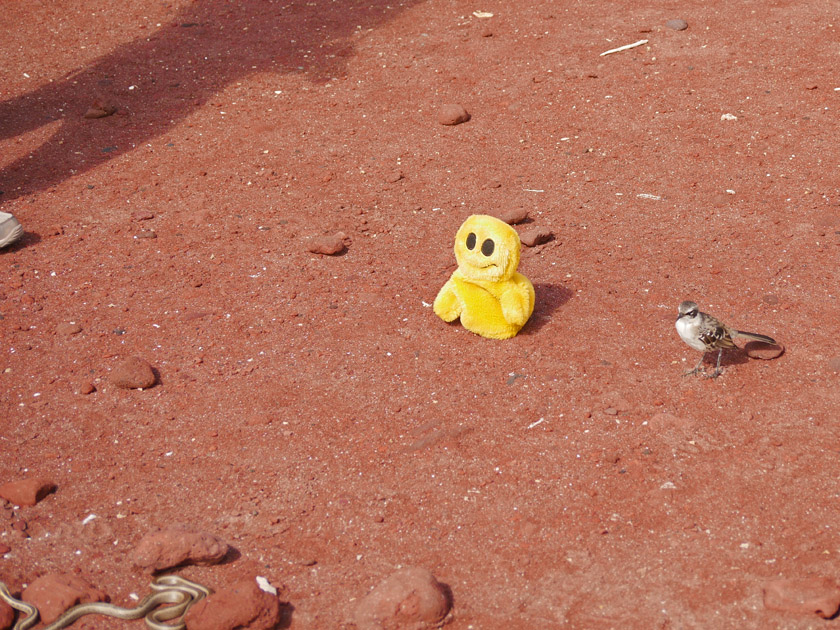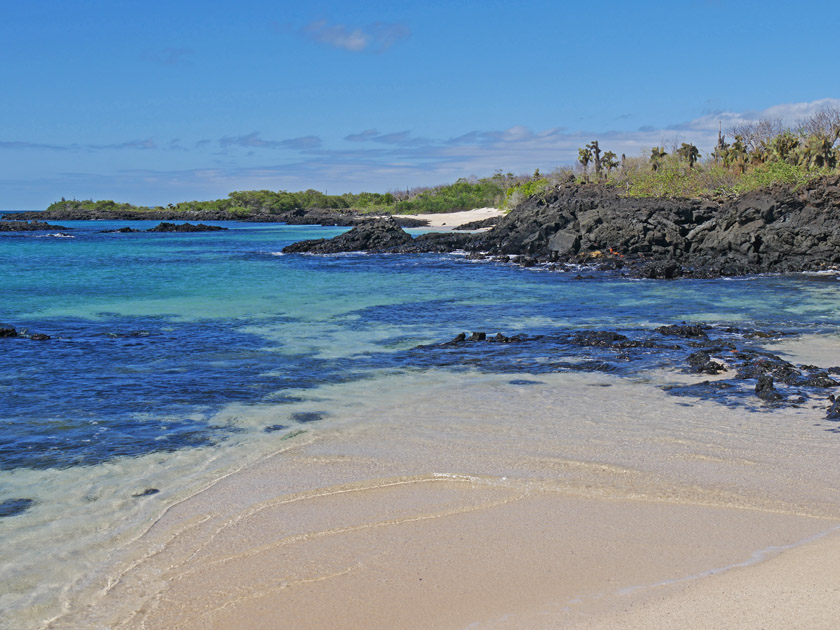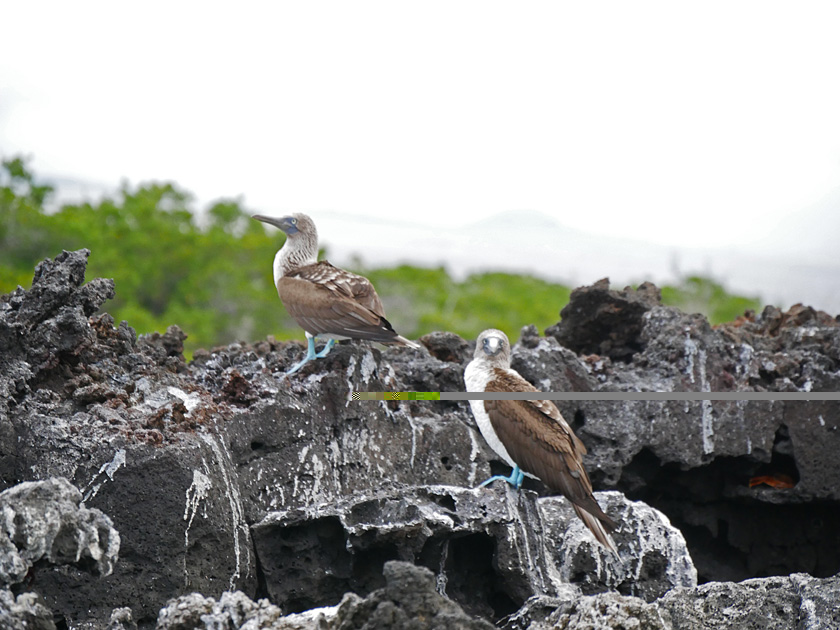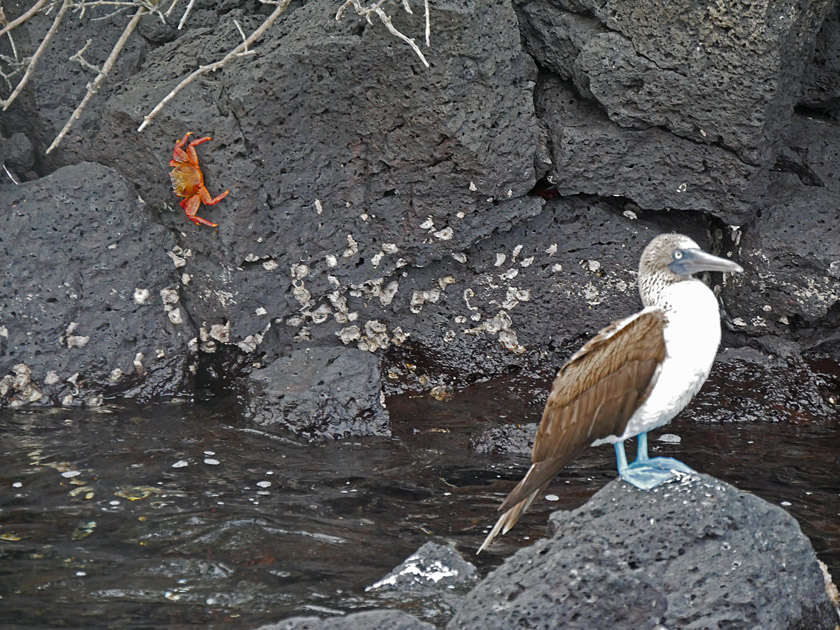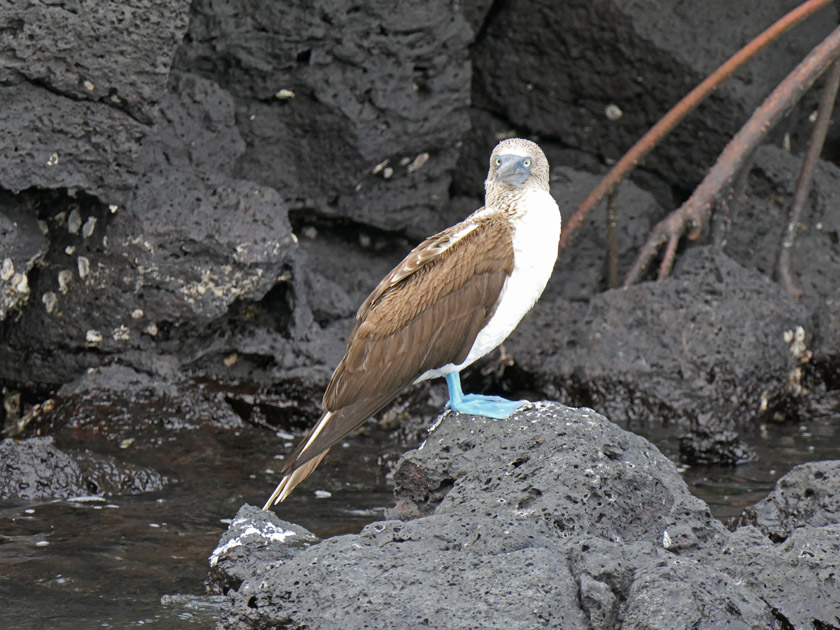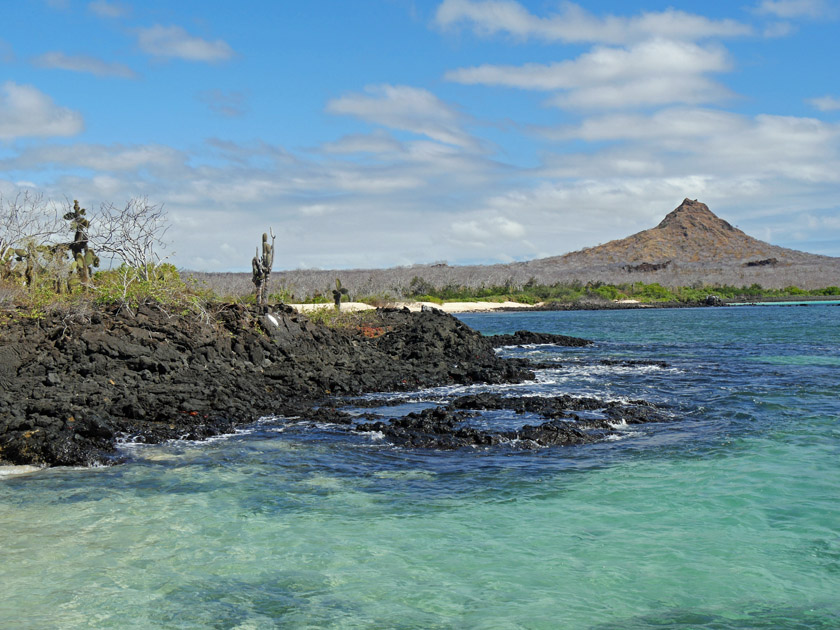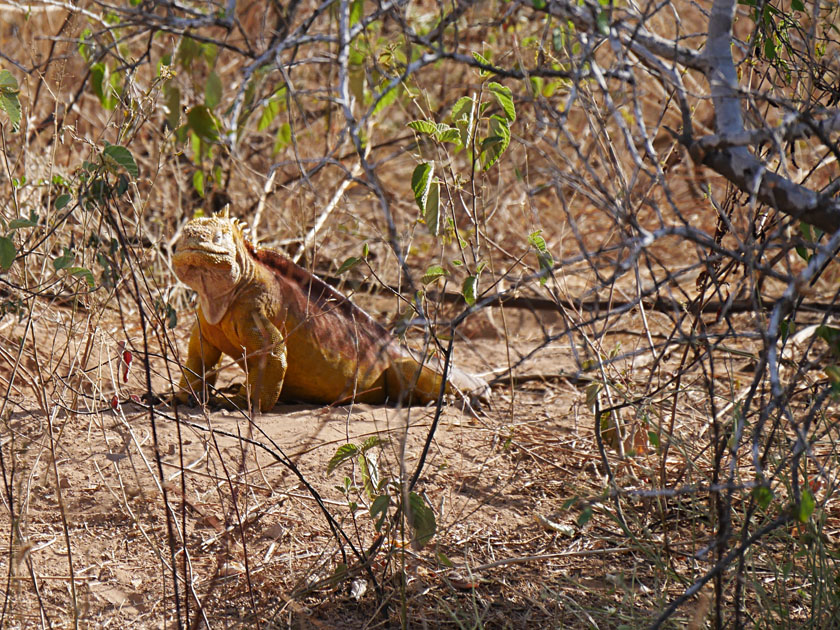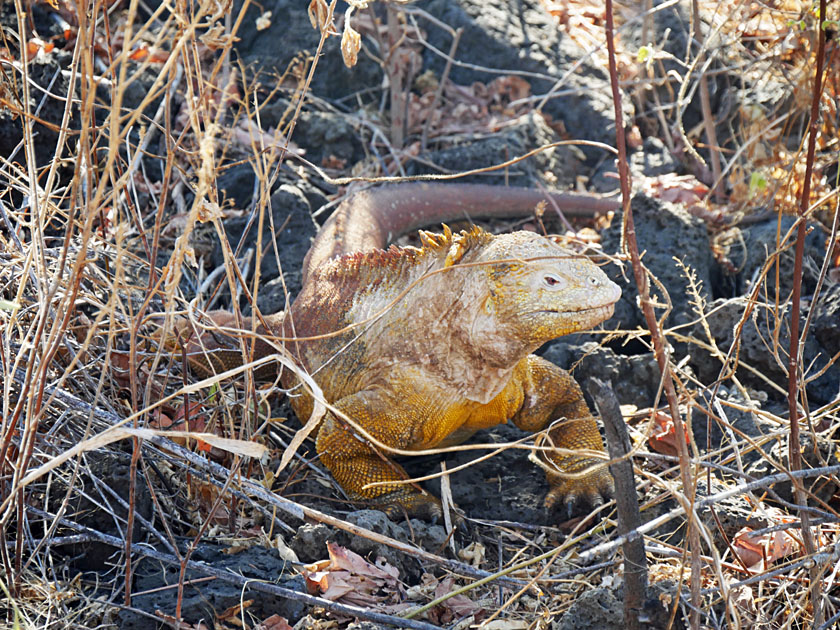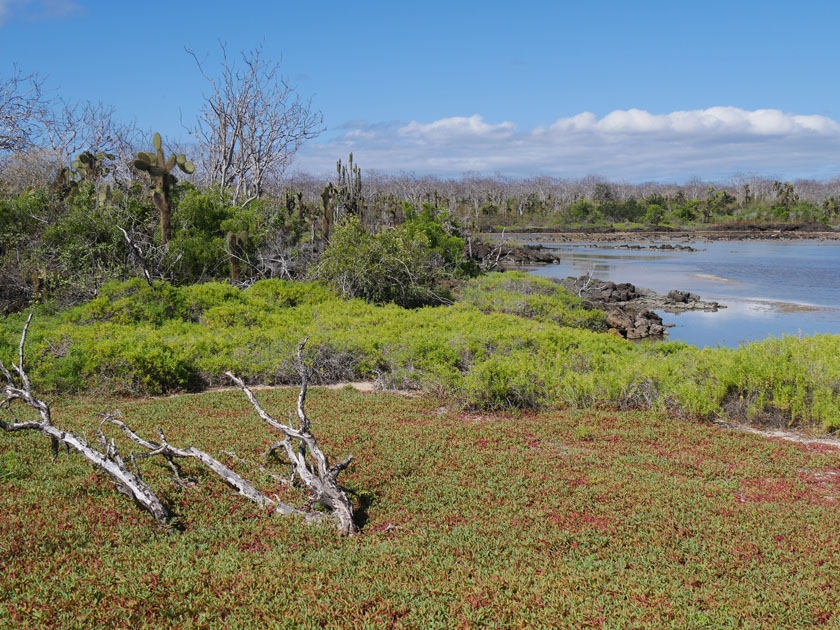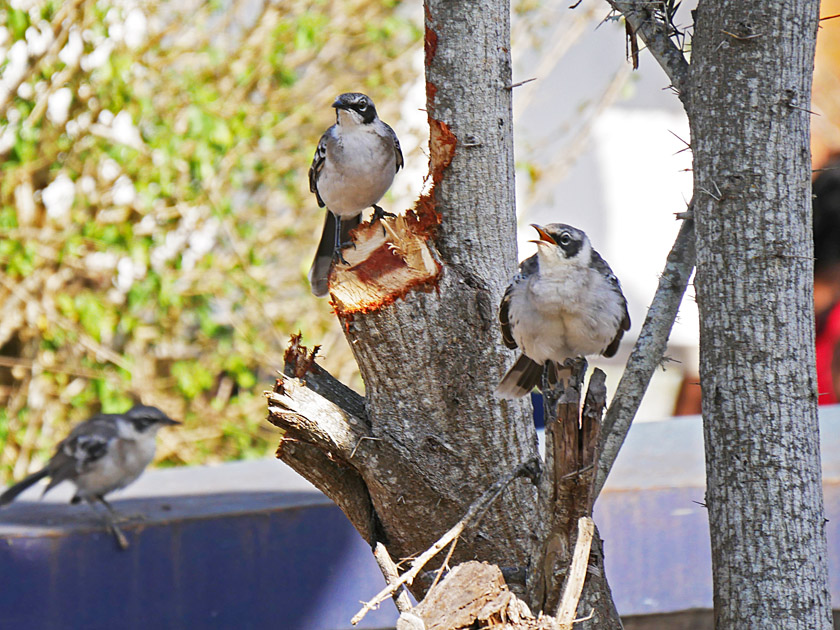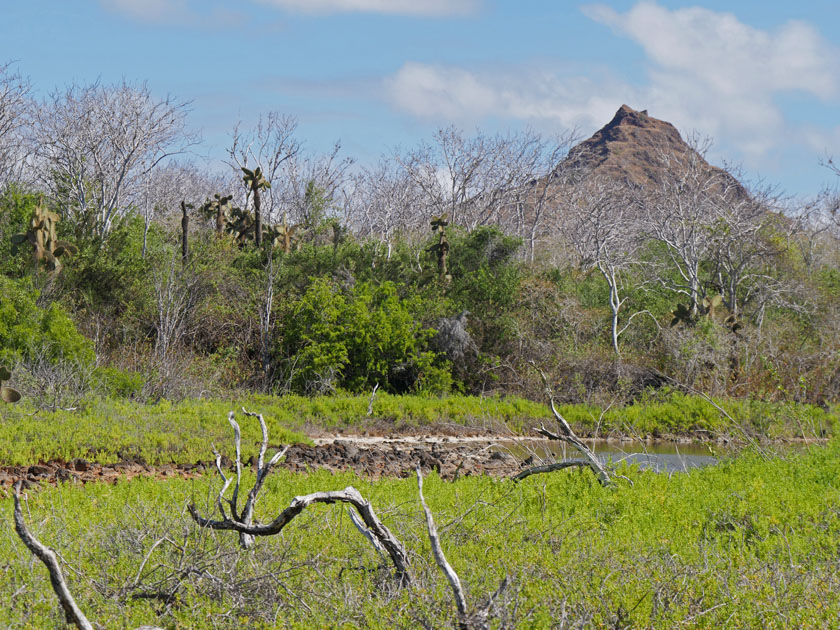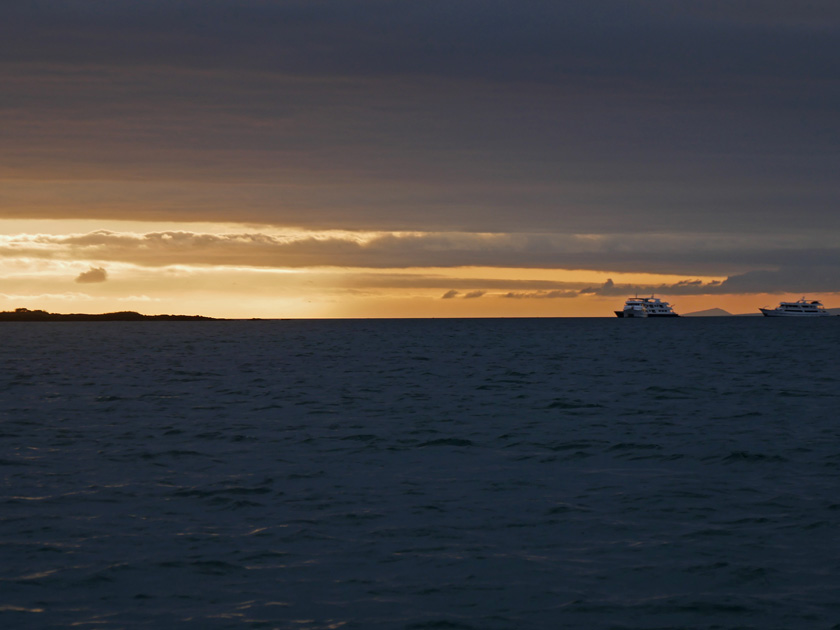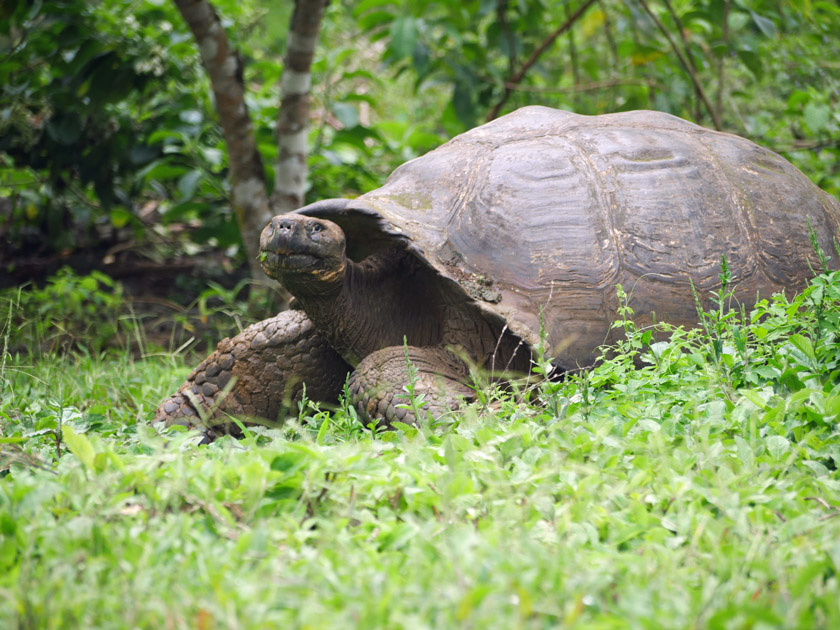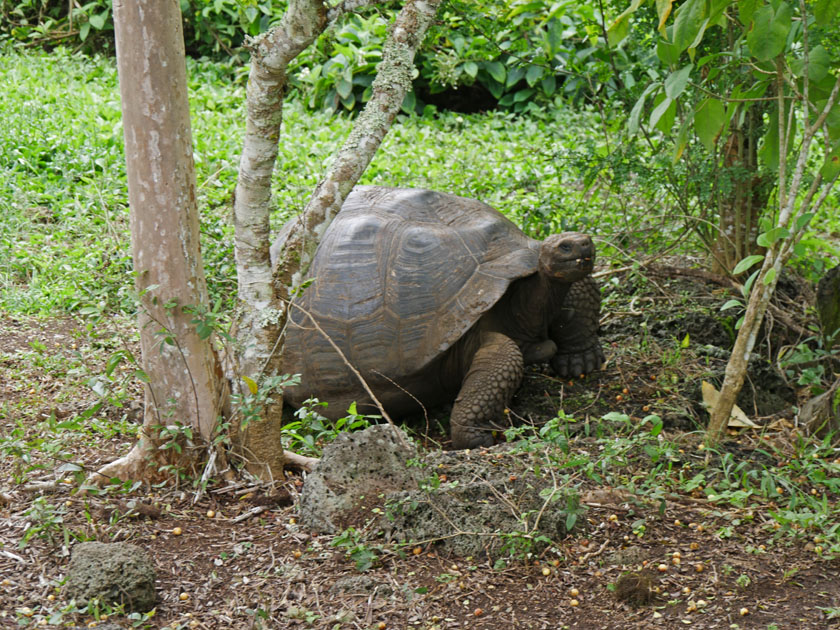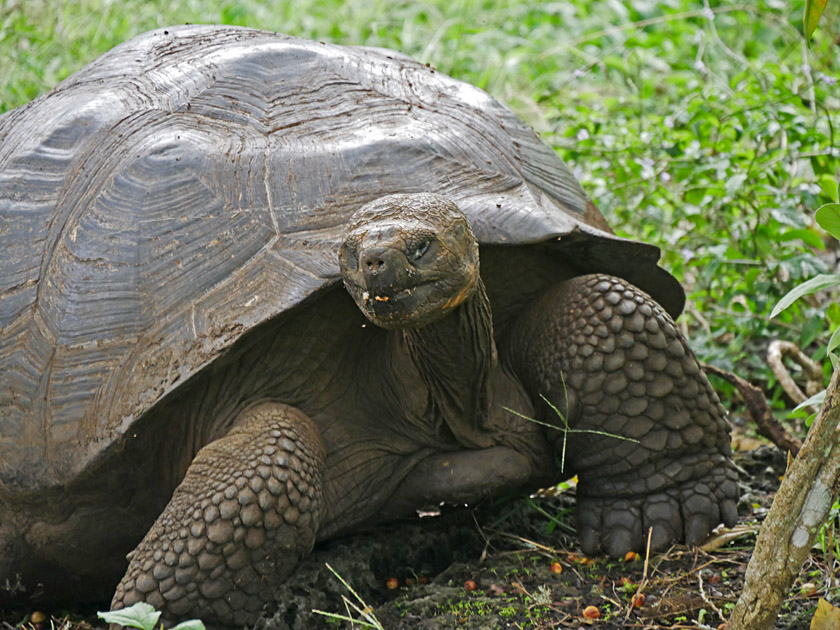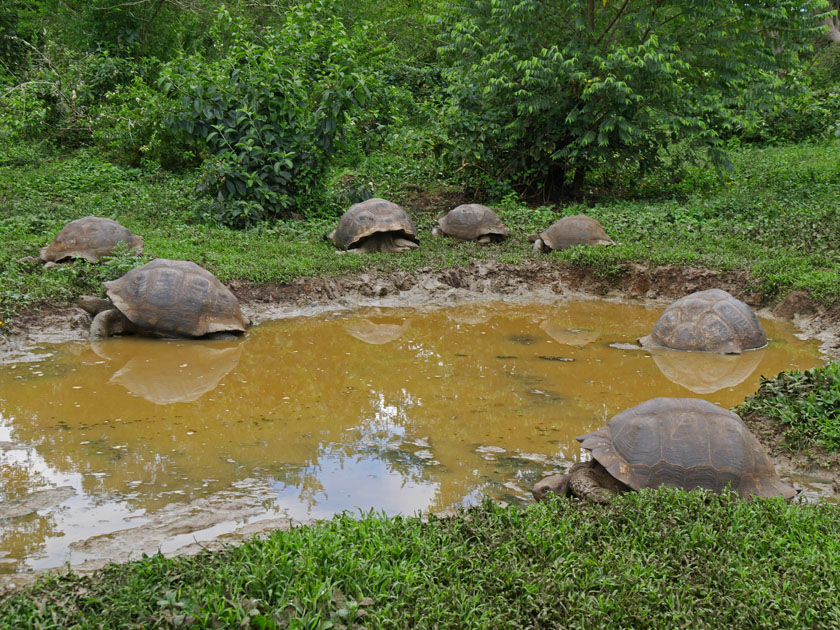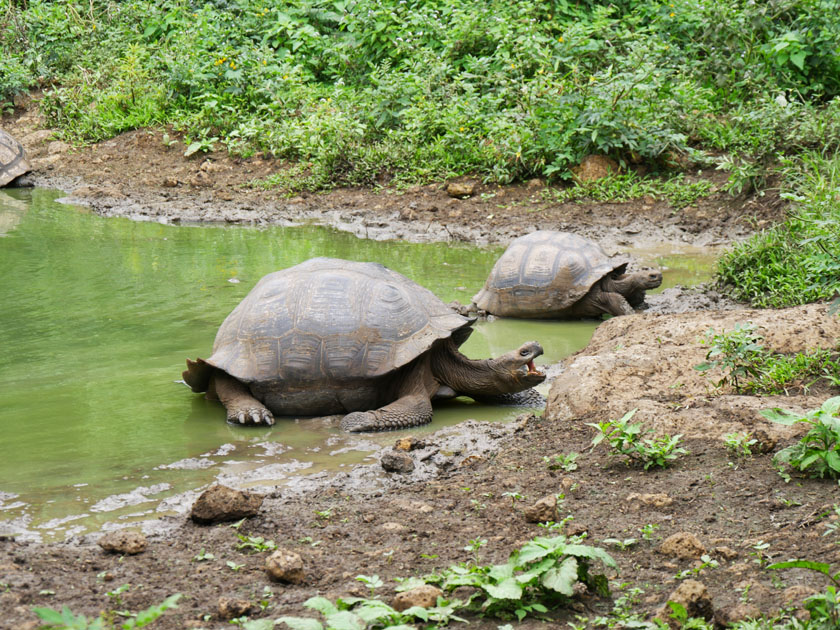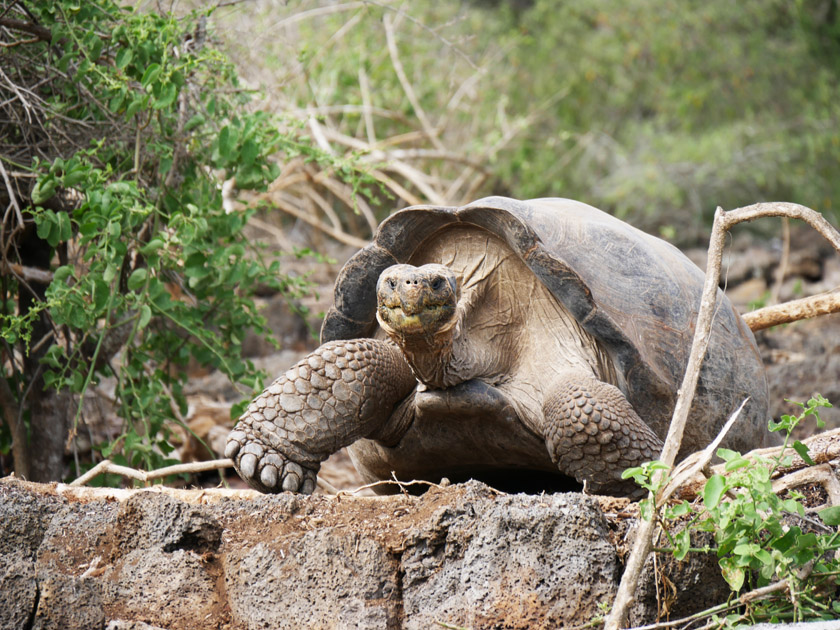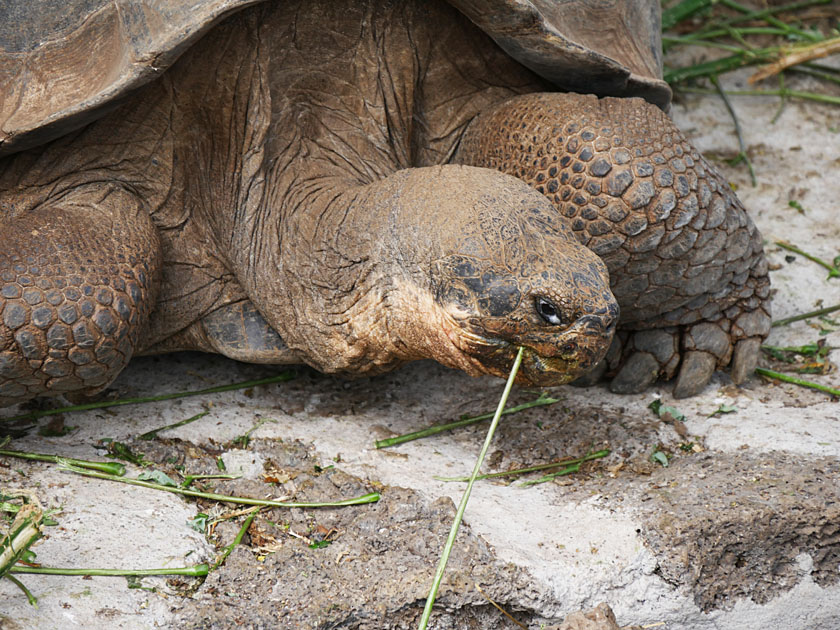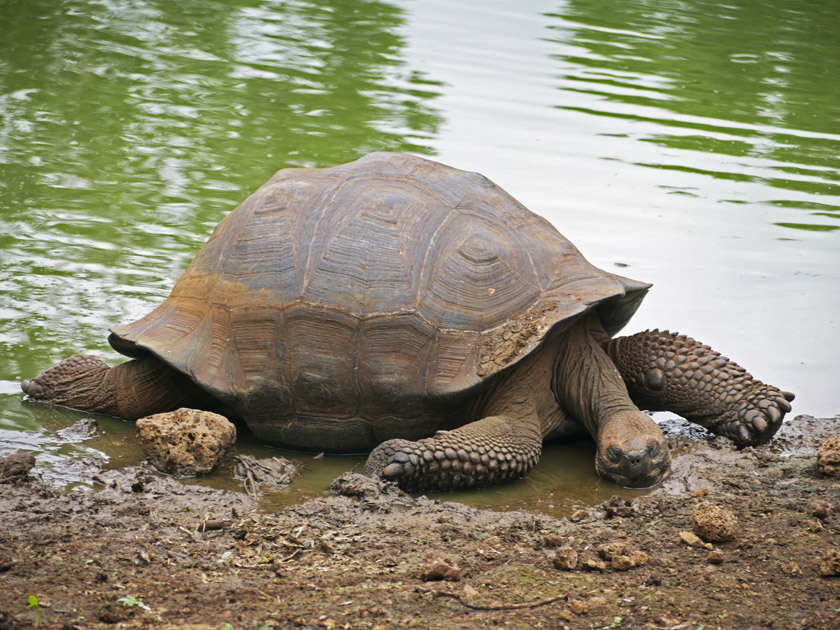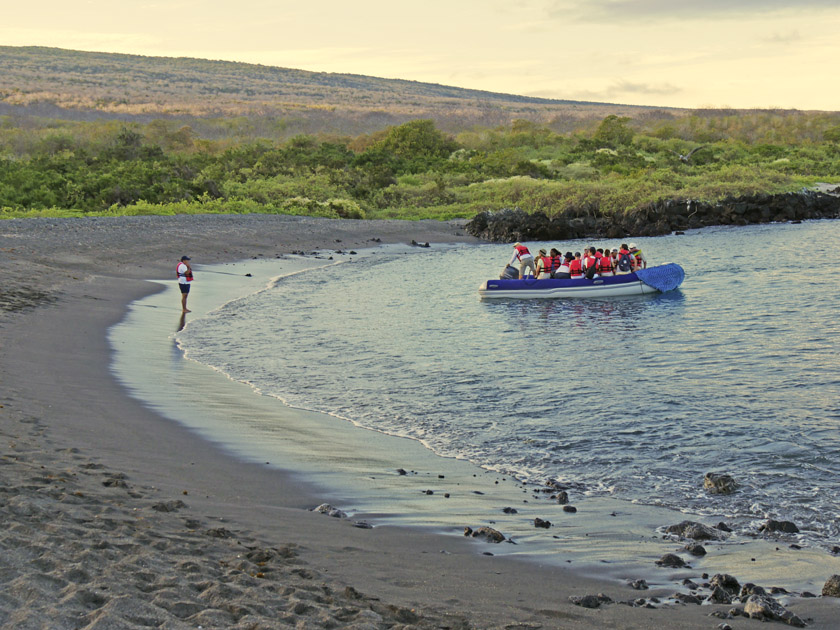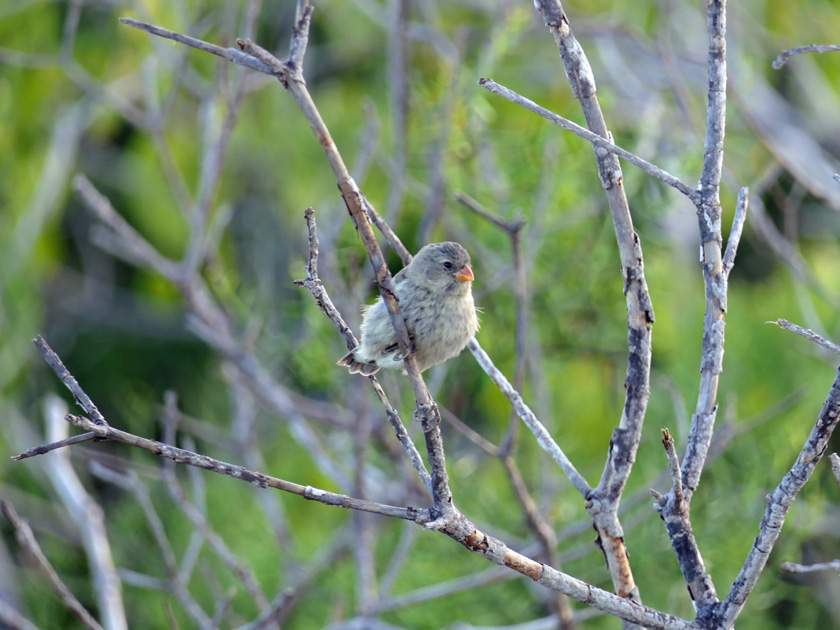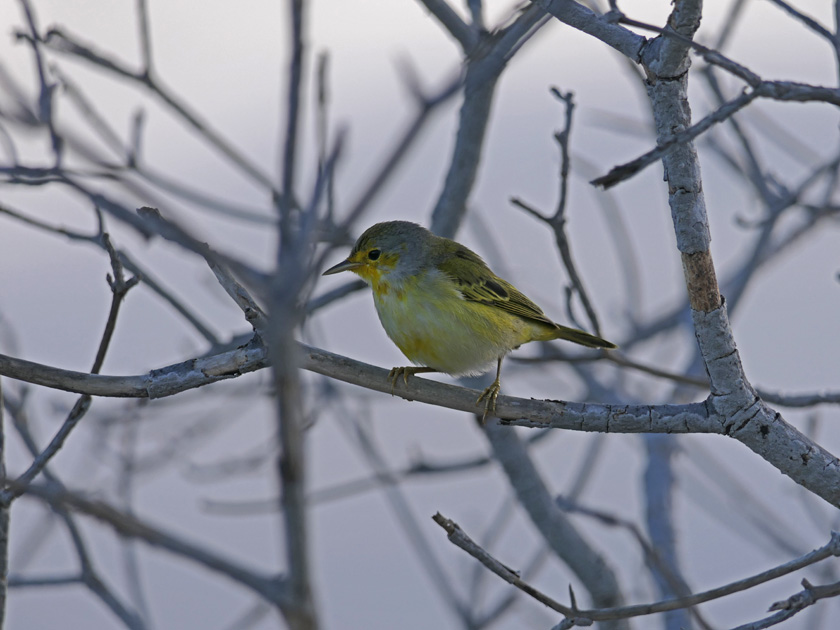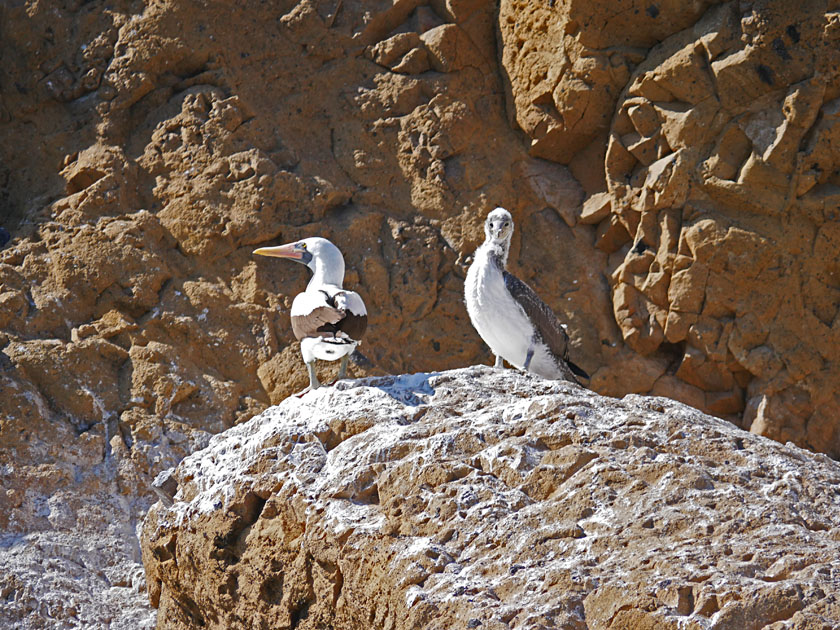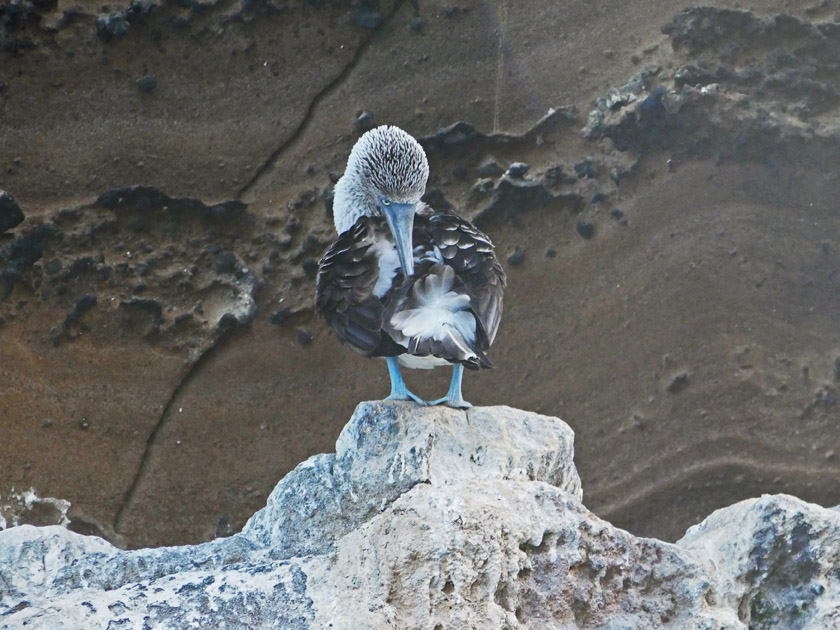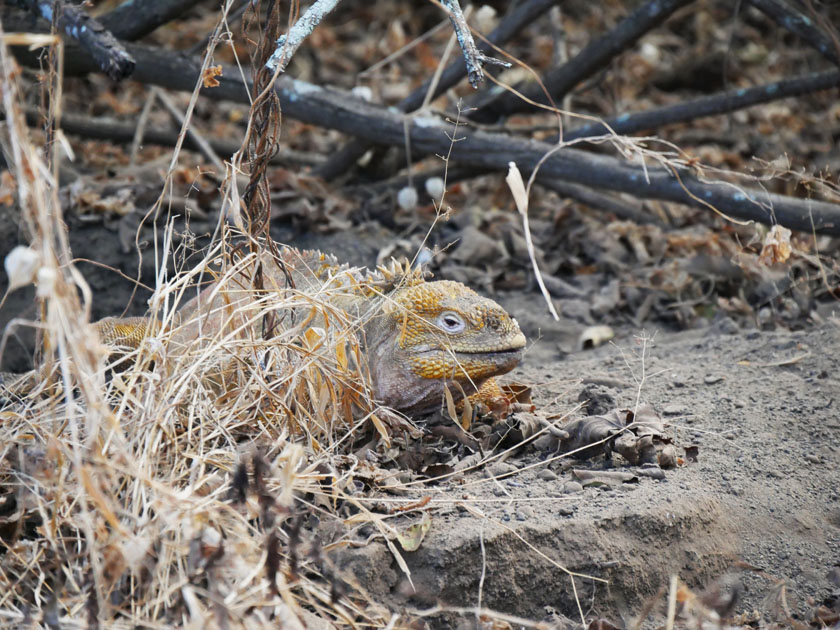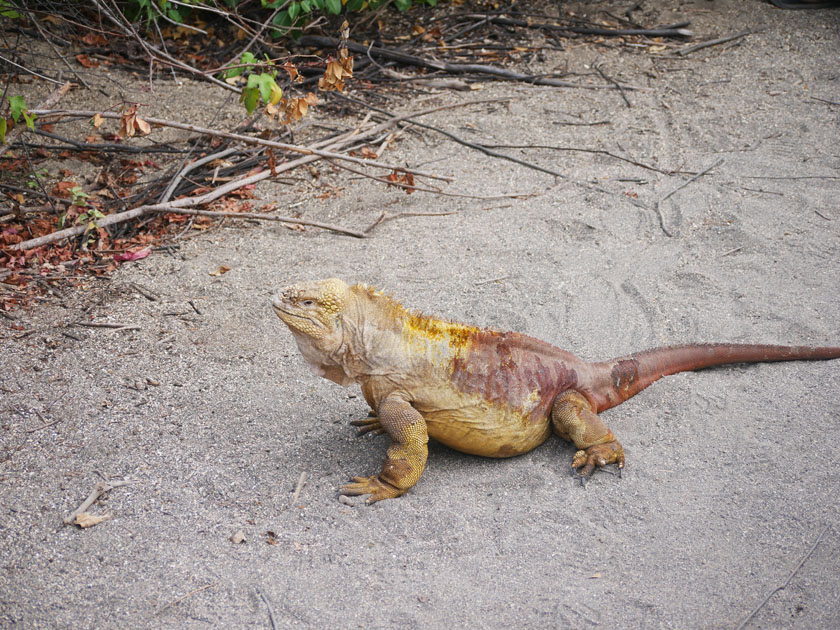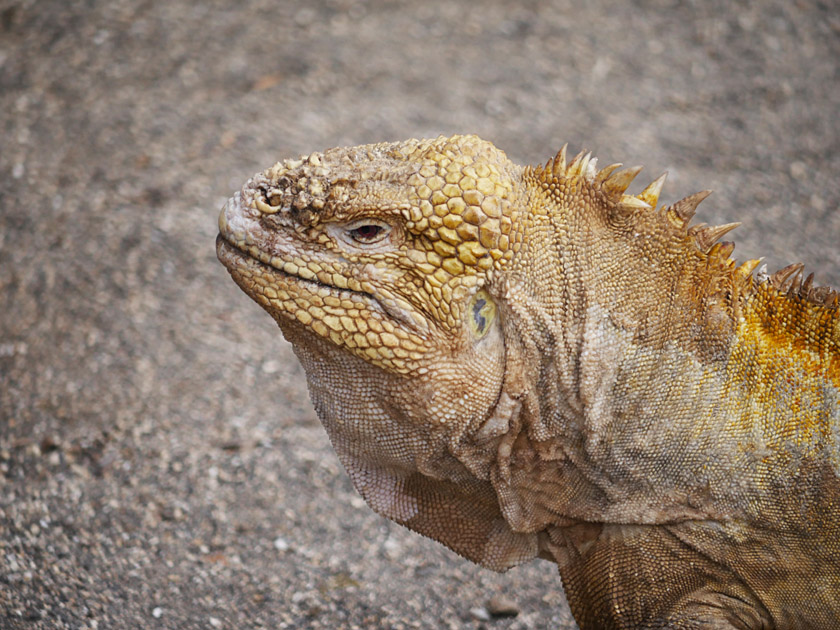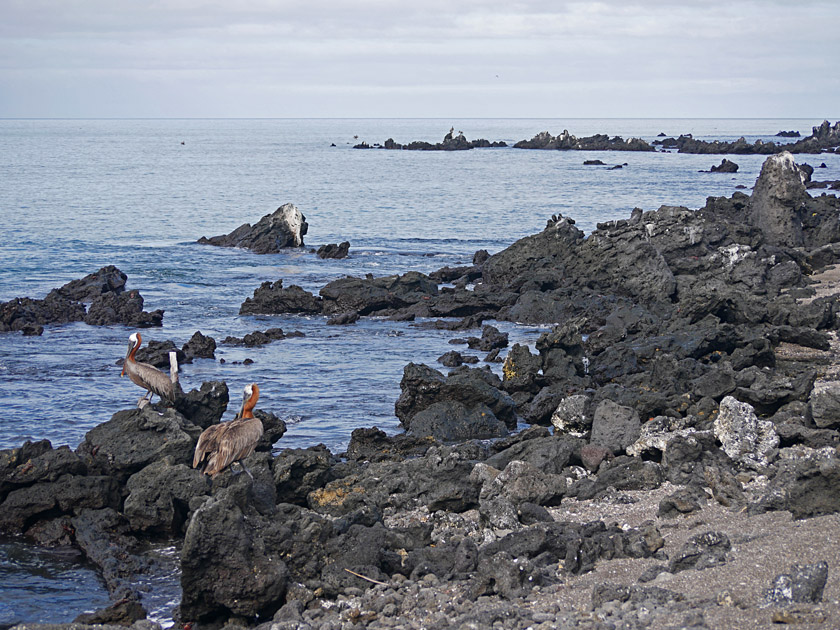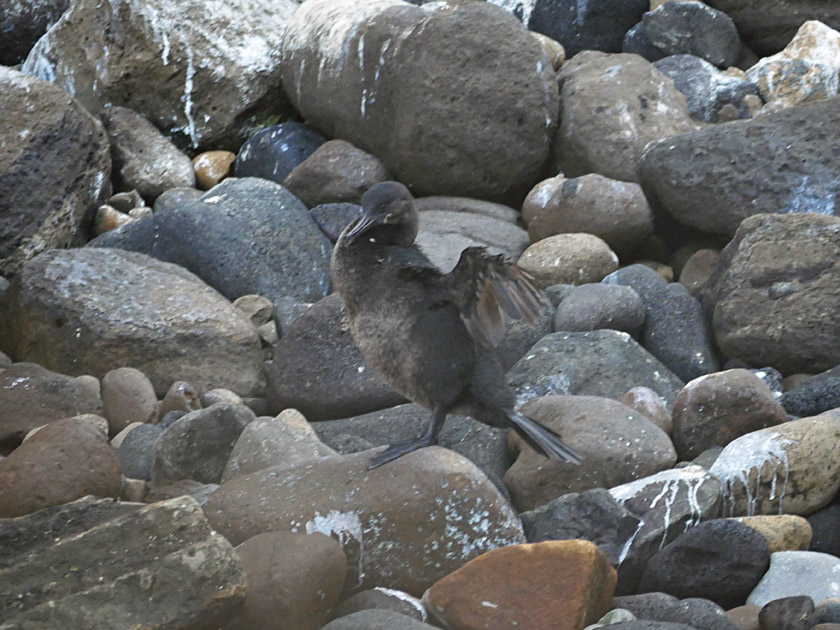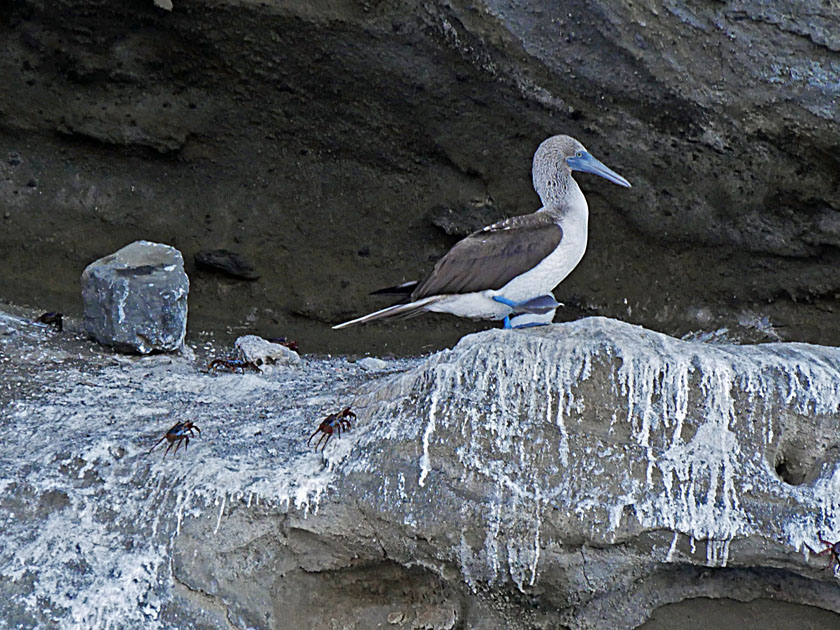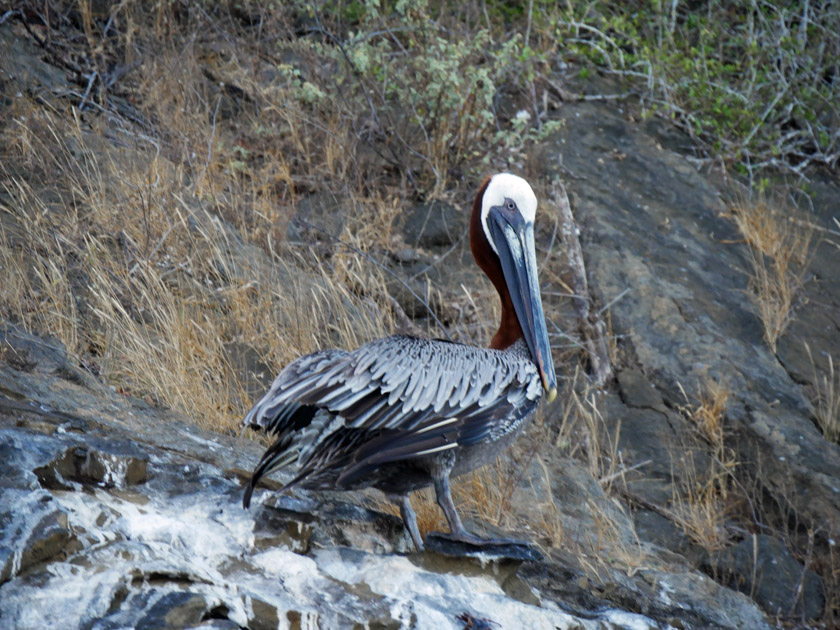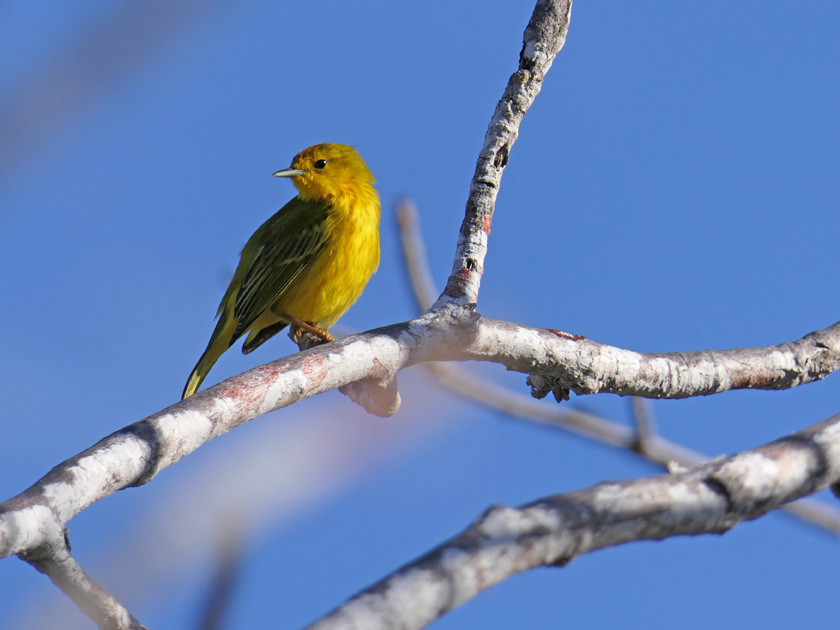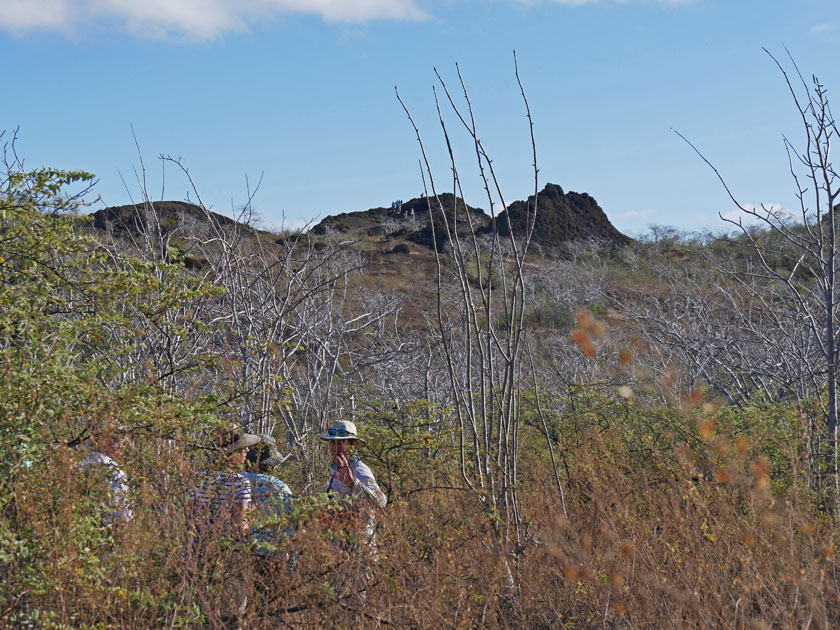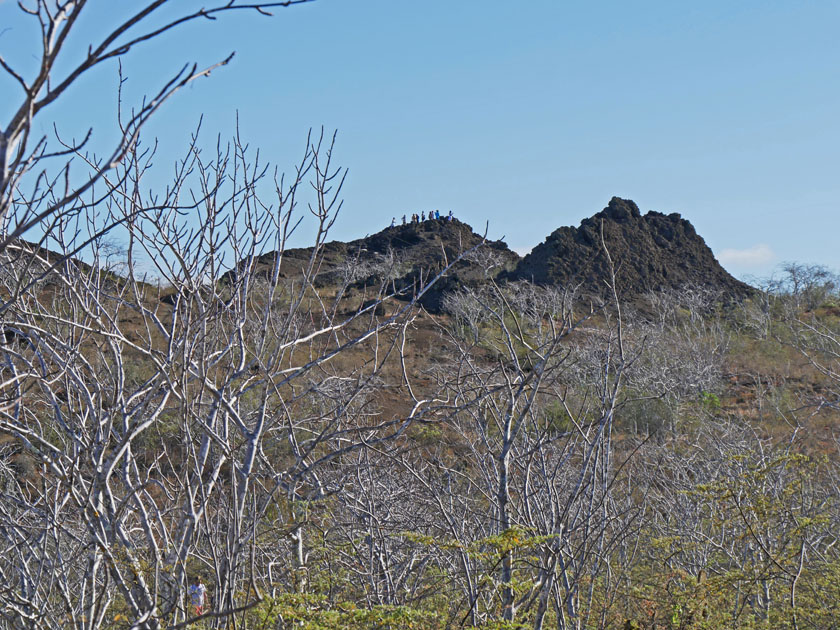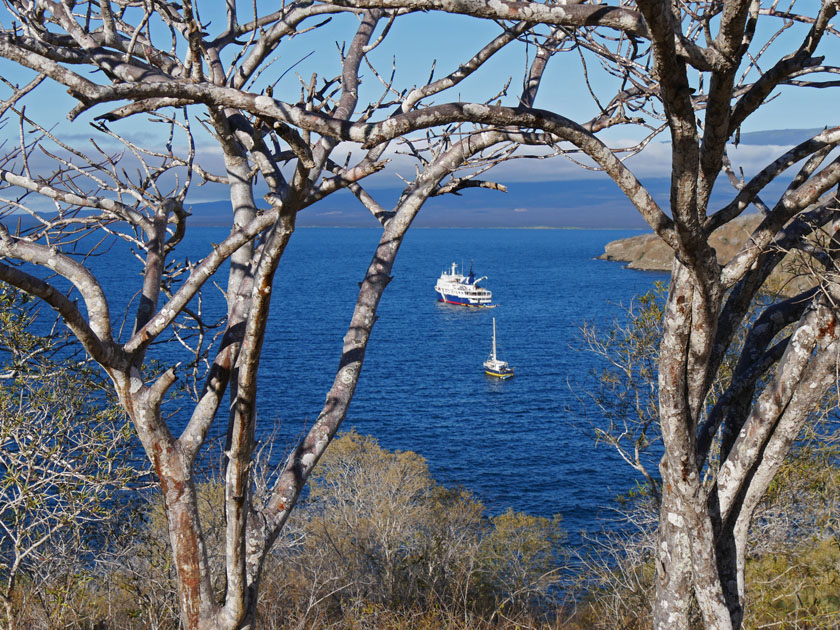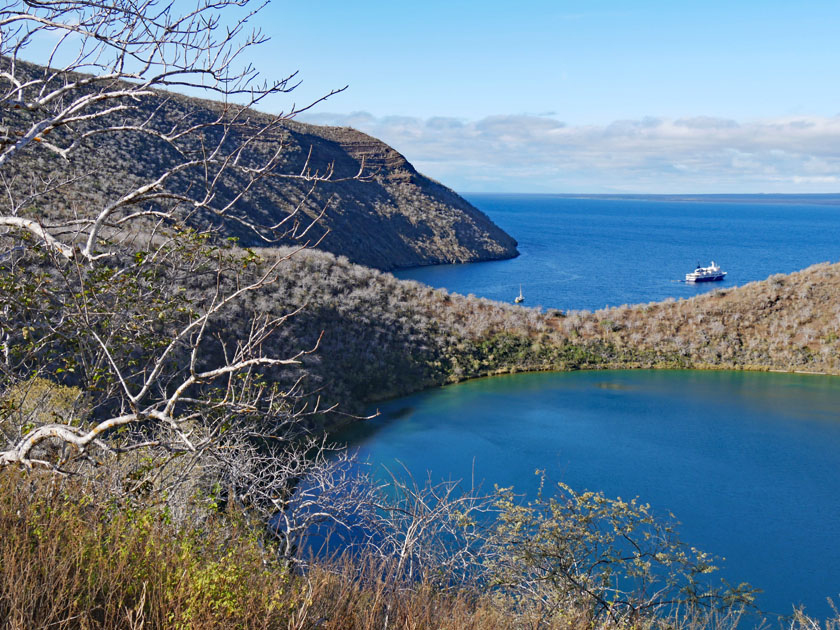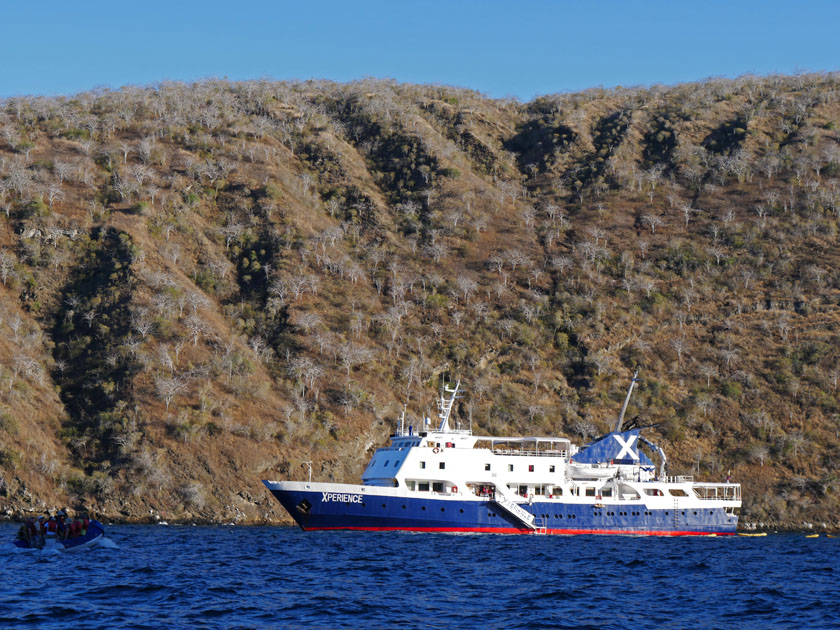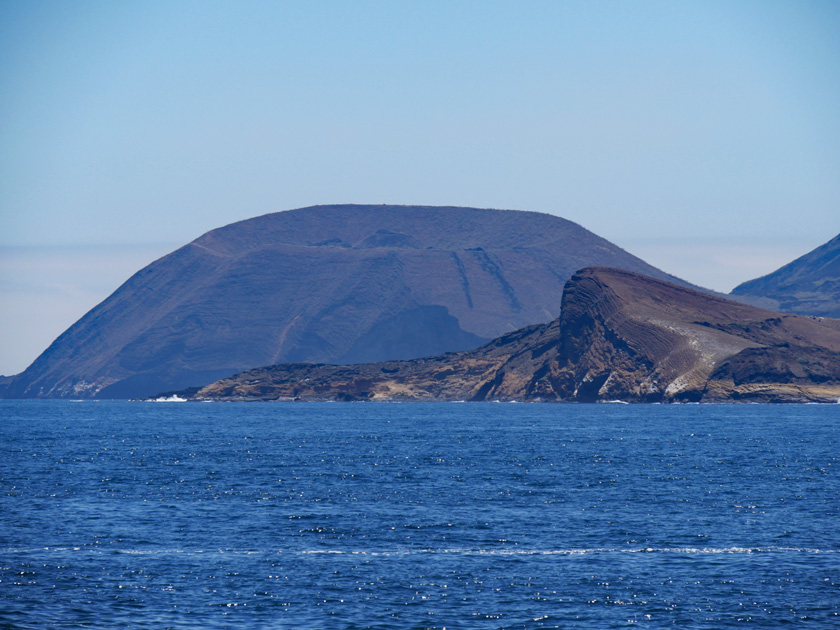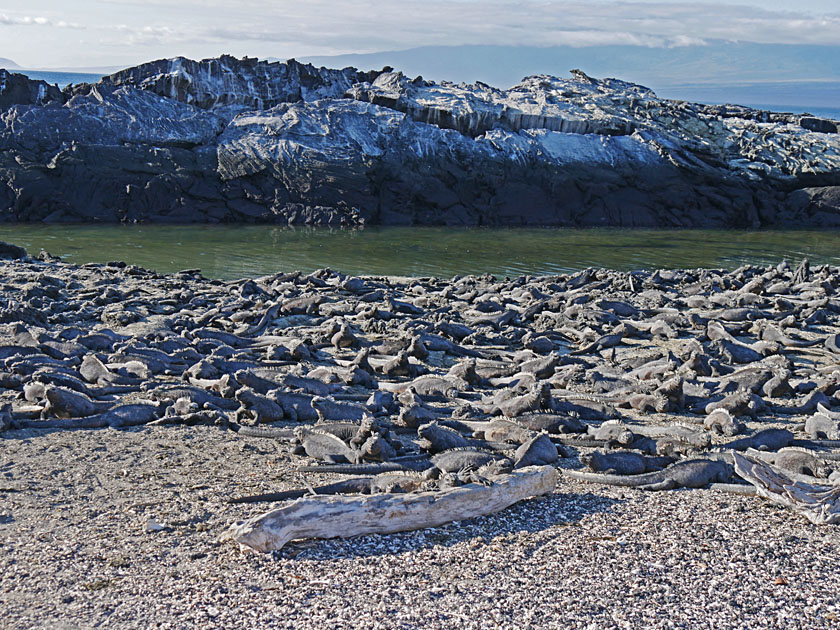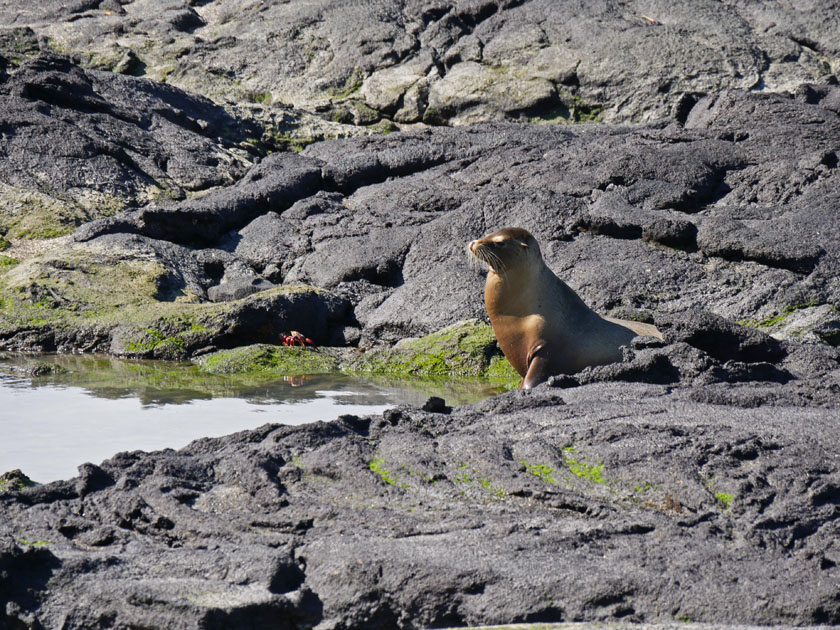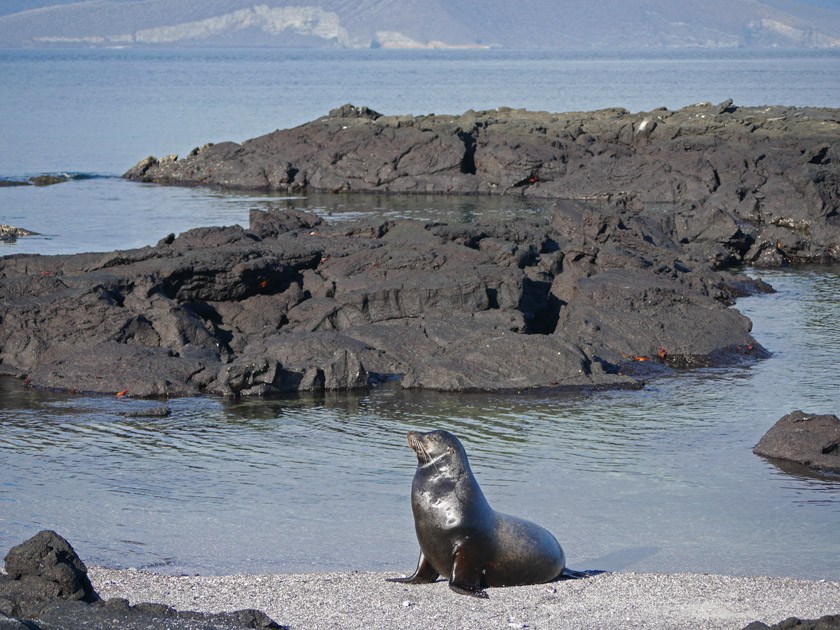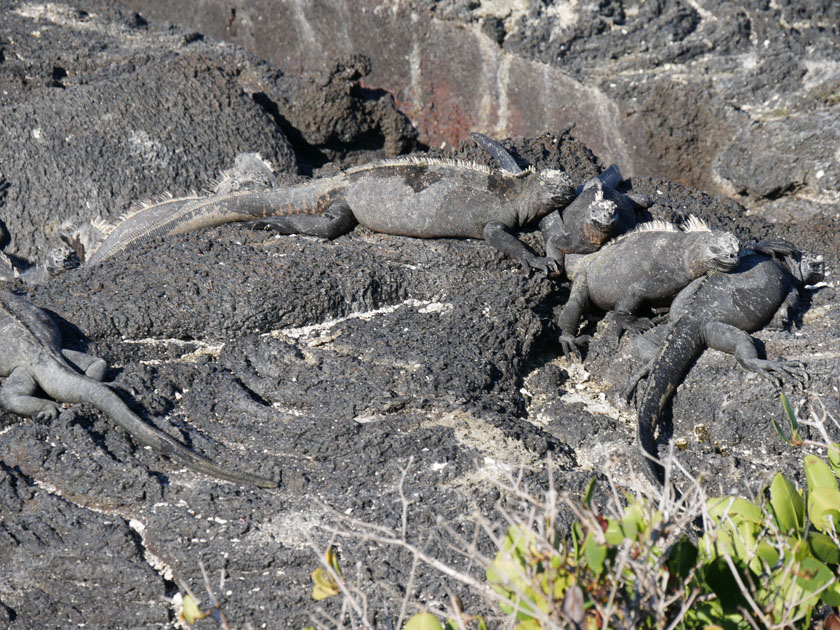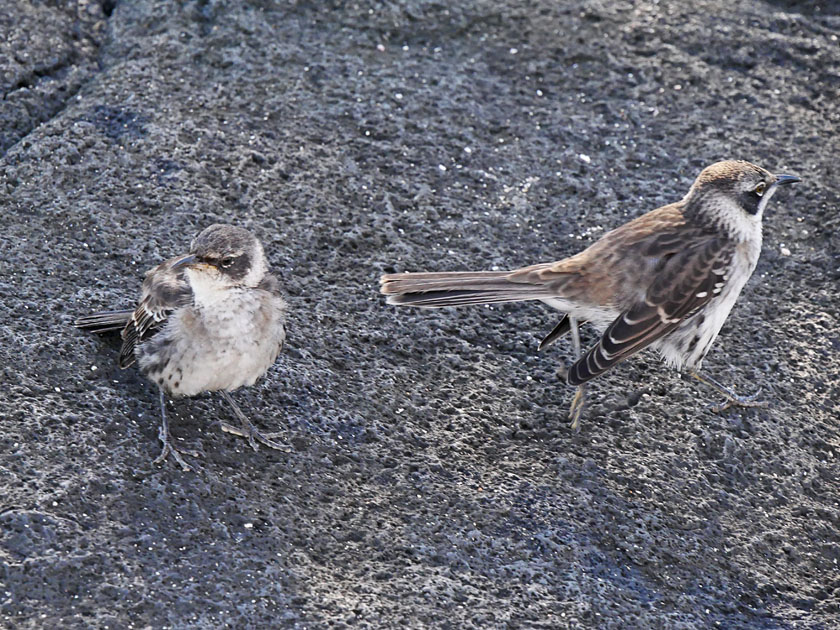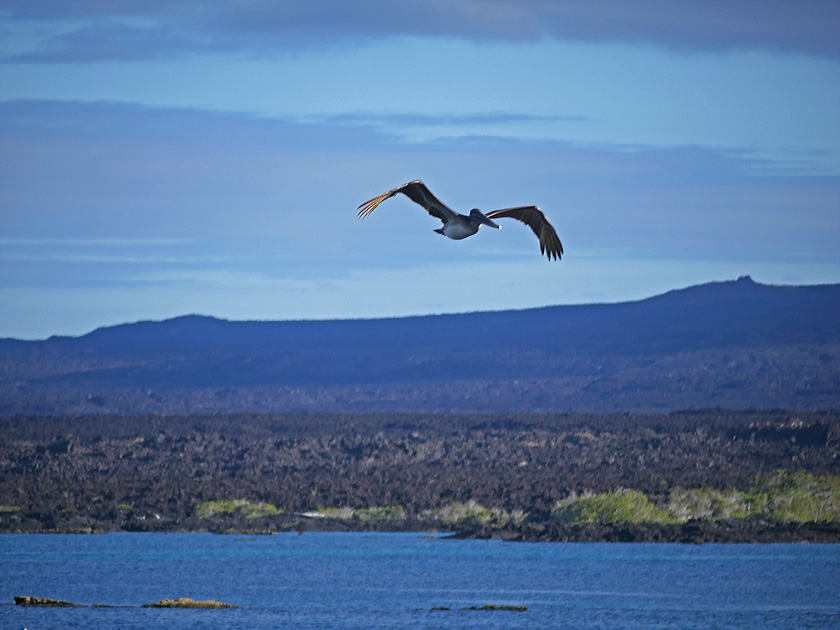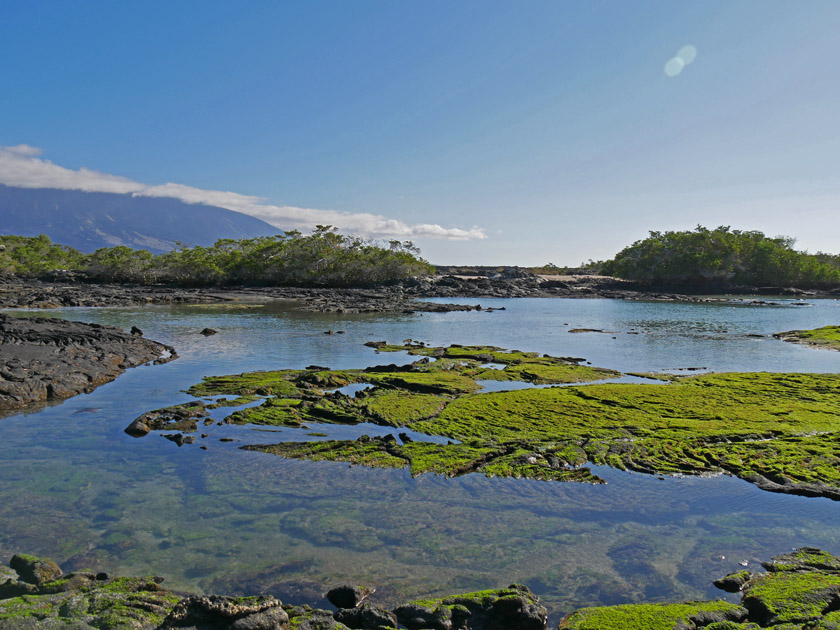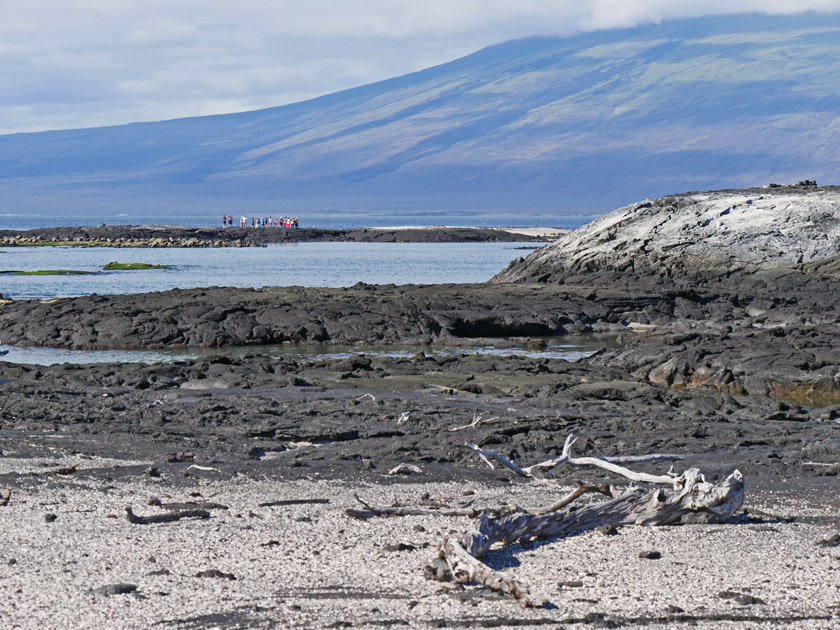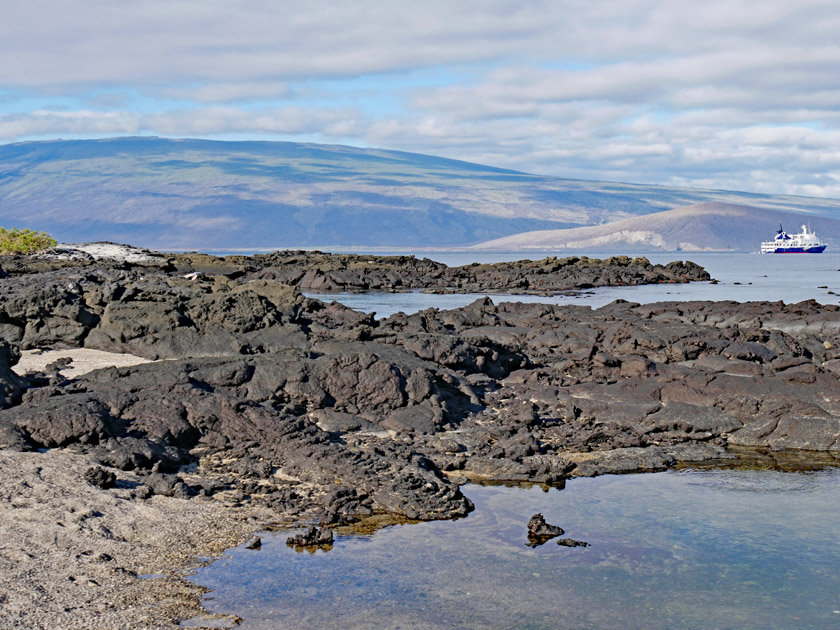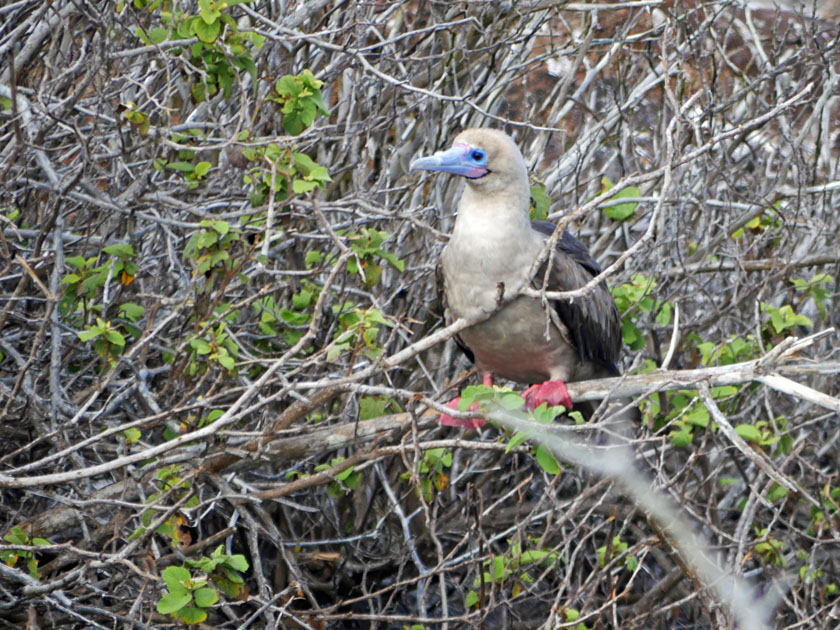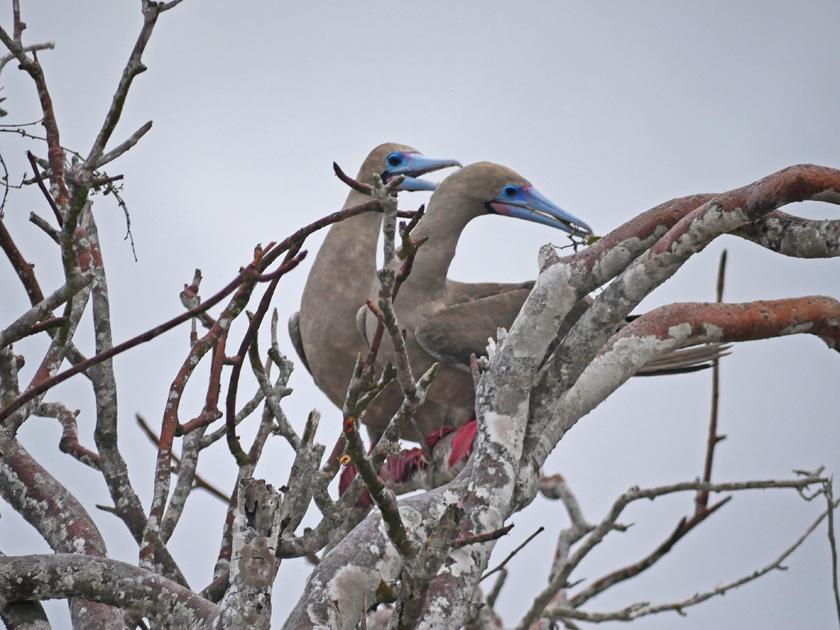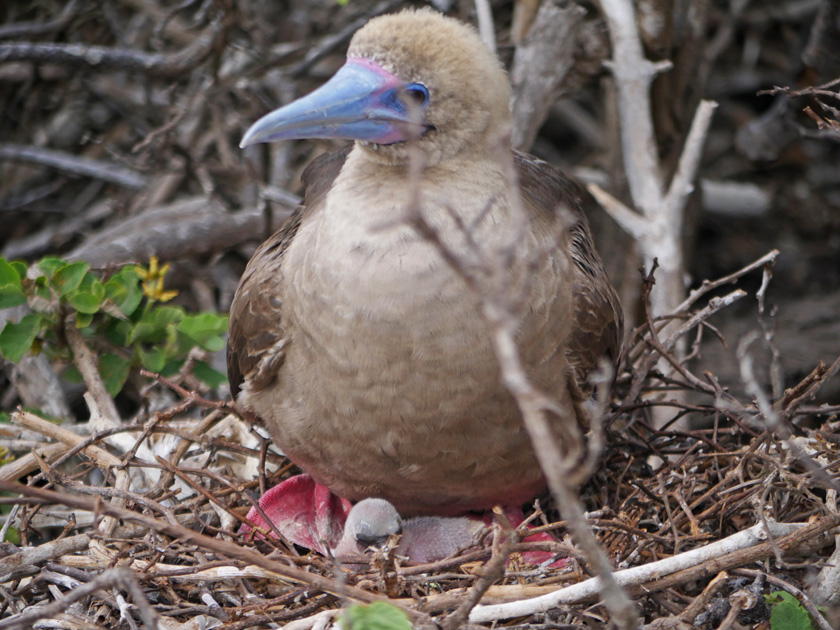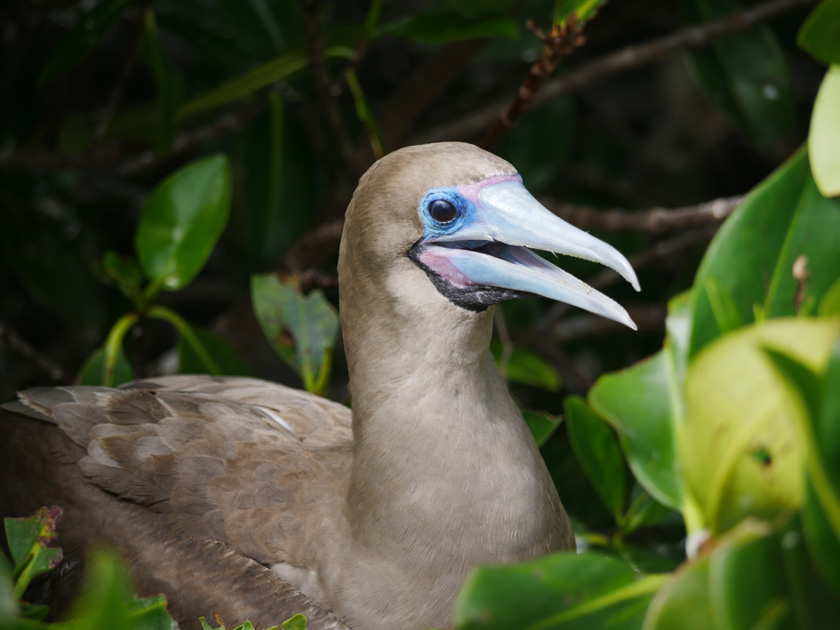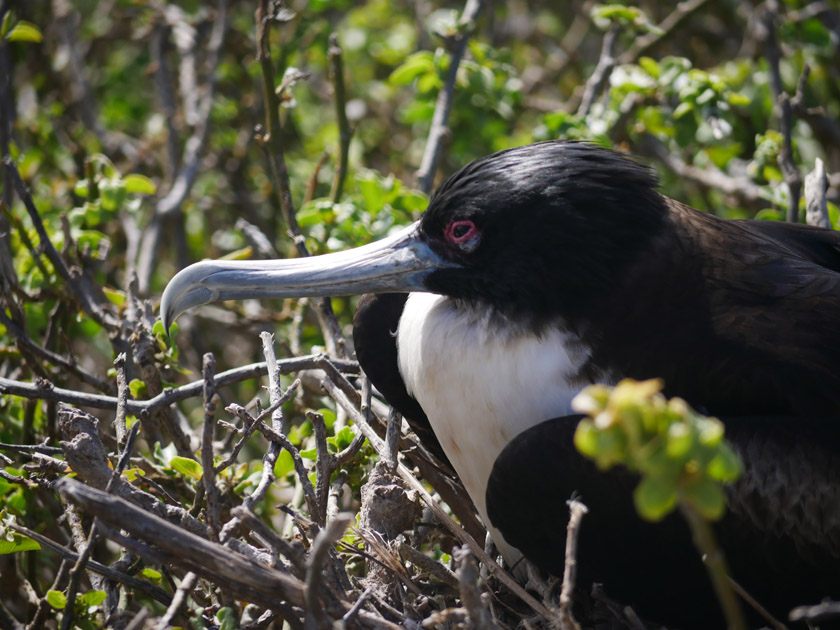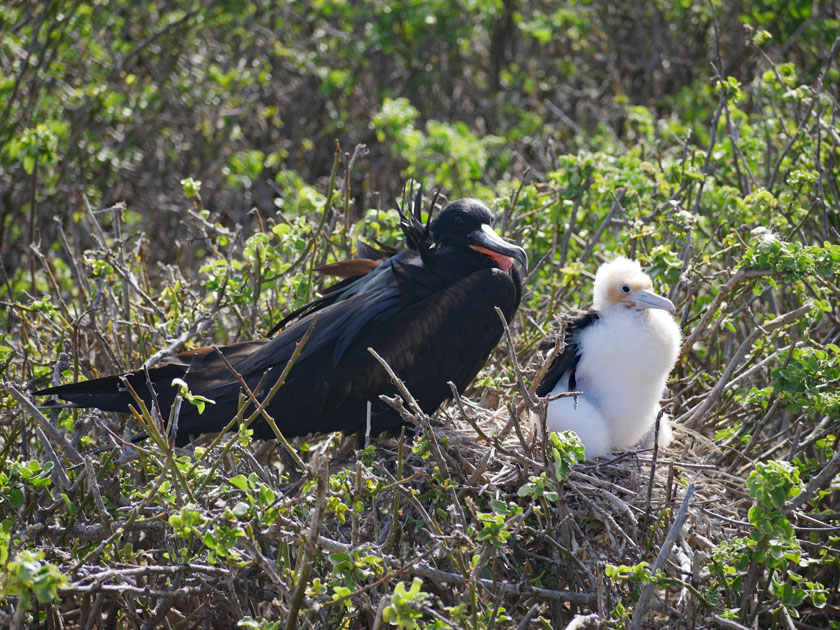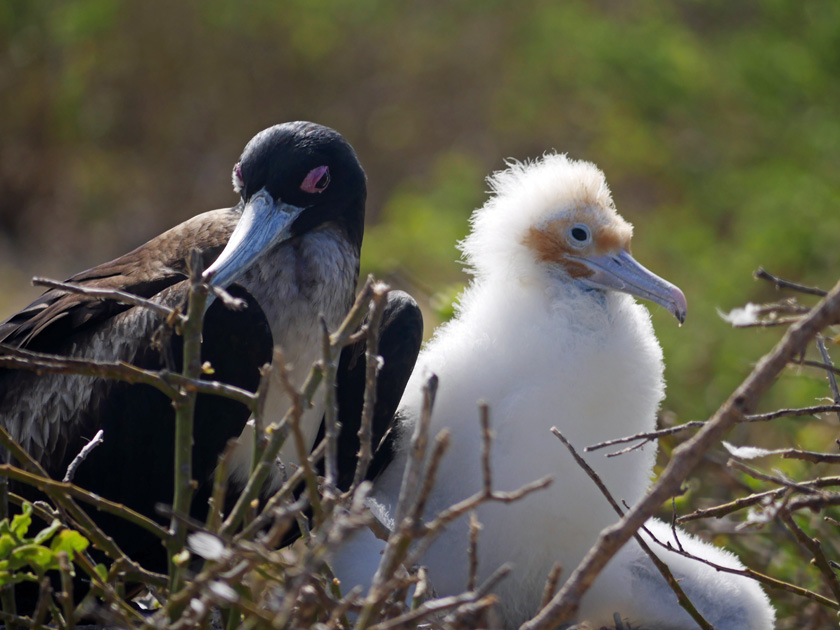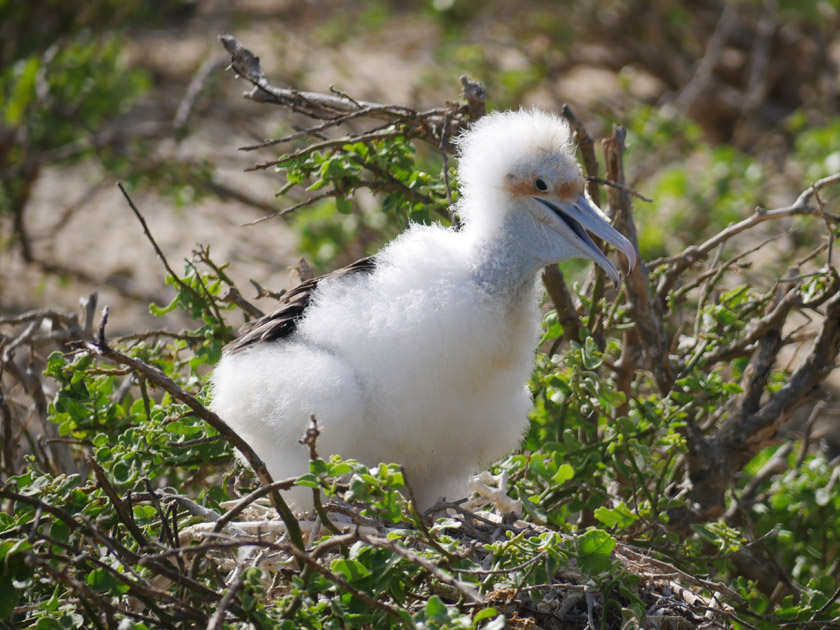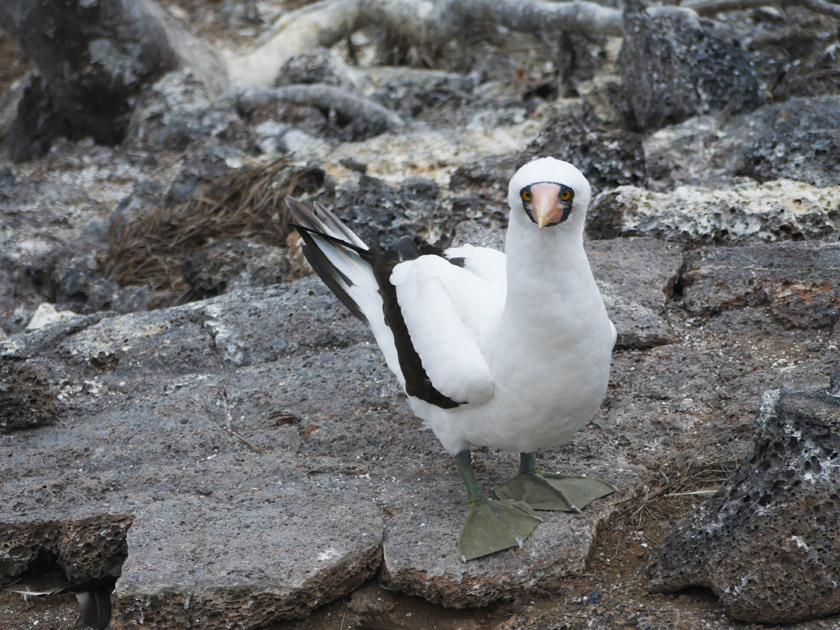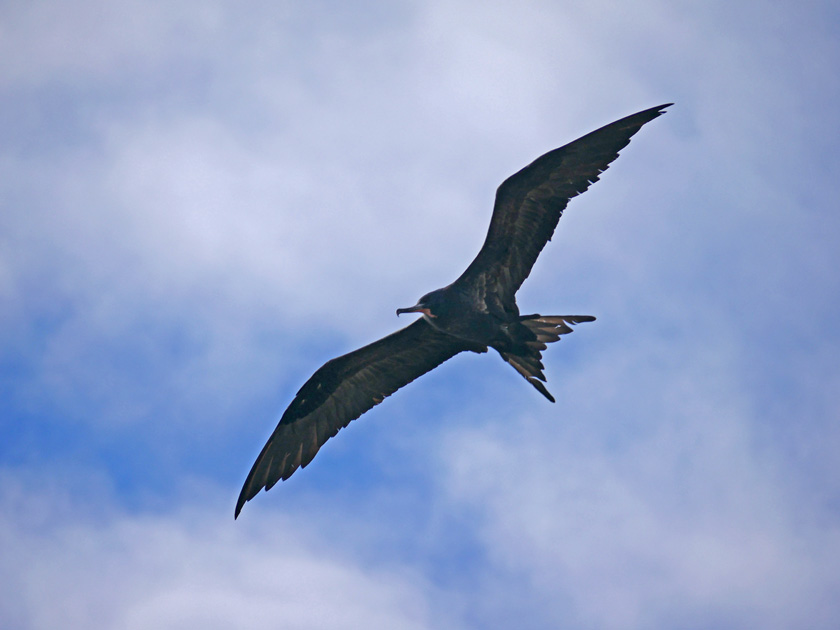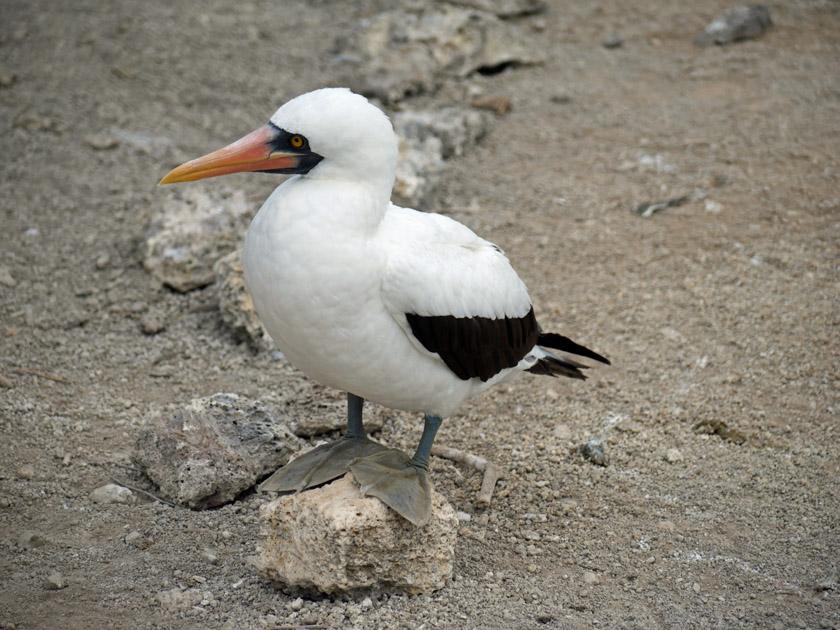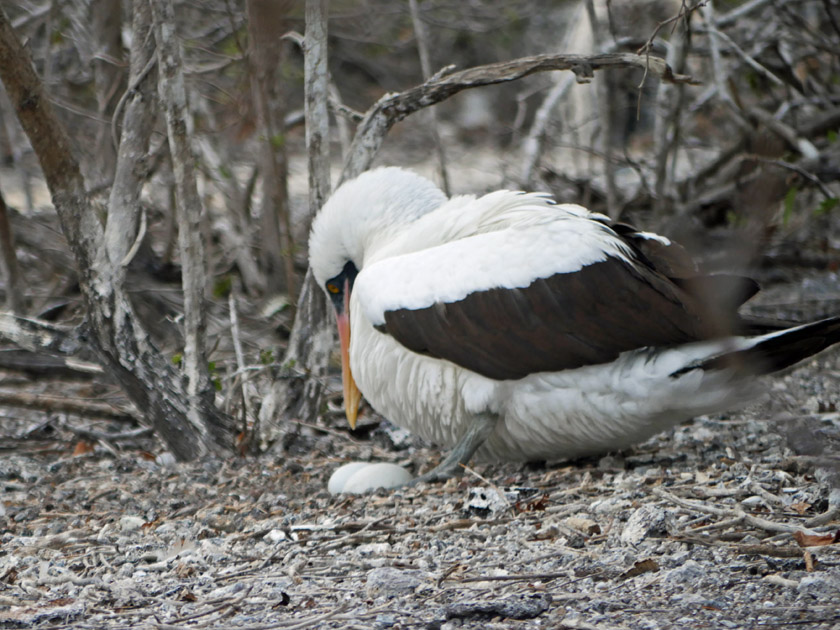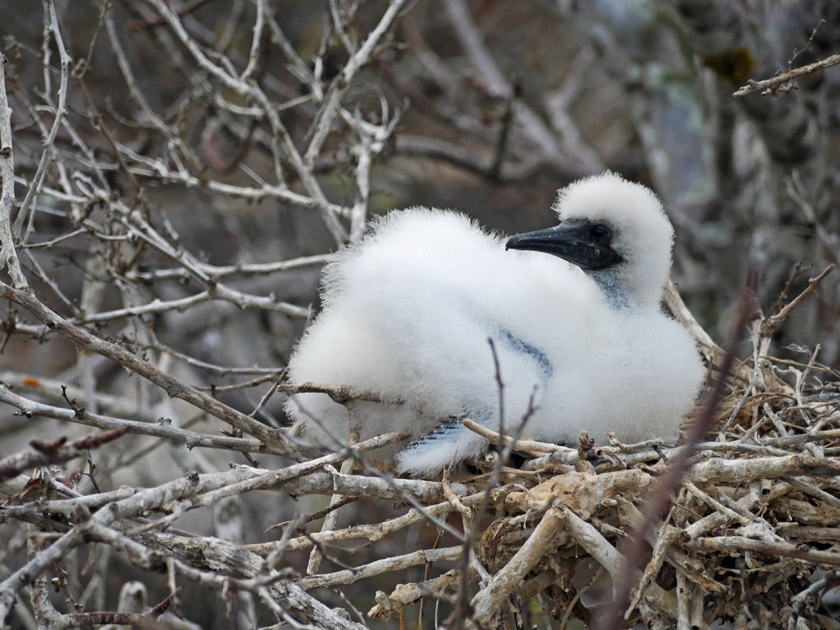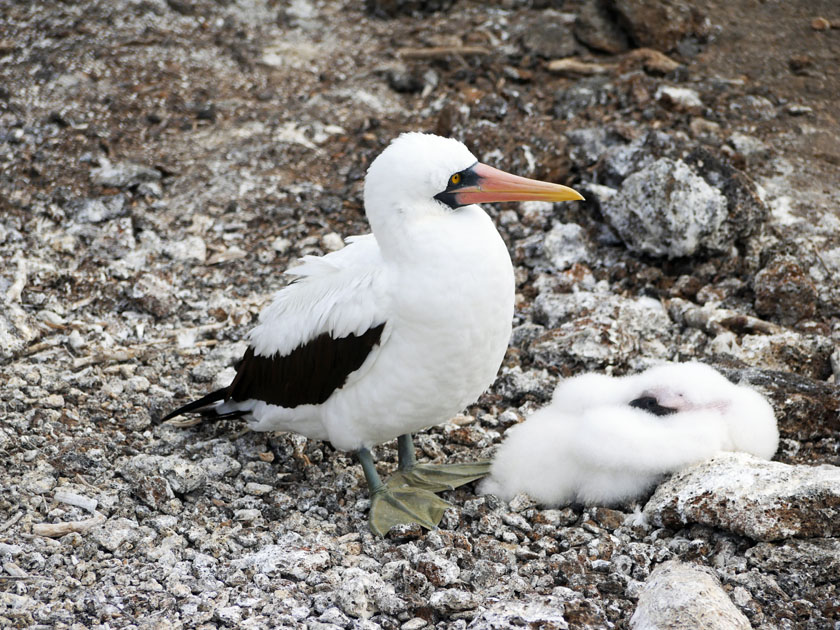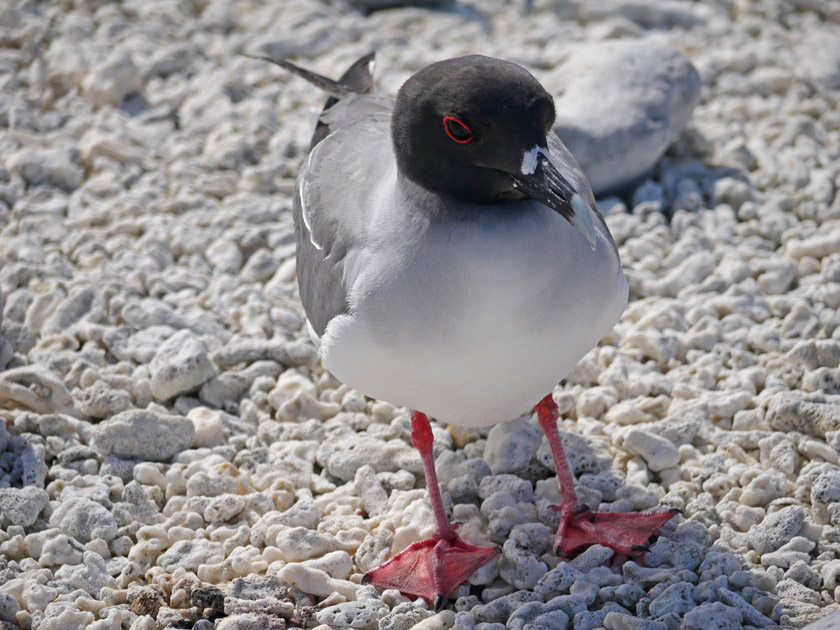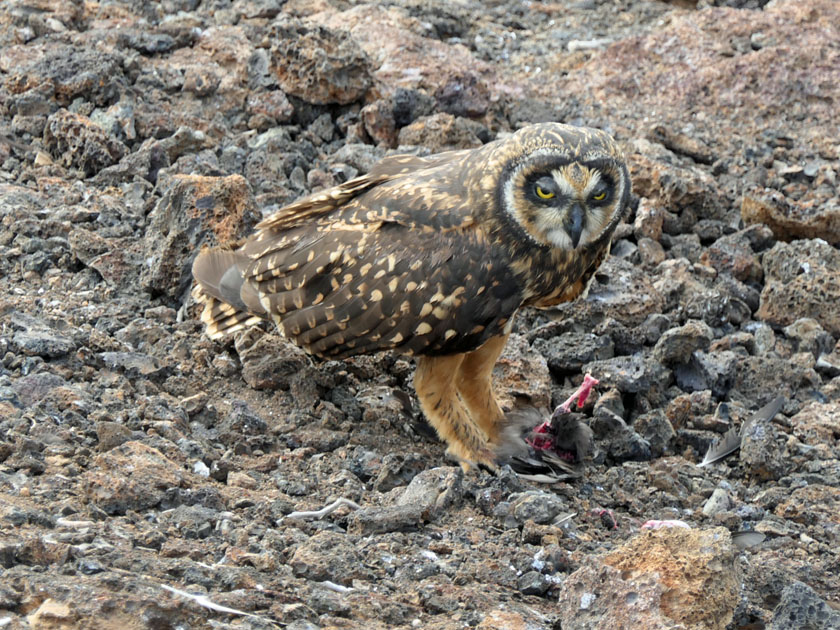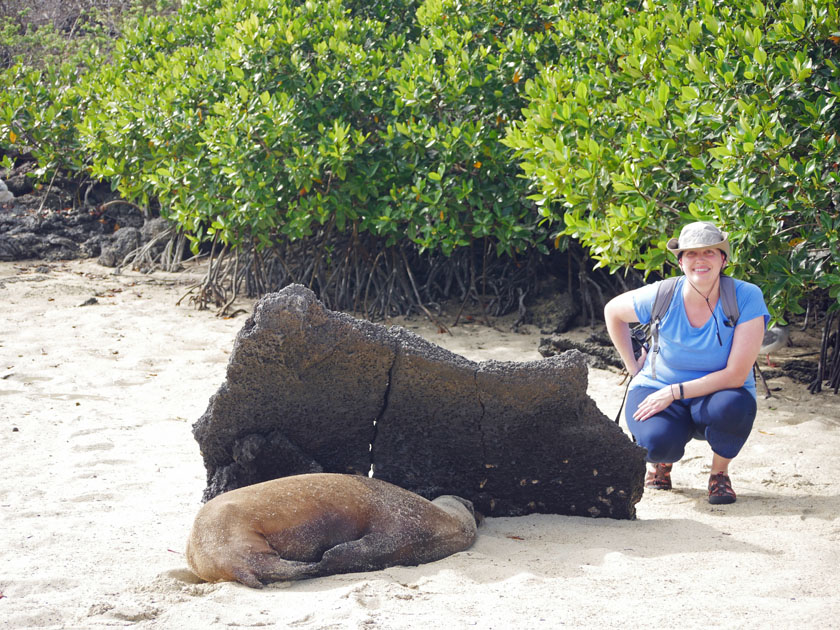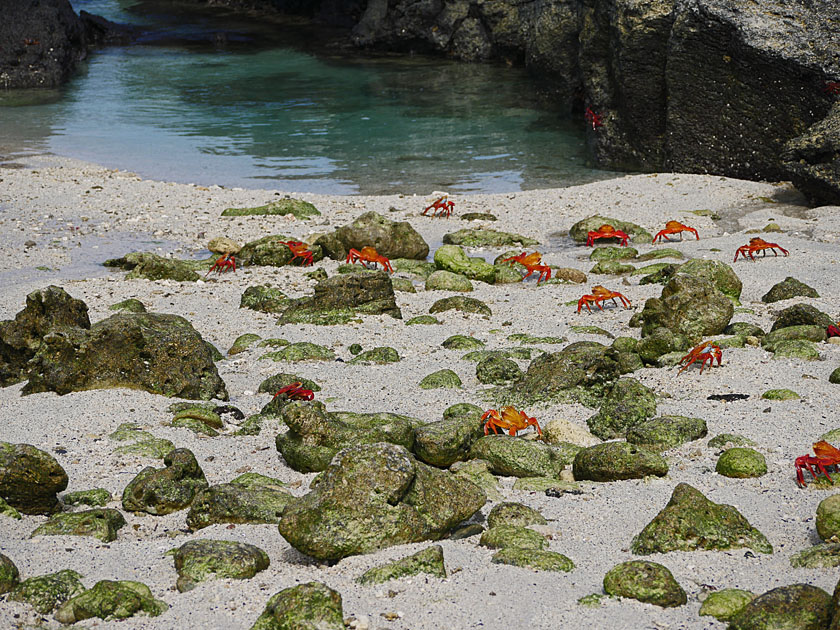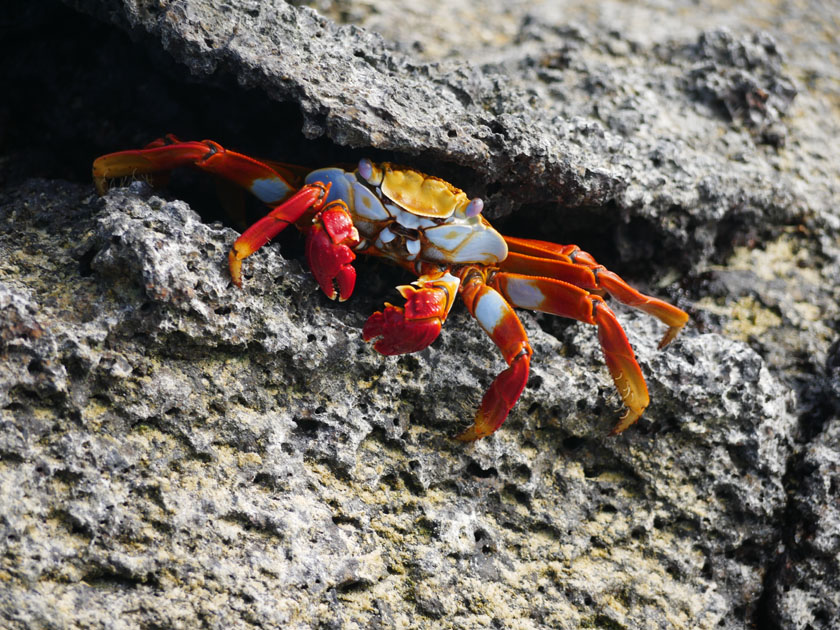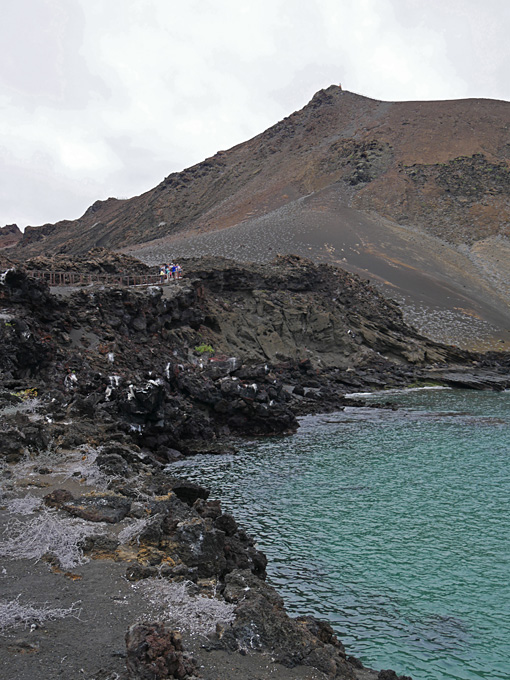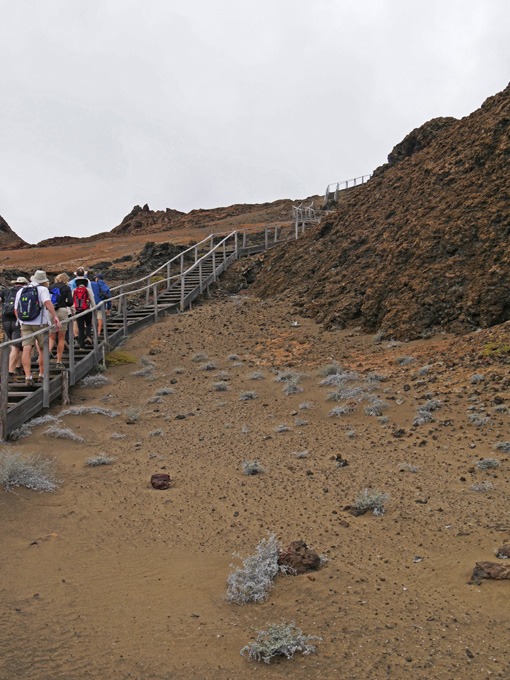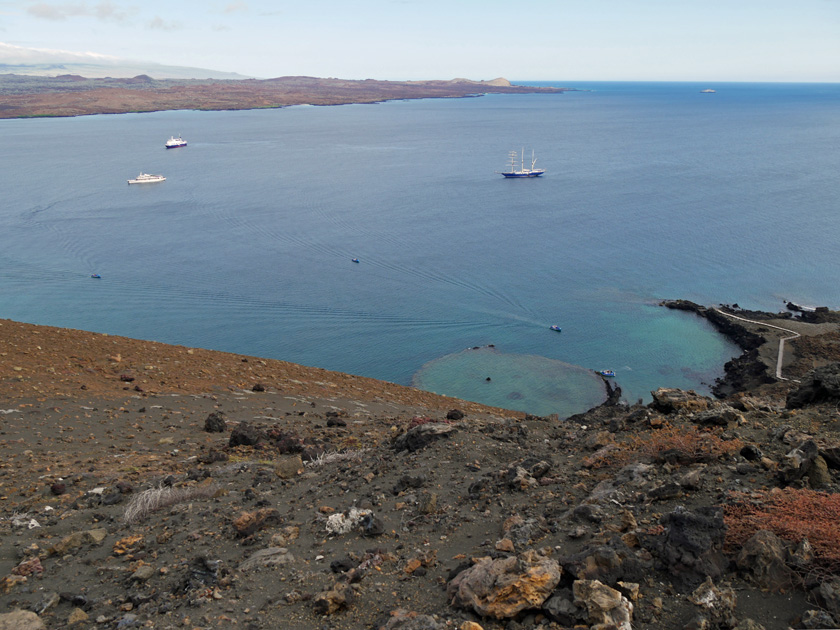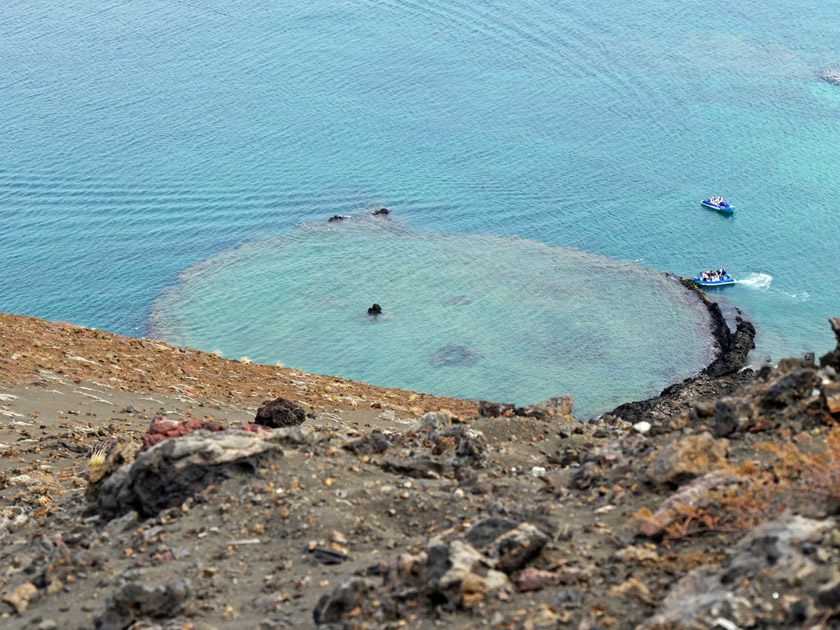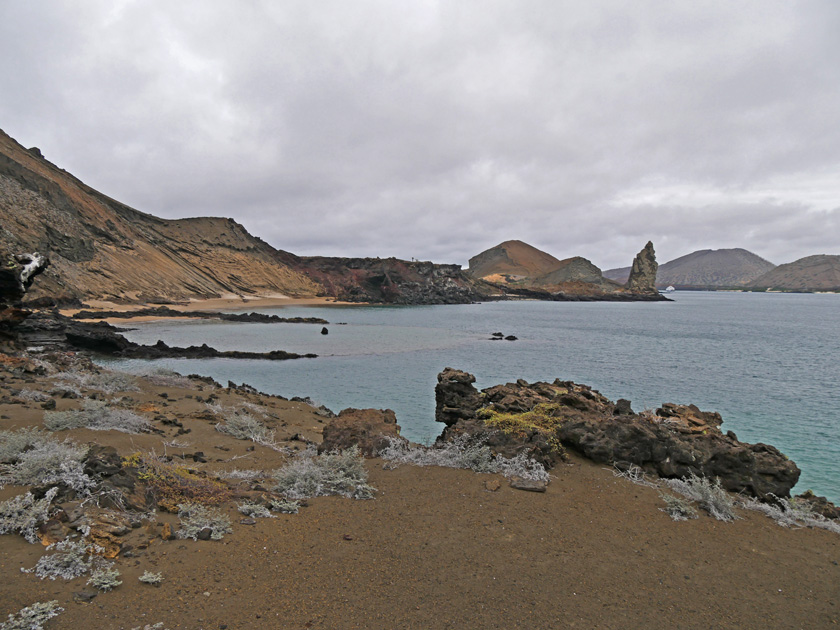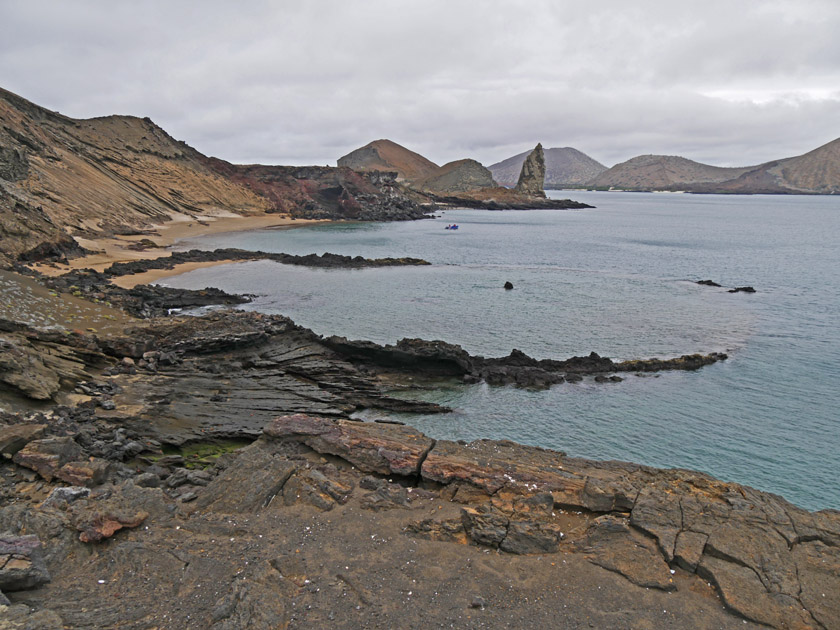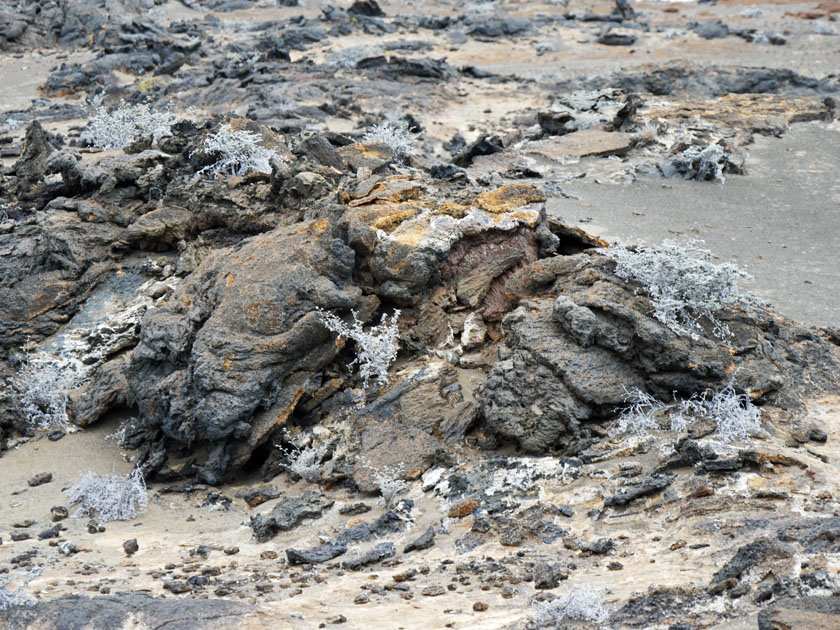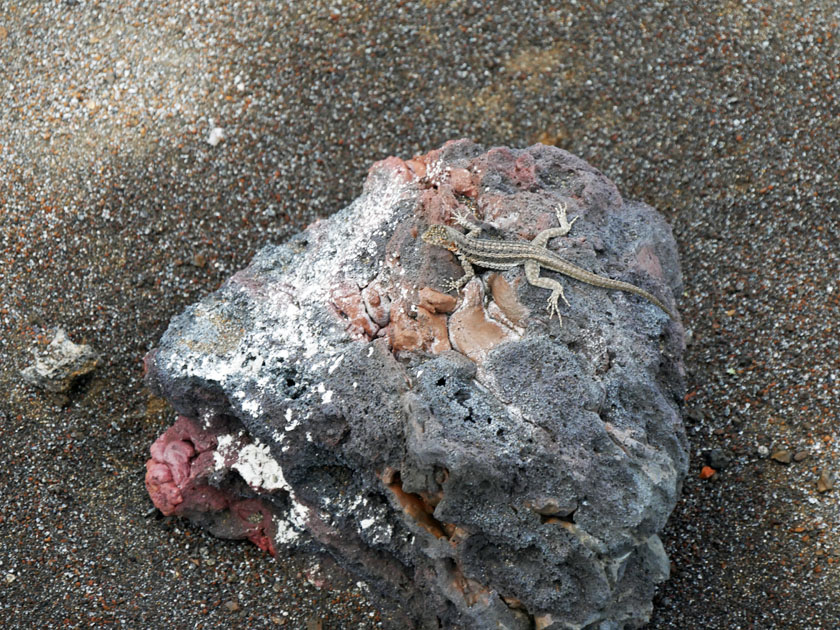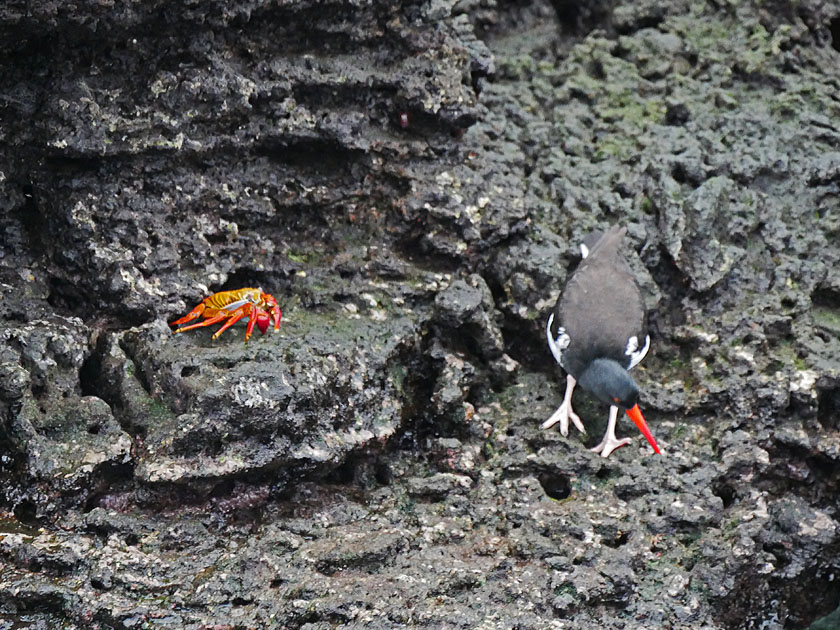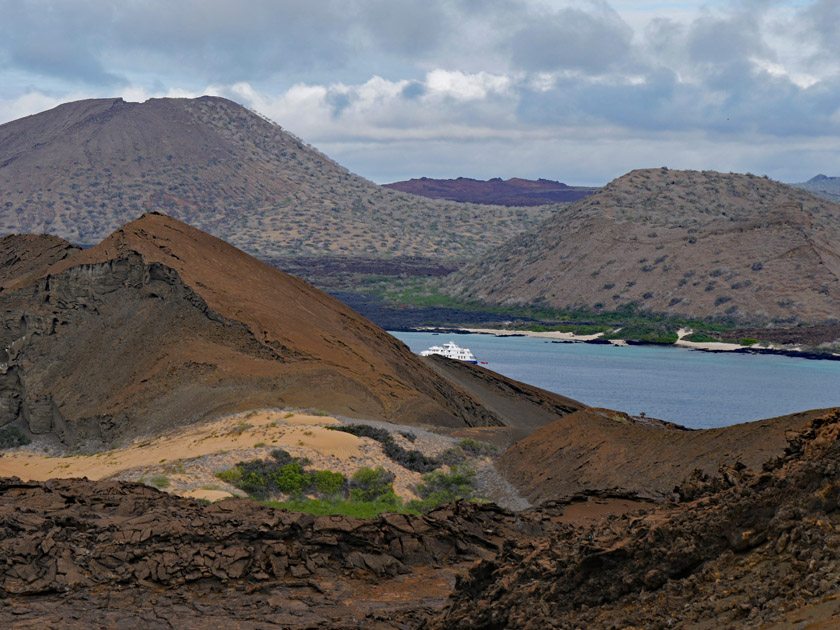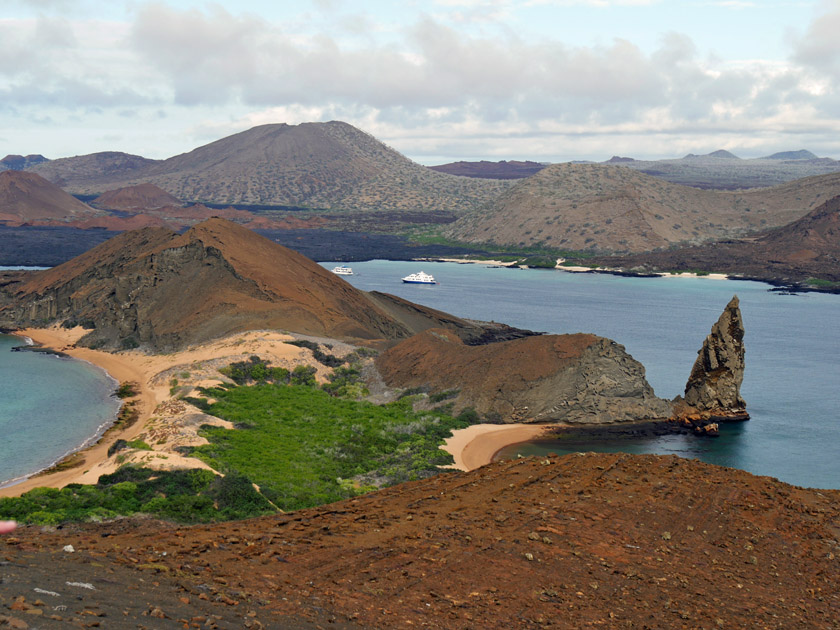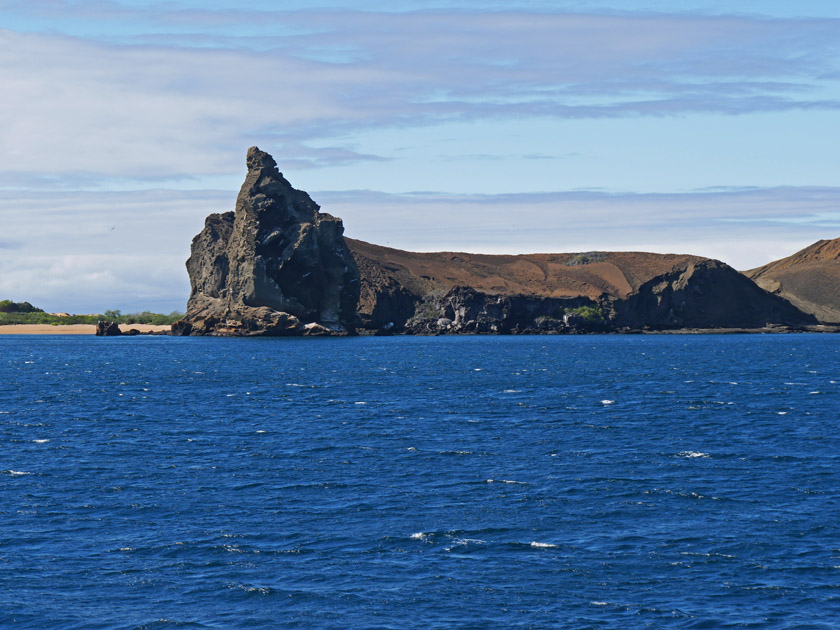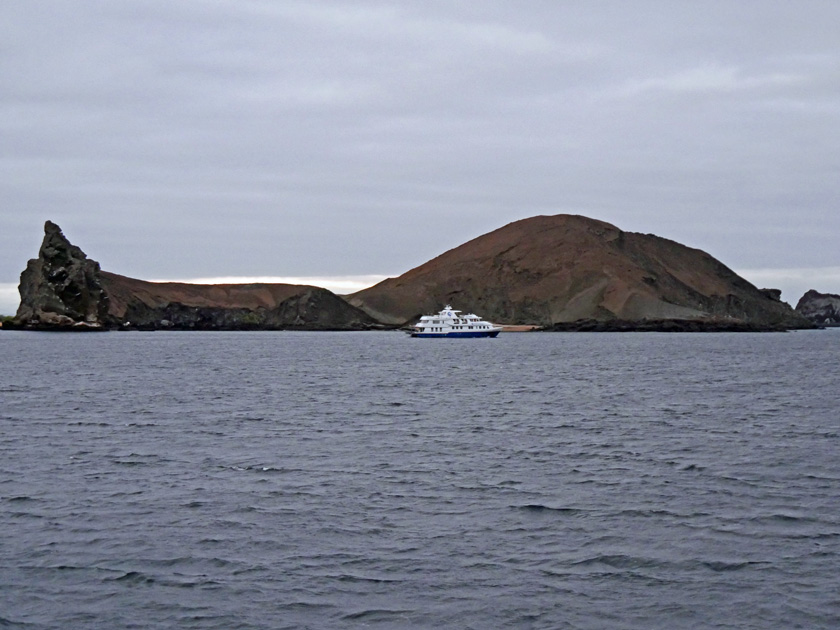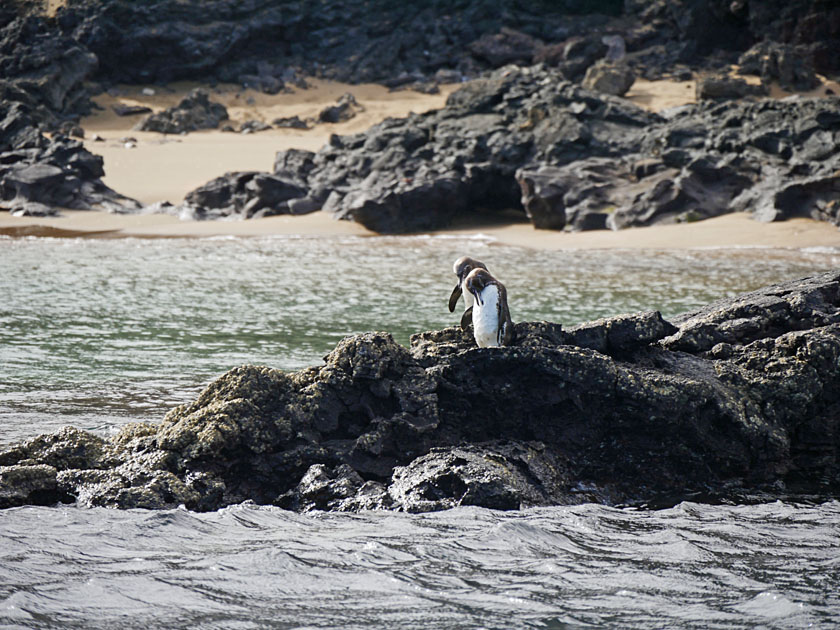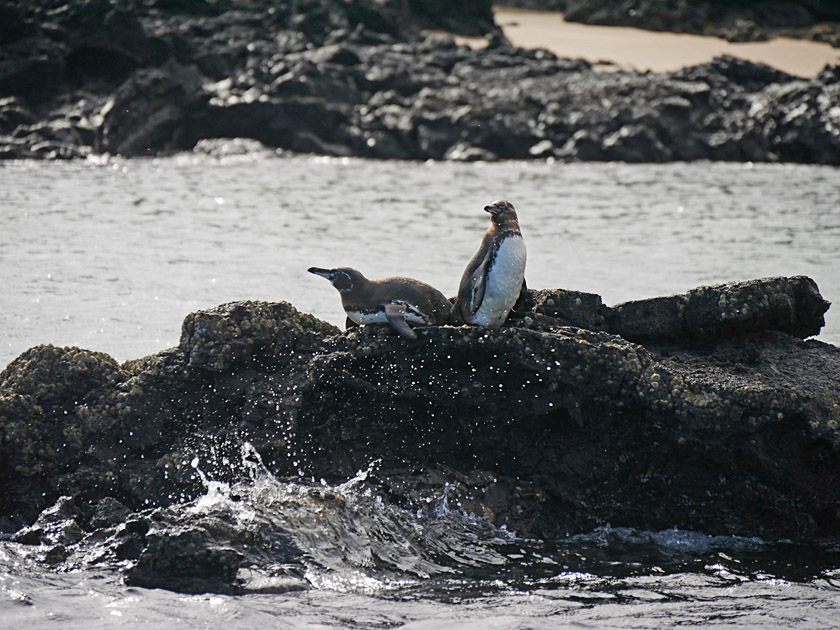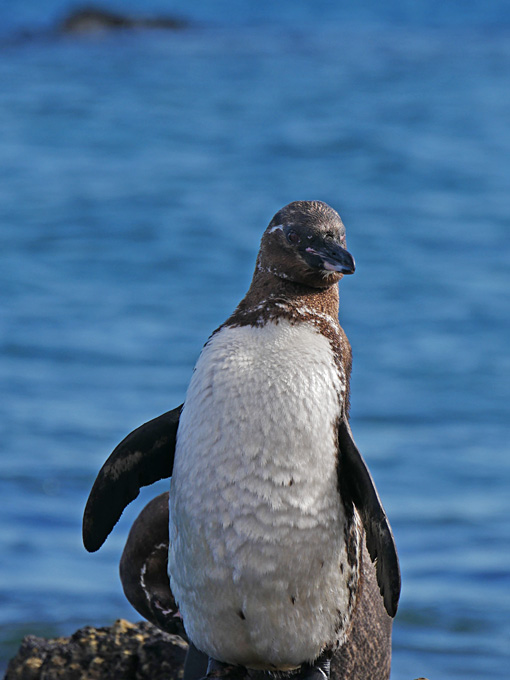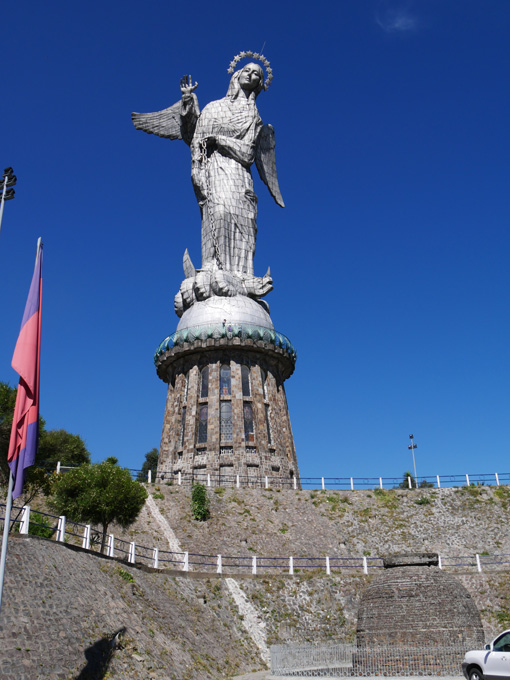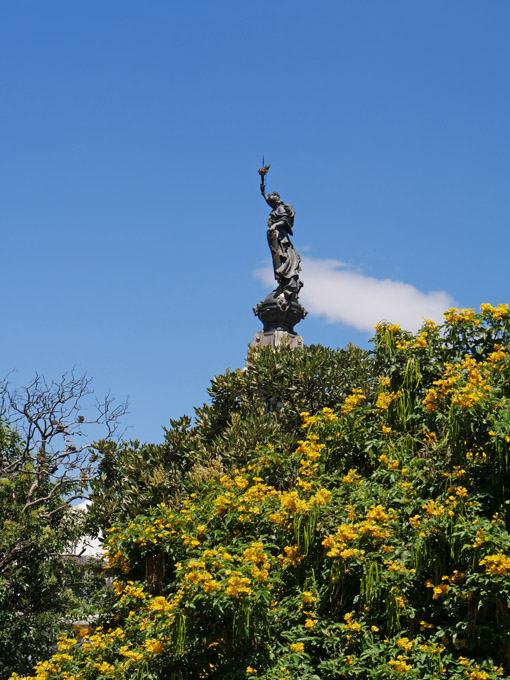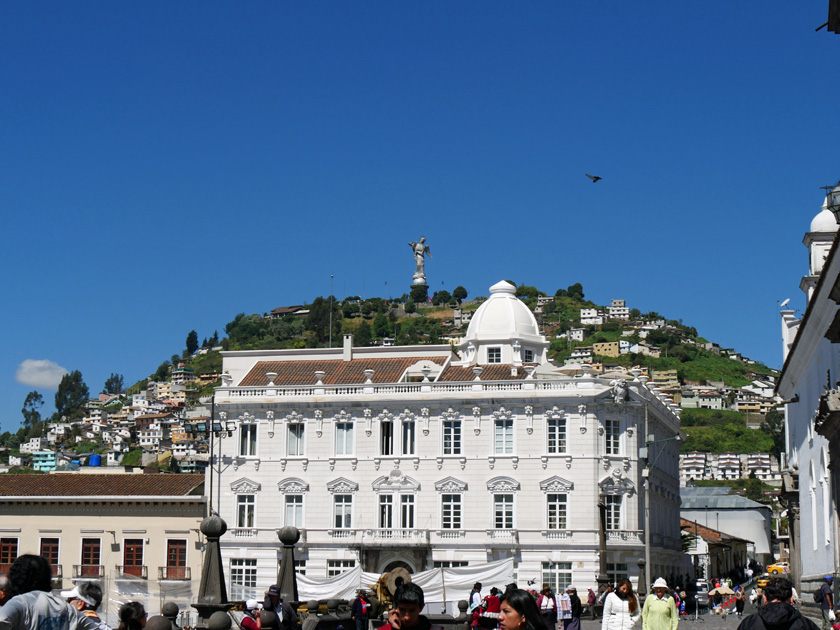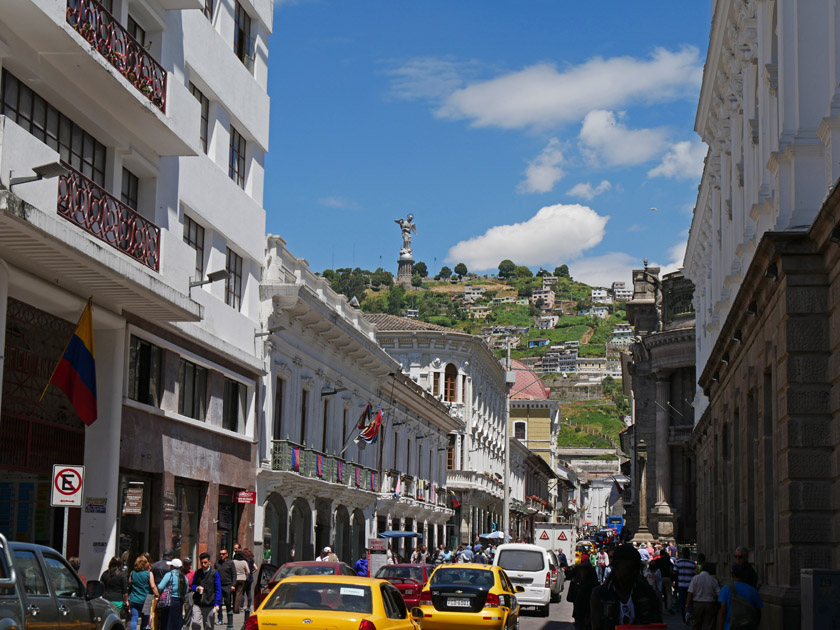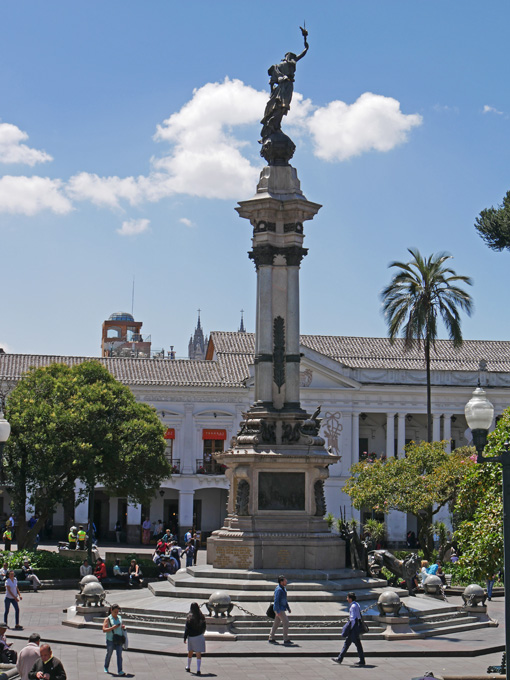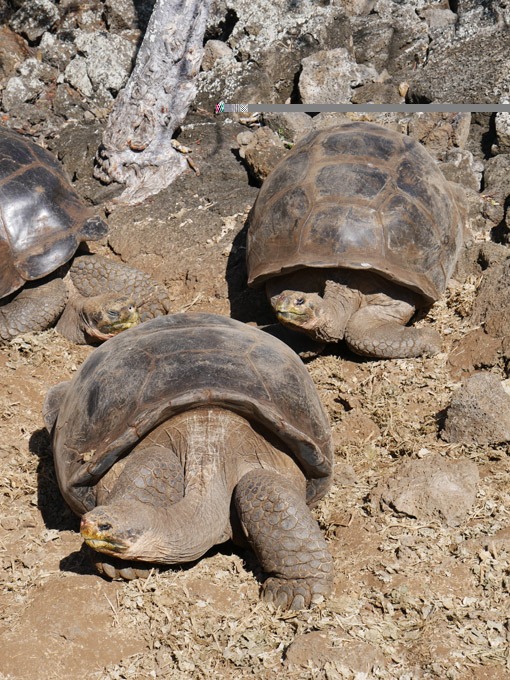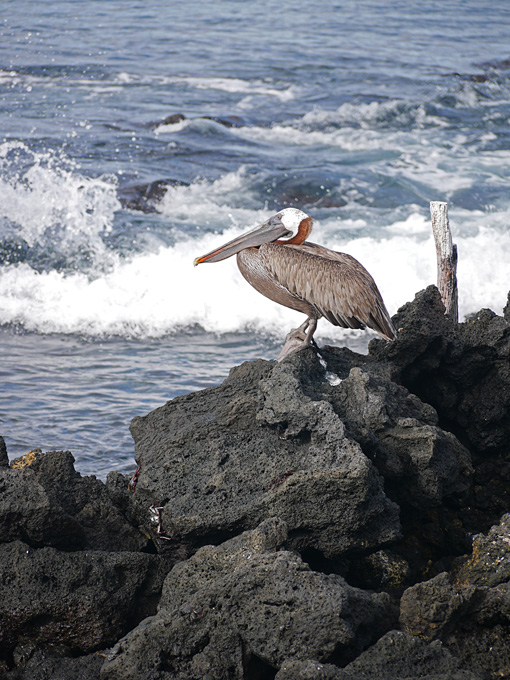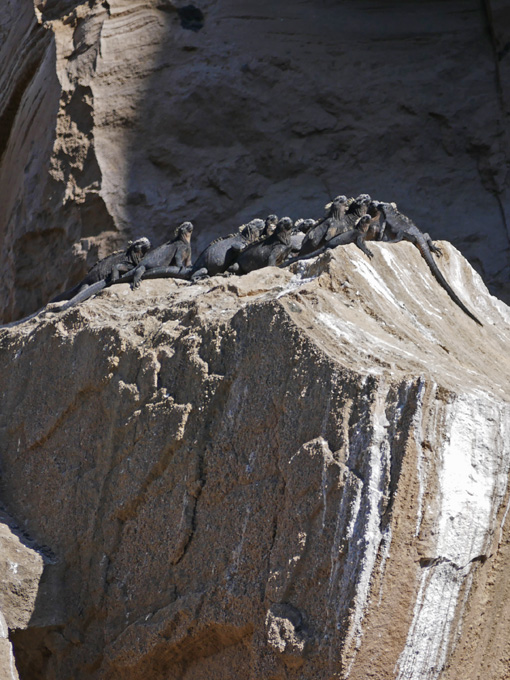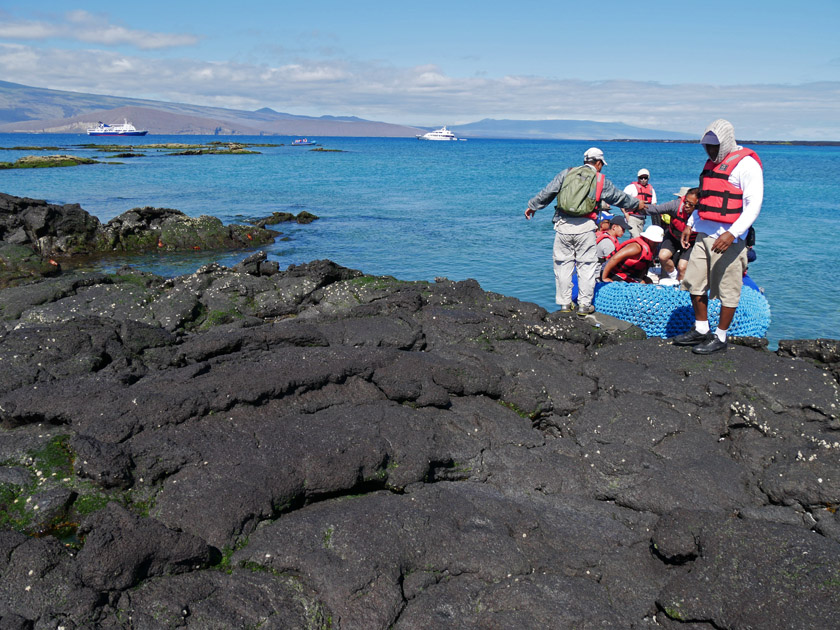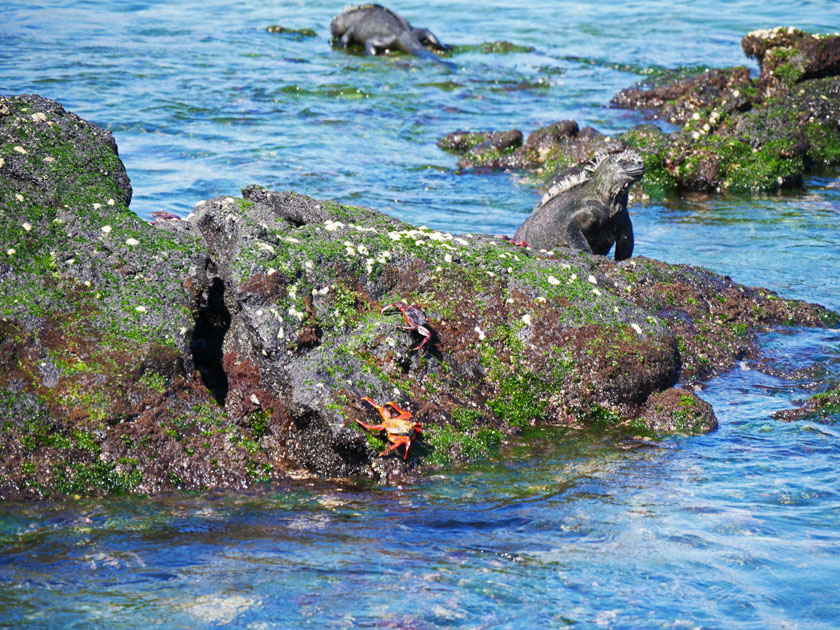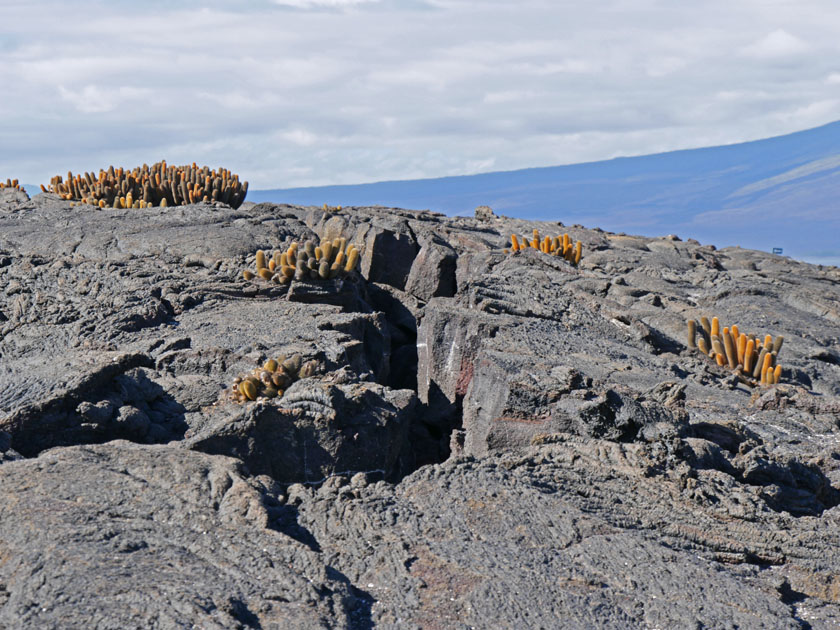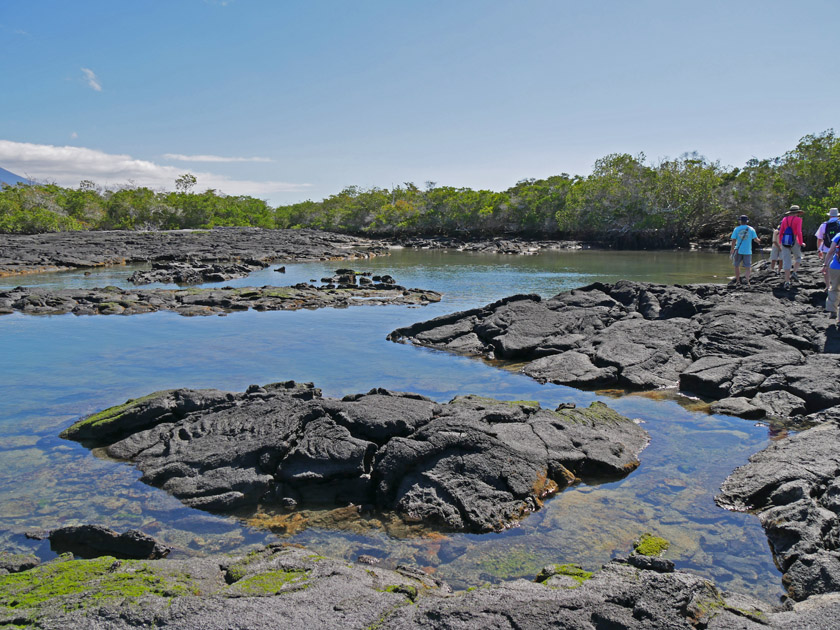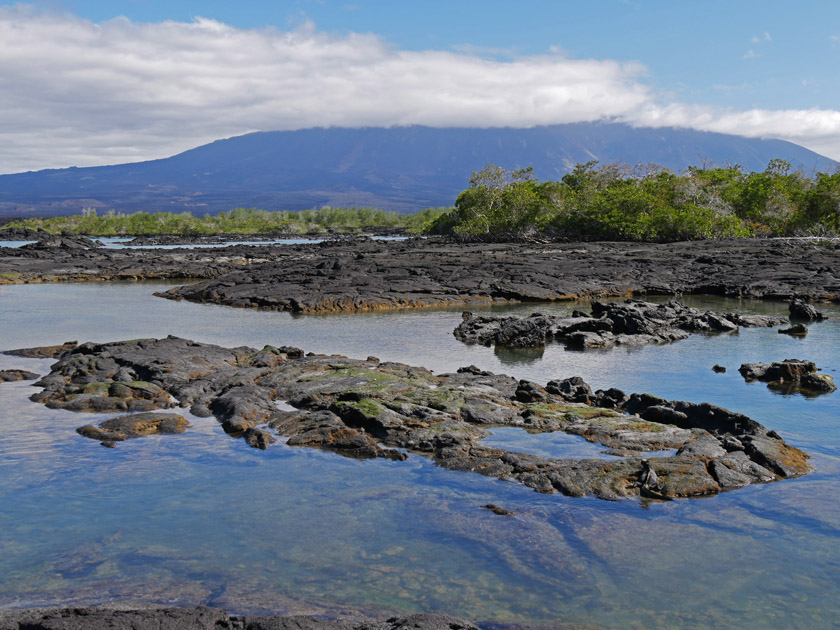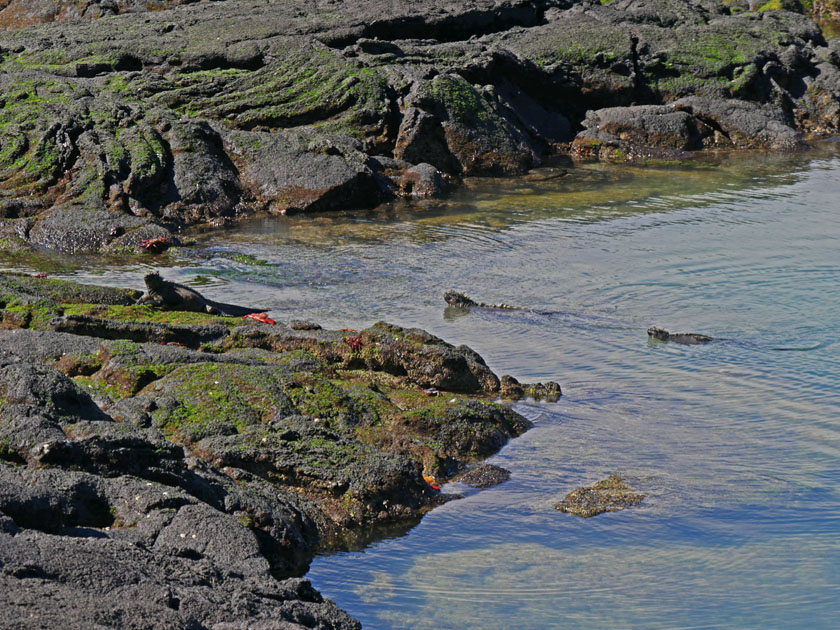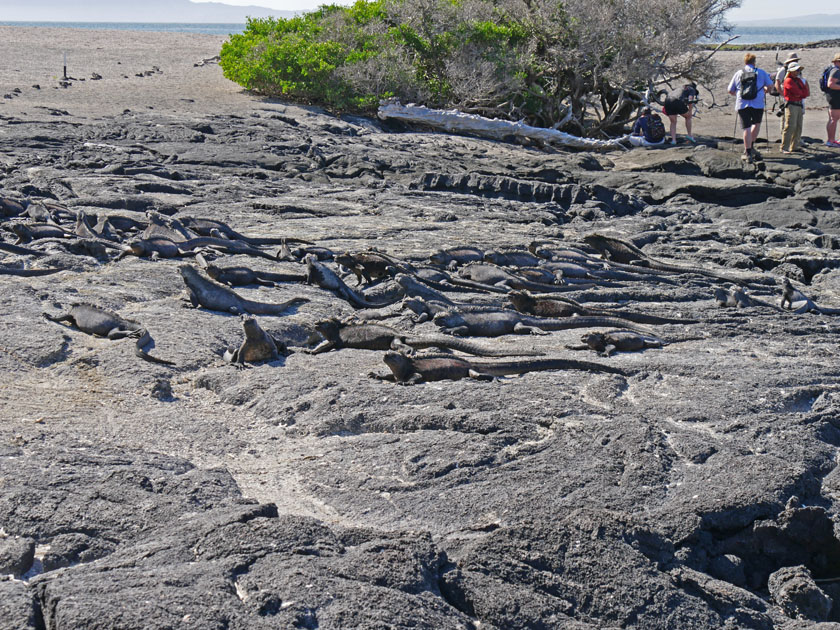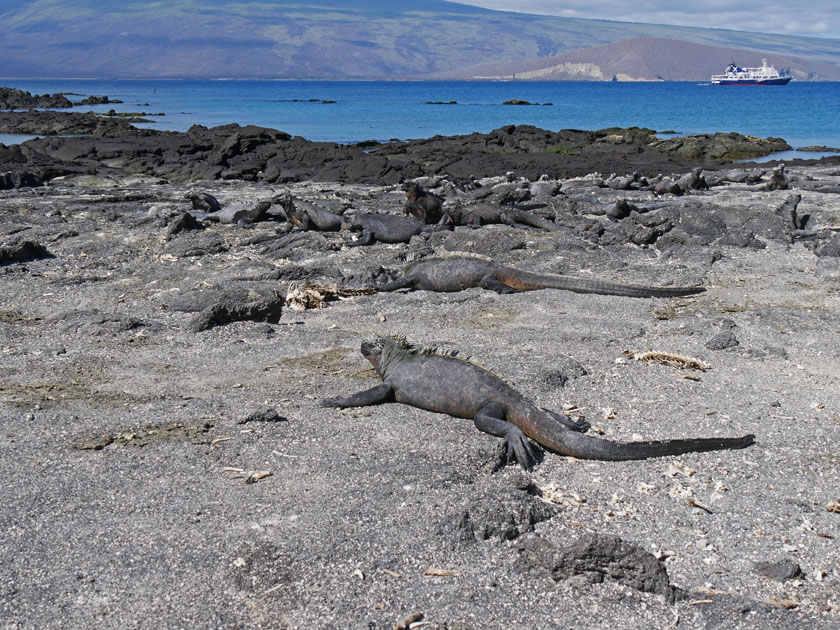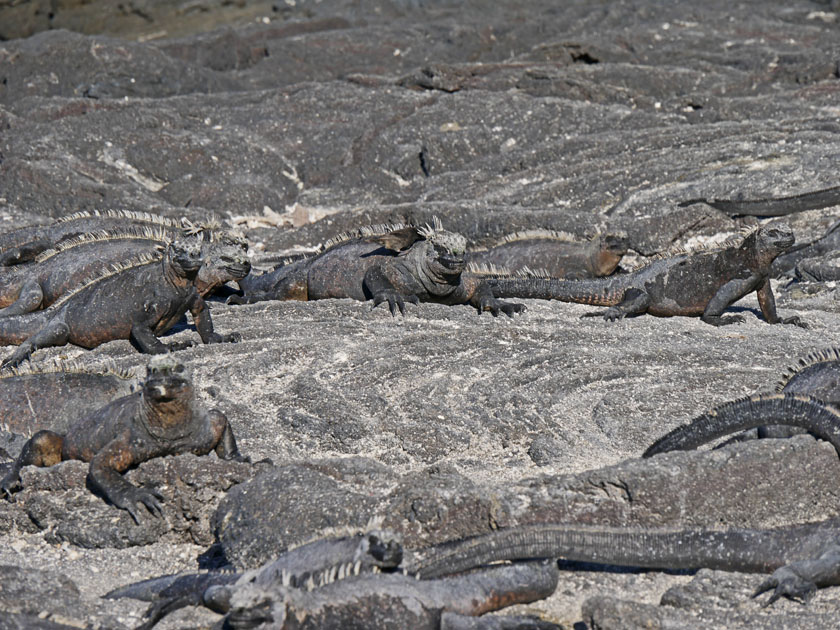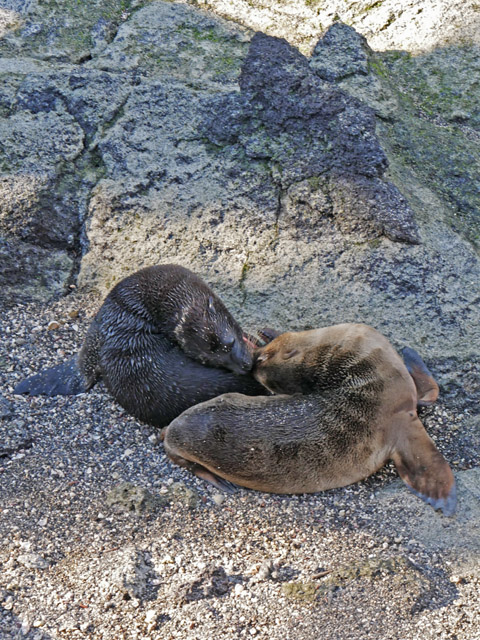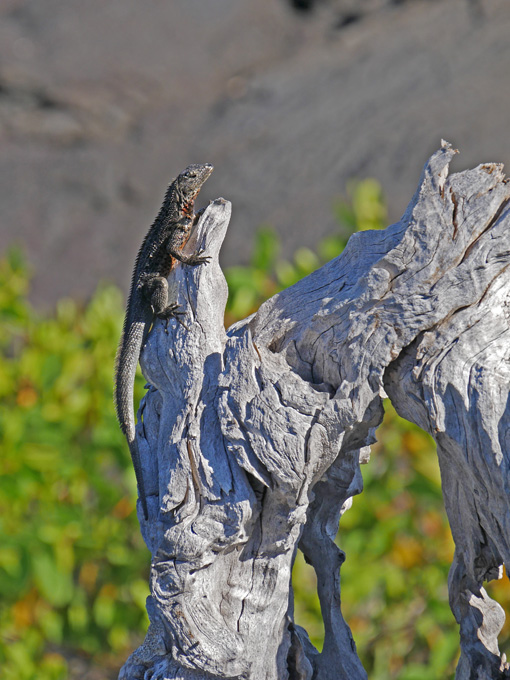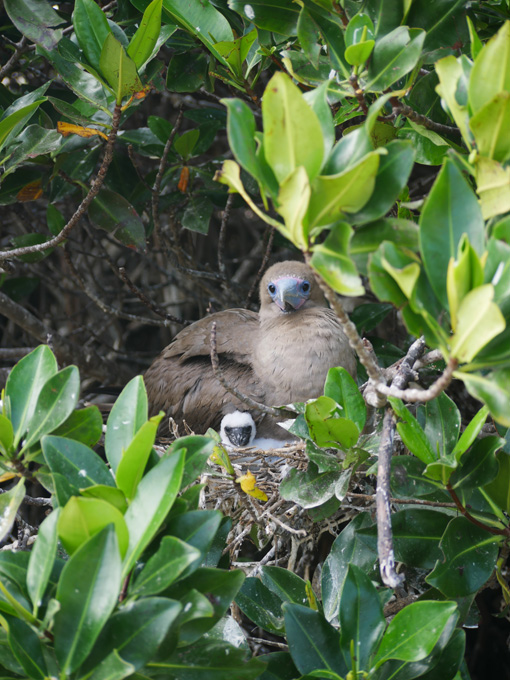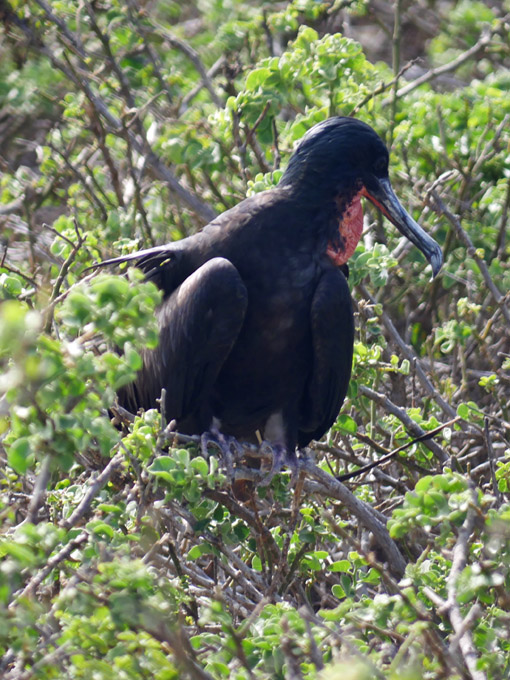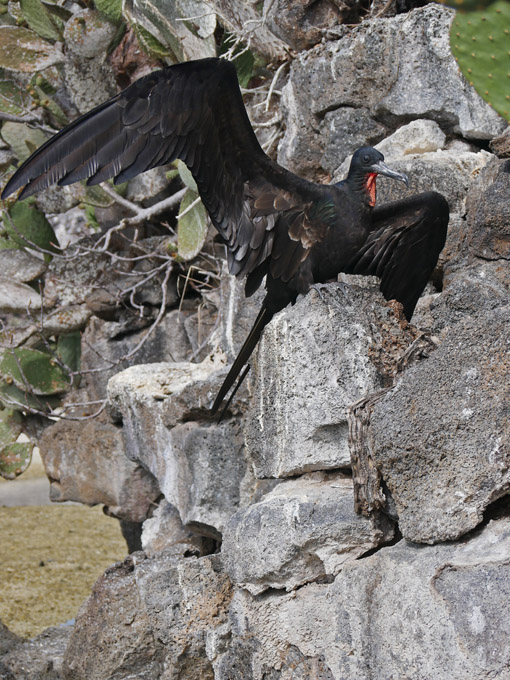Galapagos Islands, July 2017
Cruise Aboard the Celebrity M/S Xperience
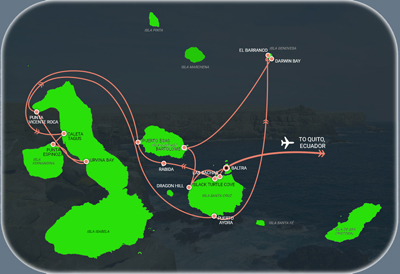 |
After a day tour of Quito, the expedition flew to Baltra, followed by a
short Zodiac ride to the Xperience. The cruise started at Santa Cruz, then Rabida, Santiago, Fernandina,
Isabela, Santa Cruz, Genovesa, Bartolome, and back to Santa Cruz. Returning to Baltra, the expedition flew
back to Quito. |
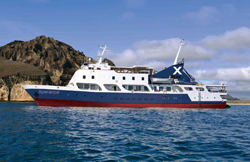 |
Click on an image to see a larger version,
hold cursor on image to see caption
Use arrow icons or
arrow keys to navigate on photo pages.
Viewing on a tablet? Try using the PDF file
Galapagos Islands PDF to swipe through the photos.
Quito, Ecuador
Intiñan Equator Museum, San Antonio de Pichincha
Rabida Island, Galapagos
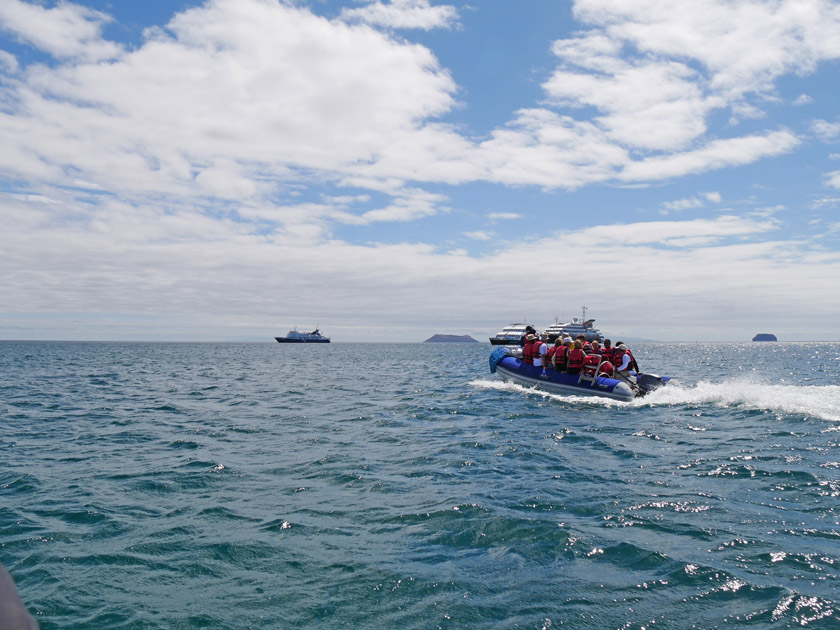 |
Rábida Island is a relatively small, arid island with steep slopes and
one of the most volcanically varied islands in the archipelago. Several small volcanic craters and the high
amount of iron in the lava give the island its distinctive red color and overall appearance. A visit to
Rábida’s visitor site begins with a wet landing on the maroon-colored
beach on the northern coast. Marine iguanas and sea lions are often seen resting in the shade
of the caves nearby. Rábida is one of the best places for visitors to see pelicans nesting up close.
Blue-footed and Nazca Boobies frequent the cliffs above. Behind the beach is a saltwater lagoon
in which Pintail Ducks and Common Stilts are frequently seen feeding. The inland trail is a good place
to observe land birds such as finches, Galapagos Doves, Yellow Warblers, and mockingbirds, as well
as the occasional snake. [Galapagos Conservancy, Inc.] |
Santa Cruz Island, Galapagos
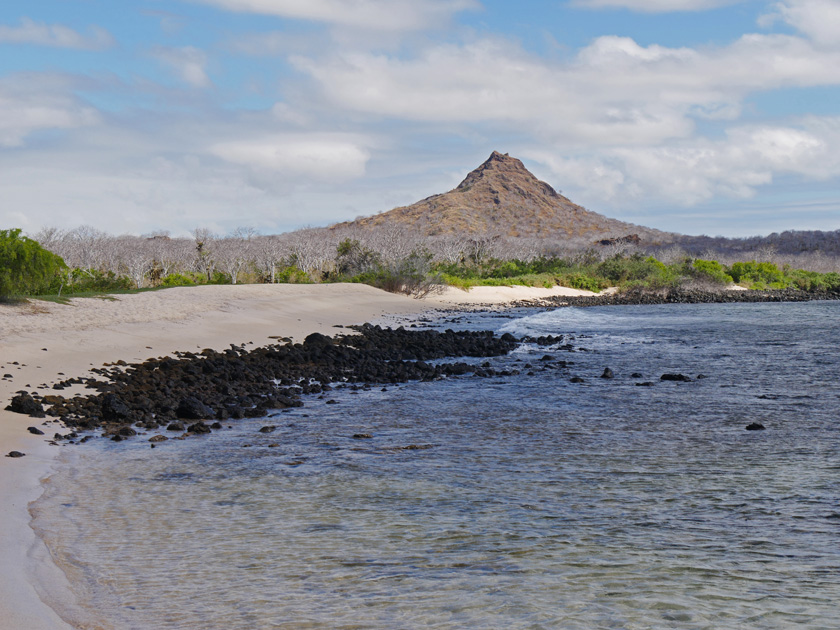 |
Santa Cruz is the second largest of the Galapagos Islands, with a
long history of human settlement and agriculture. Today, Santa Cruz is the tourist hub of the
Galapagos, centered around the island's largest city, Puerto Ayora. Puerto Ayora is home to
the headquarters of the Galapagos National Park and the Charles Darwin Research Station.
The Fausto Llerena Tortoise Center, with the Charles Darwin Foundation, began in 1965 to save
the giant tortoise population. As of 2008, more than 4,000 young tortoises from eight different
populations have been repatriated to their island of origin.
[Galapagos Conservancy, Inc.] |
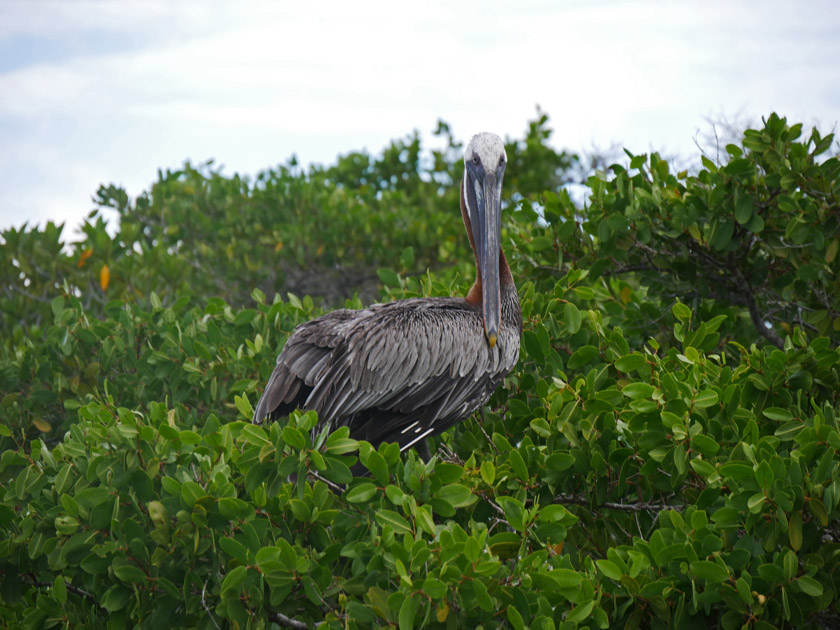 |
Giant Tortoise Reserve, Santa Cruz Highlands
Santiago Island, Galapagos
Santiago was the second of the Galapagos
Islands visited by Charles Darwin. Darwin’s
record of land iguanas is the only one that indicates there was a thriving population,
as today land iguanas are extinct on Santiago. Goats, pigs, and donkeys were
released on Santiago in the 1800s, destroying the natural woodlands, pigs
nests of many of the native species, including giant tortoises,
sea turtles, and Galapagos petrels. The island was declared pig-free in
2000, and goat- and donkey-free in 2006.
Sullivan Bay provides a unique opportunity to walk across a recent lava
flow. At the southern end of the bay is Puerto Egas
where a trail leads along the coast to the fur seal grottoes.
[Galapagos Conservancy, Inc.] |
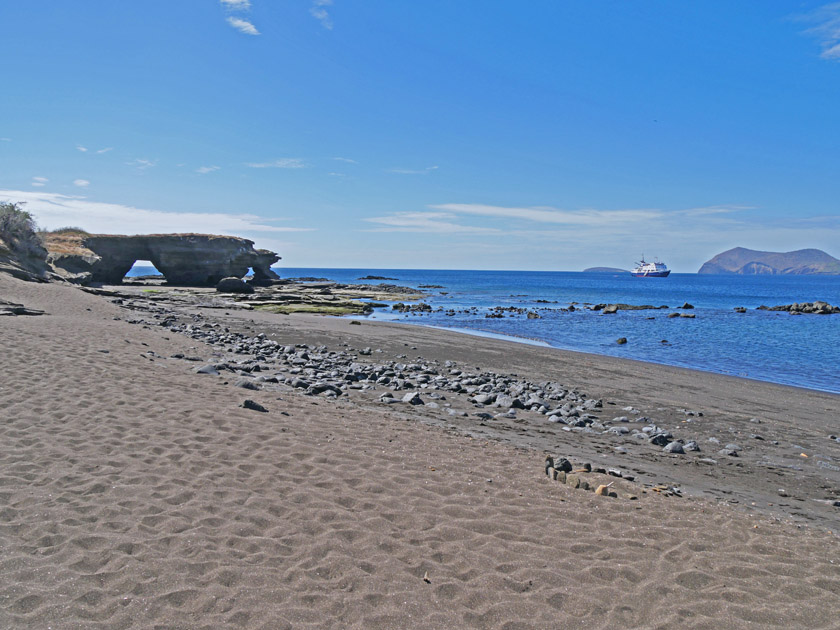 |
 |
 |
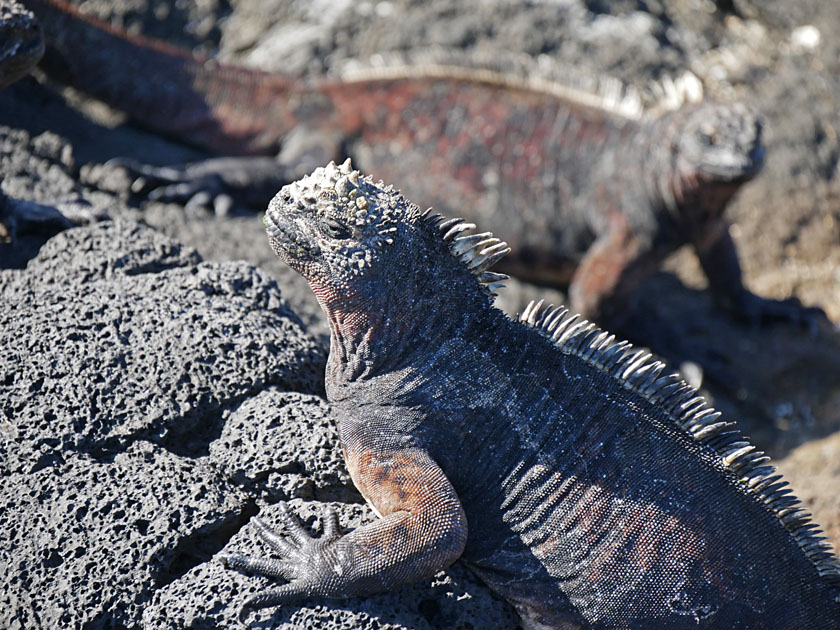 |
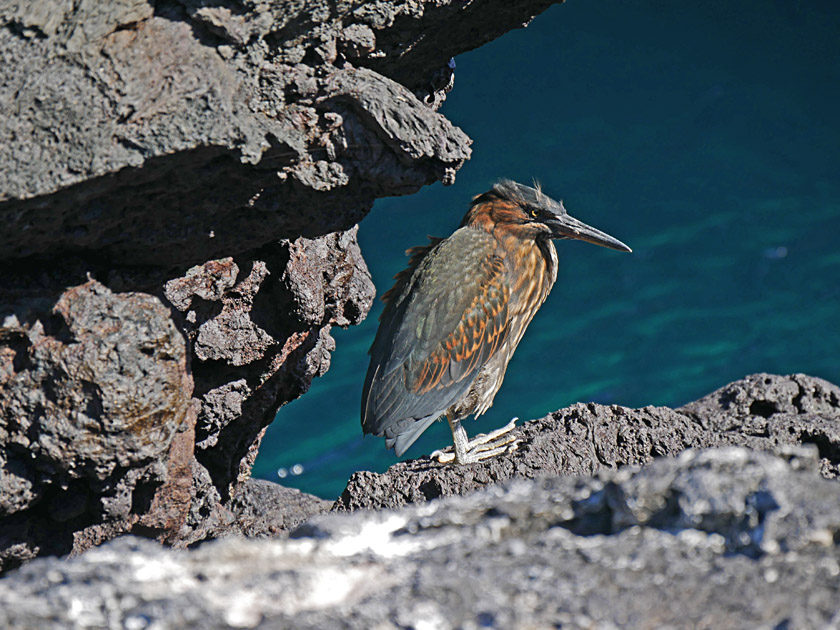 |
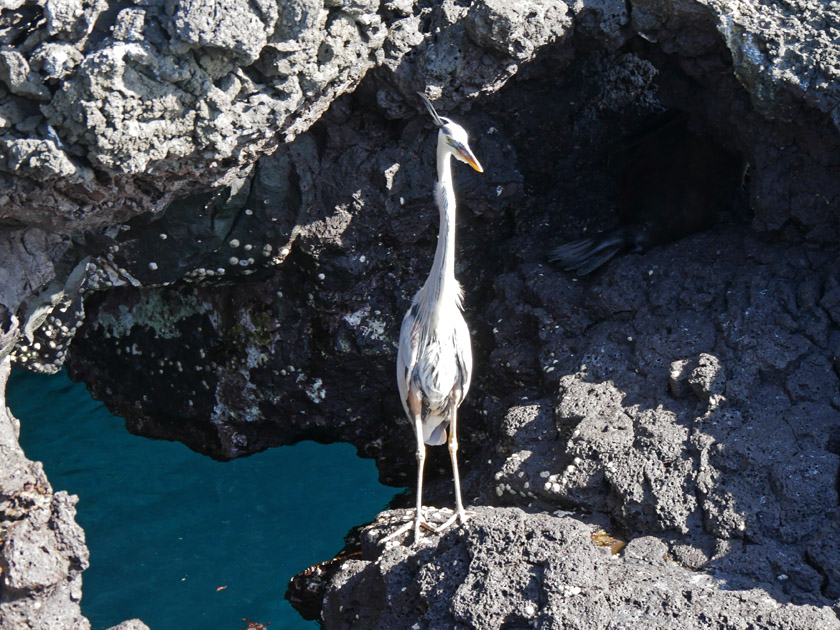 |
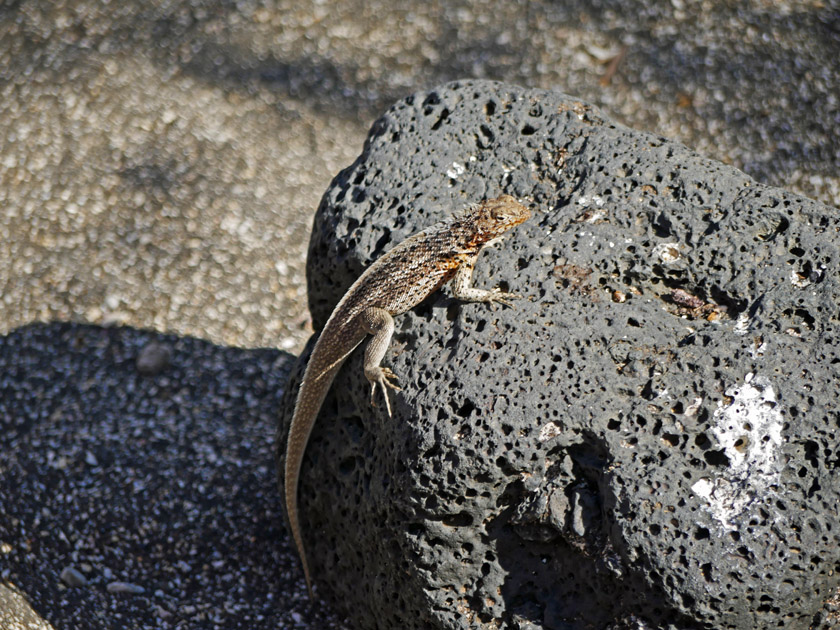 |
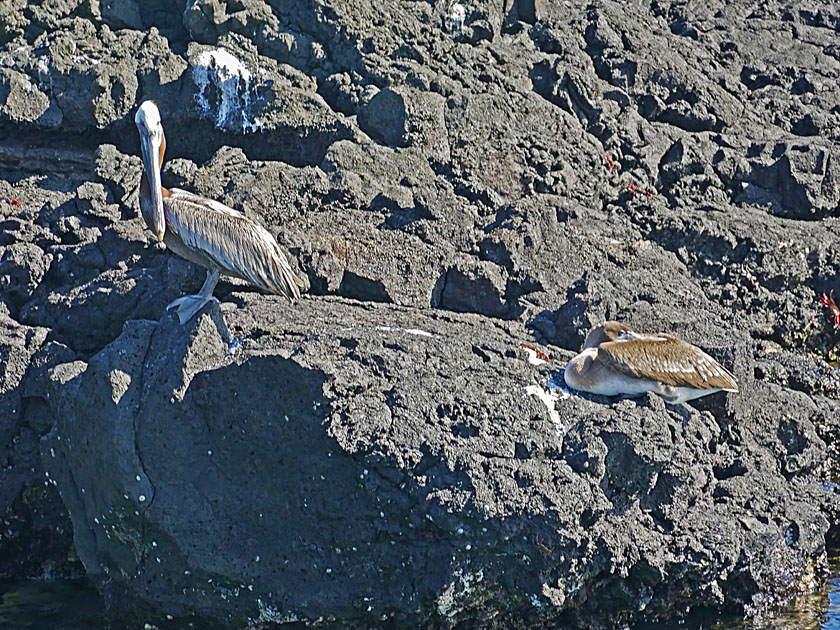 |
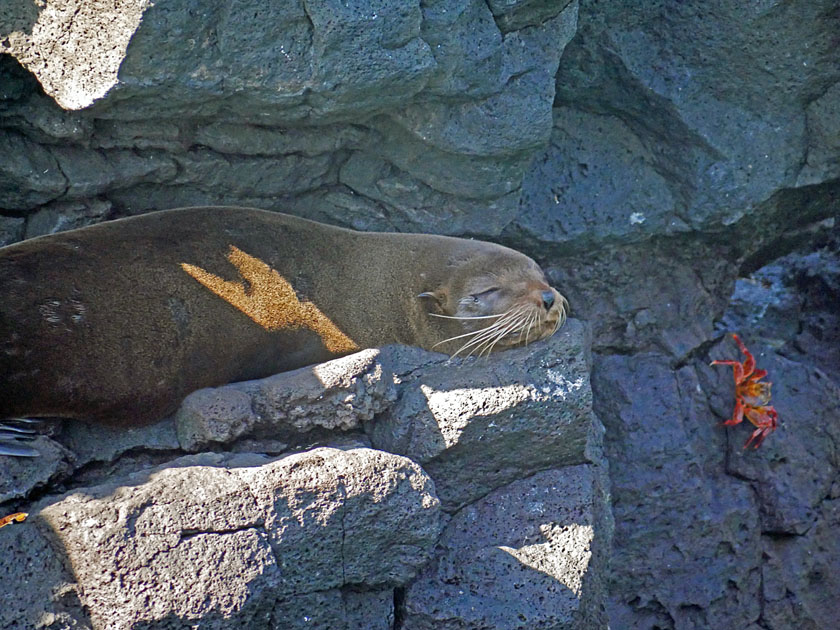 |
 |
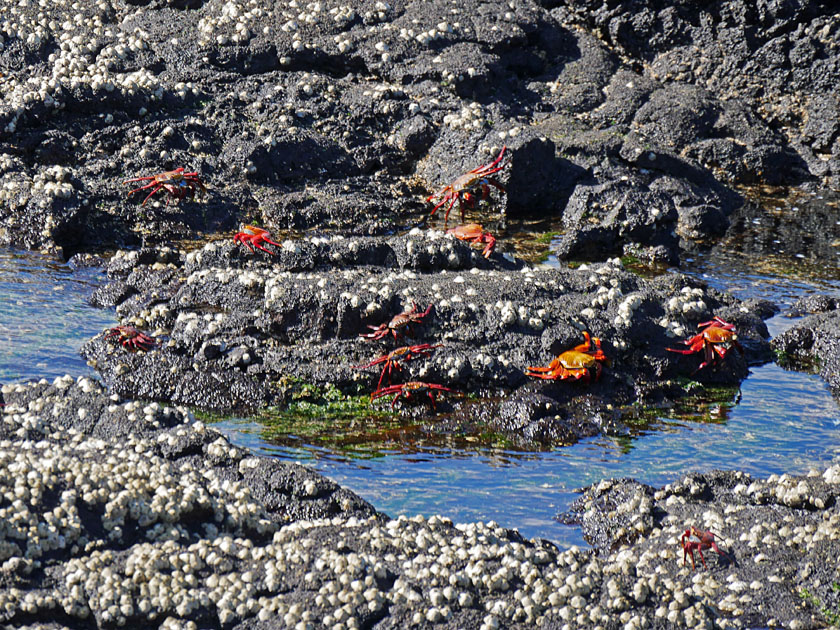 |
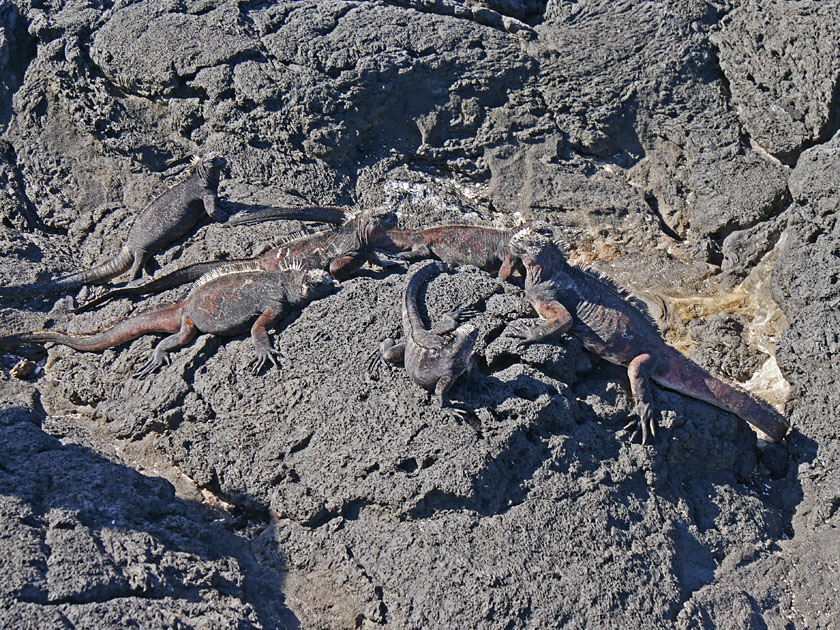 |
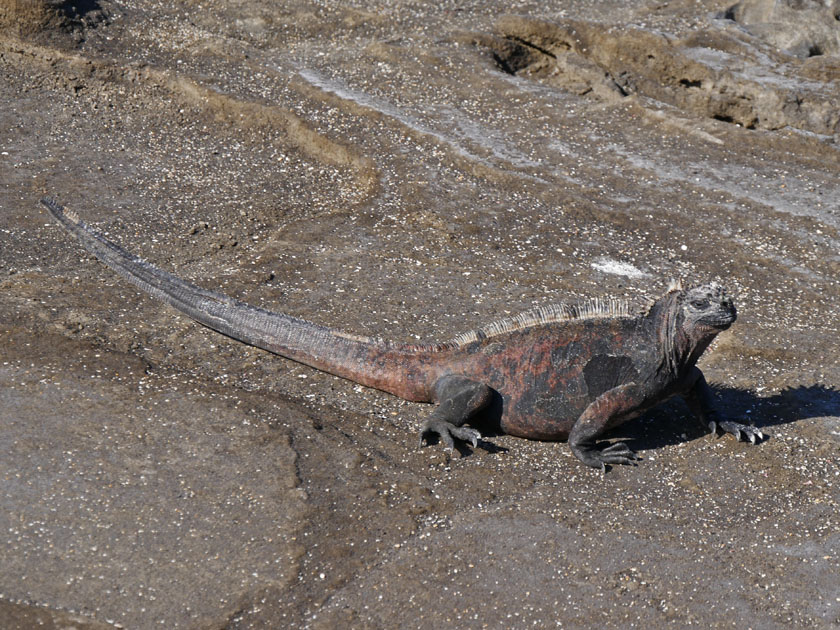 |
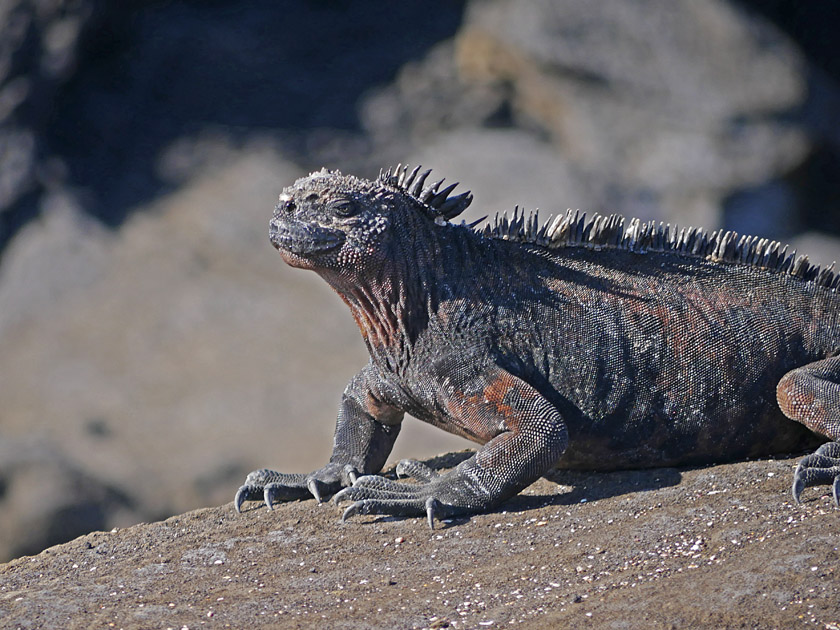 |
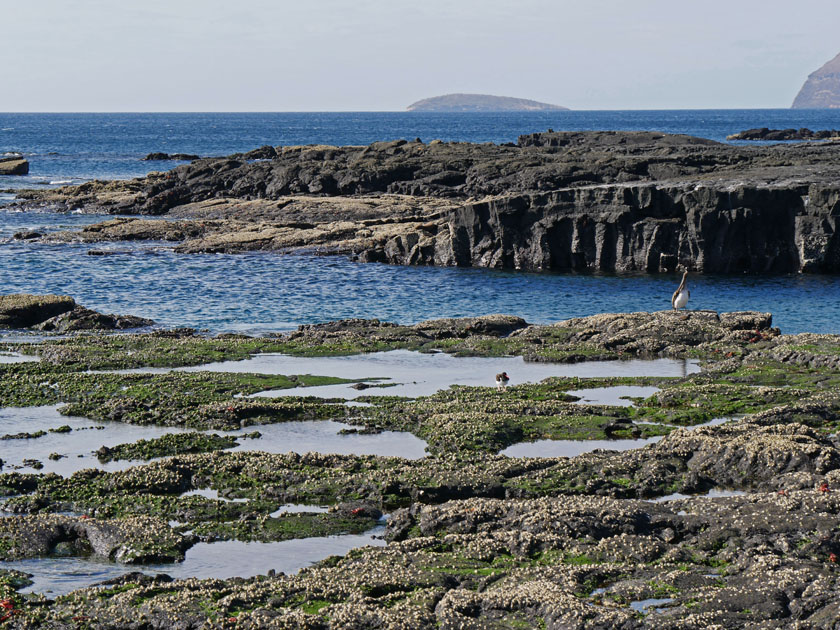 |
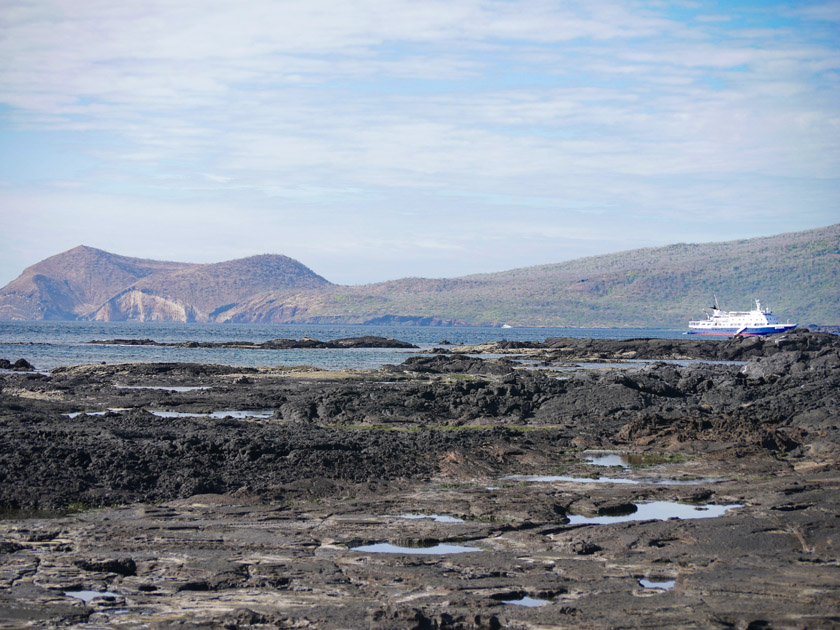 |
Isabela Island, Galapagos
|
The seahorse-shaped Isabela Island is the largest of all the
islands, and greater in size than all of the other islands combined. Darwin visited
Tagus Cove in 1835. Isabela Island was formed by the joining of six shield
volcanoes: Ecuador, Wolf, Darwin, Alcedo, Sierra Negra, and Cerro Azul.
All of the volcanoes except Ecuador are still active. Wolf Volcano, at
1707 m, is the highest point in the Galapagos Archipelago. Wolf and Ecuador volcanoes
lie directly on the equator. Isabela provides examples of the
geologic forces that created the Galapagos Islands, including uplifts at Urbina Bay, tuff
cones at Tagus Cove, and pumice on Alcedo Volcano.
At Tagus Cove,
a short, steep hike passes Darwin Lake, which sits within a tuff cone. This site
is an excellent place for
viewing landbirds, including ground and tree finches, hawks, yellow warblers and
large-billed flycatchers. An occasional land iguana or giant tortoise can also sometimes
be observed. Visits to Punta Vicente Roca are solely by water. The impressive geological
formations provide a beautiful backdrop for numerous nesting birds, including Blue-footed
and Nazca boobies, gulls, storm petrels, and Brown Noddy Terns.
[Galapagos Conservancy, Inc.]
|
Fernandina Island, Galapagos
Genovesa Island, Galapagos
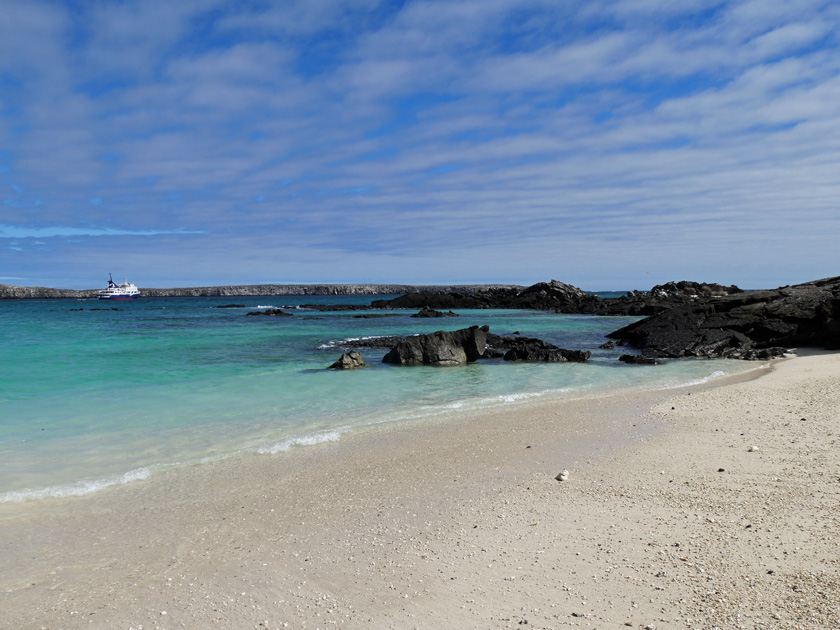 |
Genovesa Island is a horse-shoe shaped
island that was formed from the eruption of a shield volcano and the eventual
collapse of one side of the caldera. Genovesa has developed a reputation as
'the bird island' because of the numerous and varied bird species that nest
there: frigate birds, Nazca and Red-footed Boobies, Swallow-tailed Gulls,
storm petrels, Red-billed Tropicbirds, finches, and mockingbirds are among
the bird species. Genovesa is one of the few places in the Galapagos Islands
where Red-footed Boobies are found en masse.
|
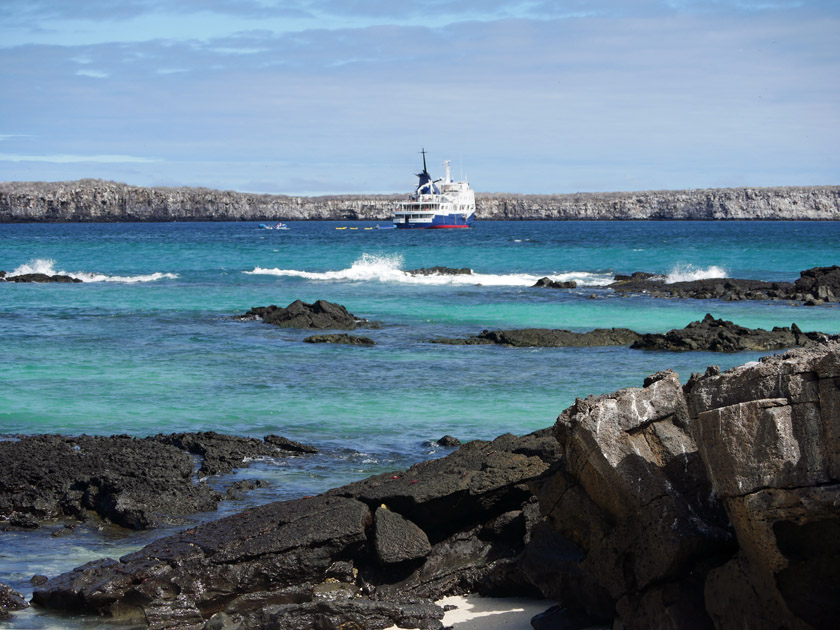 |
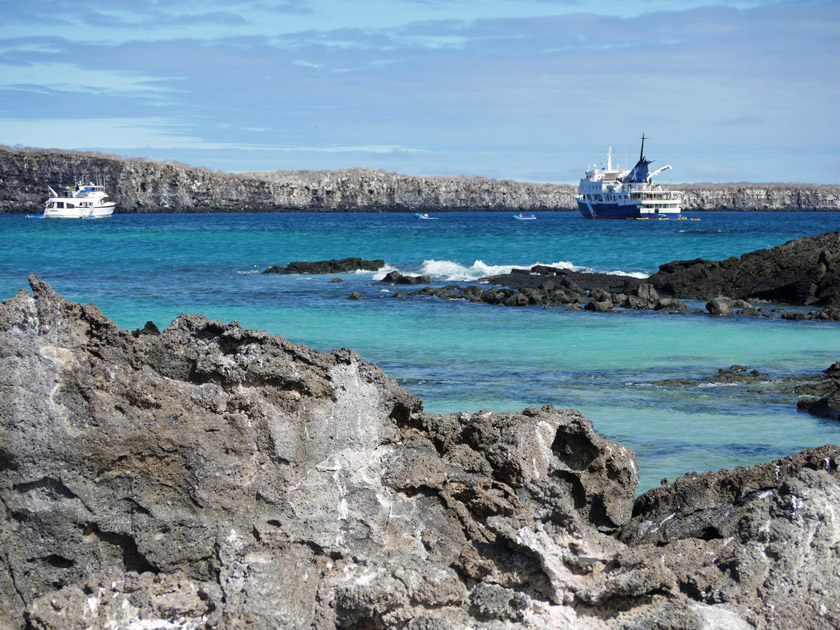 |
At Prince Philip’s Steps site, visitors are dropped off at a steep stairway
that begins on rocks at the foot of a path that leads through a seabird
colony full of Nazca and Red-footed Boobies. At the plateau, the trail
continues past more nesting booby colonies. Visitors with keen eyes may catch
a glimpse of a Short-eared Owl stalking its petrel prey along the island’s
eastern cliffs. Disembarking at Darwin Bay Beach, a trail
heads west along a tidal lagoon and then up a rocky hill that leads to a
point overlooking the cliffs and Darwin Bay. Visitors will see pairs of
Swallow-tailed Gulls, Lava
Gulls, and Yellow-crowned and Lava Herons. This is one of
the few places in the islands where visitors are guaranteed to see Red-footed
Boobies, with their bright red prehensile feet and contrasting blue bills. It is
estimated that more than 200,000 Red-footed Boobies live in the trees and
bushes of Genovesa. [Galapagos Conservancy, Inc.] |
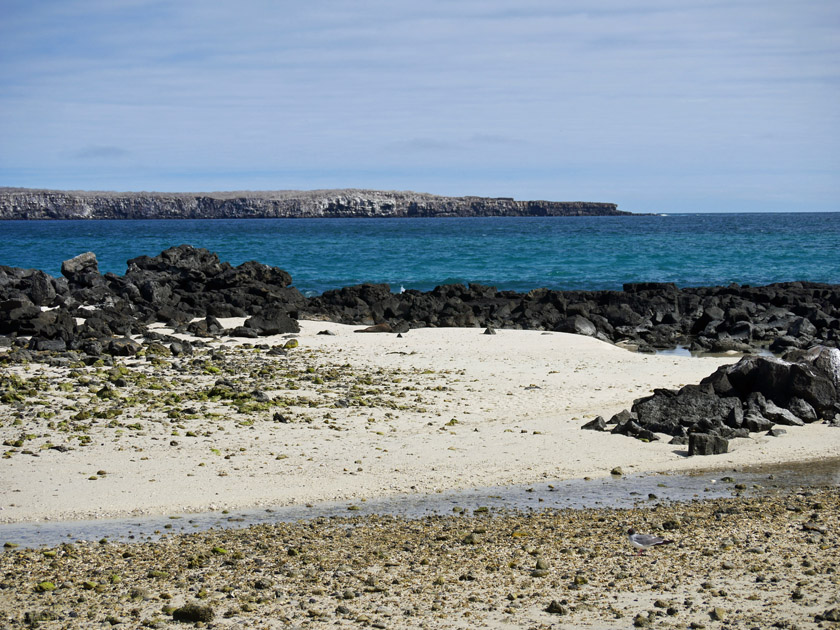 |
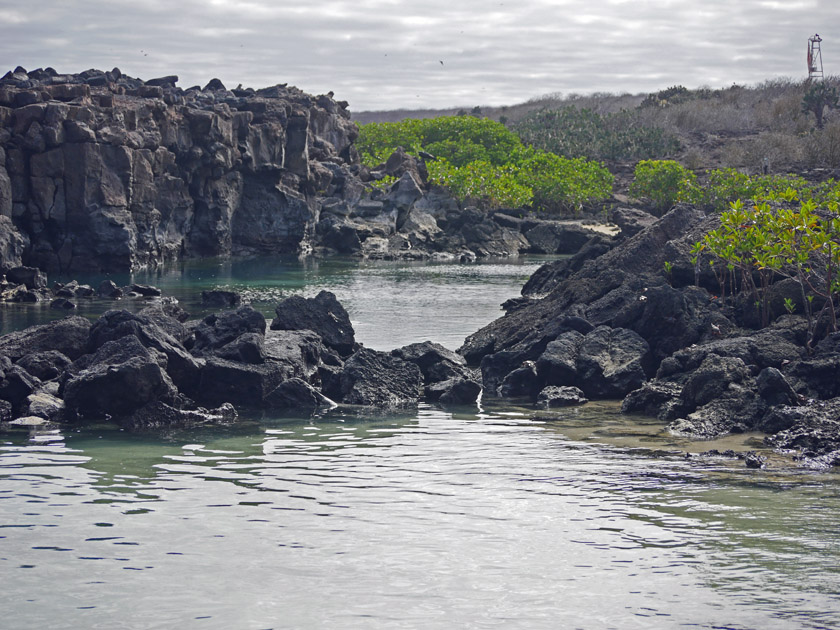 |
Bartolomé Island, Galapagos
Bartolomé Island is a barren islet in Sullivan
Bay to the east of Santiago Island. Bartolomé is home to a distinctive and
recognizable site of the archipelago: Pinnacle Rock, a volcanic cone that
was formed when magma was expelled from an underwater volcano. Visitors to
Bartolomé may recognize the island and Pinnacle Rock from the 2003
blockbuster movie "Master and Commander." Landing across the small bay
opposite Pinnacle Rock, visitors climb a 600-m trail to the
114-m summit that provides spectacular views of Pinnacle Rock, the immense
black lava flows at Sullivan Bay and the rest of Santiago Island.
Bartolomé is the most visited and most photographed island in Galapagos.
Birdwatchers should be on the lookout for Galapagos
Penguins, herons, and Galapagos Hawks. The Galapagos Penguins, the second
smallest penguin species in the world, have established a small breeding
colony in a cave behind Pinnacle Rock.
[Galapagos Conservancy, Inc.] |
